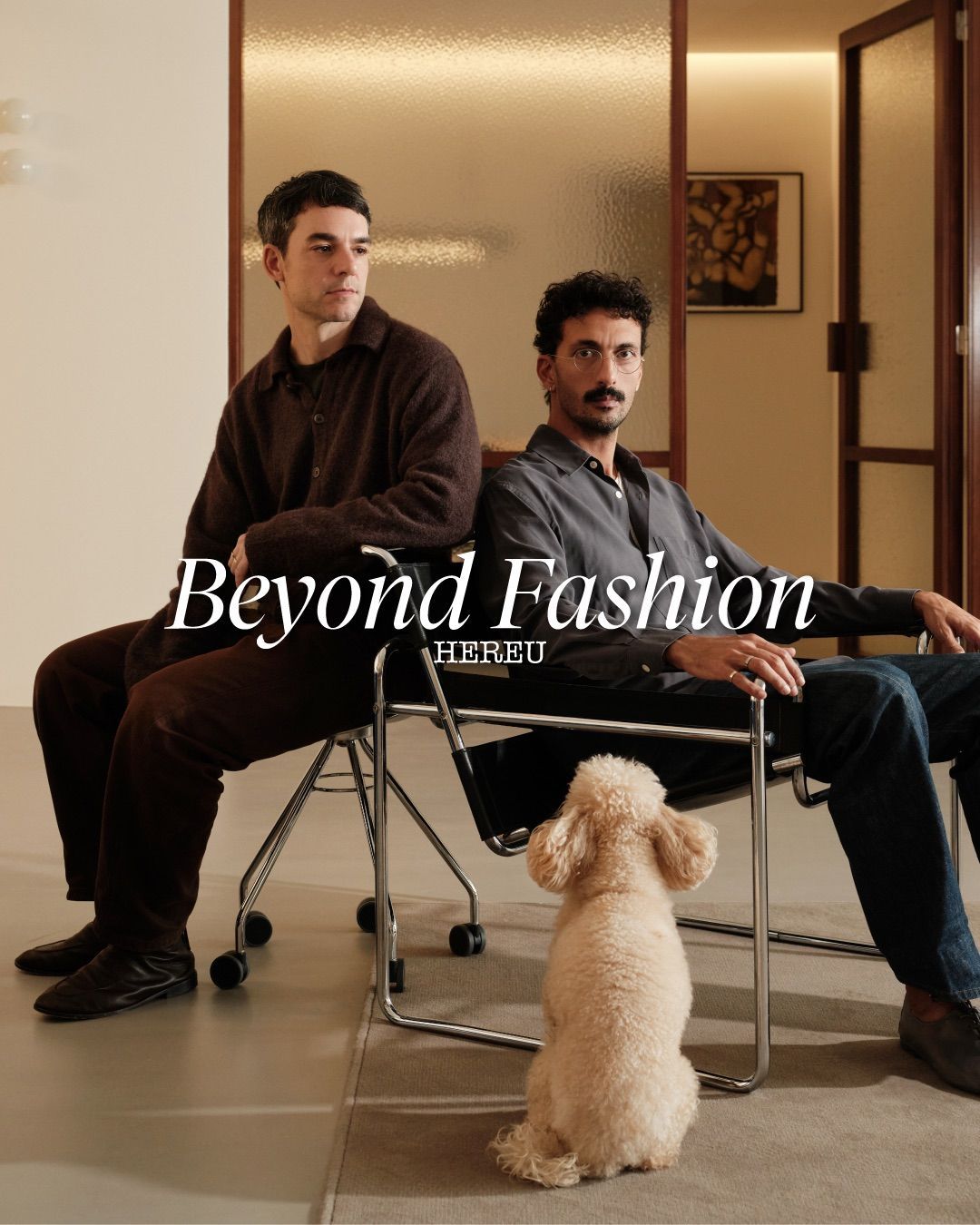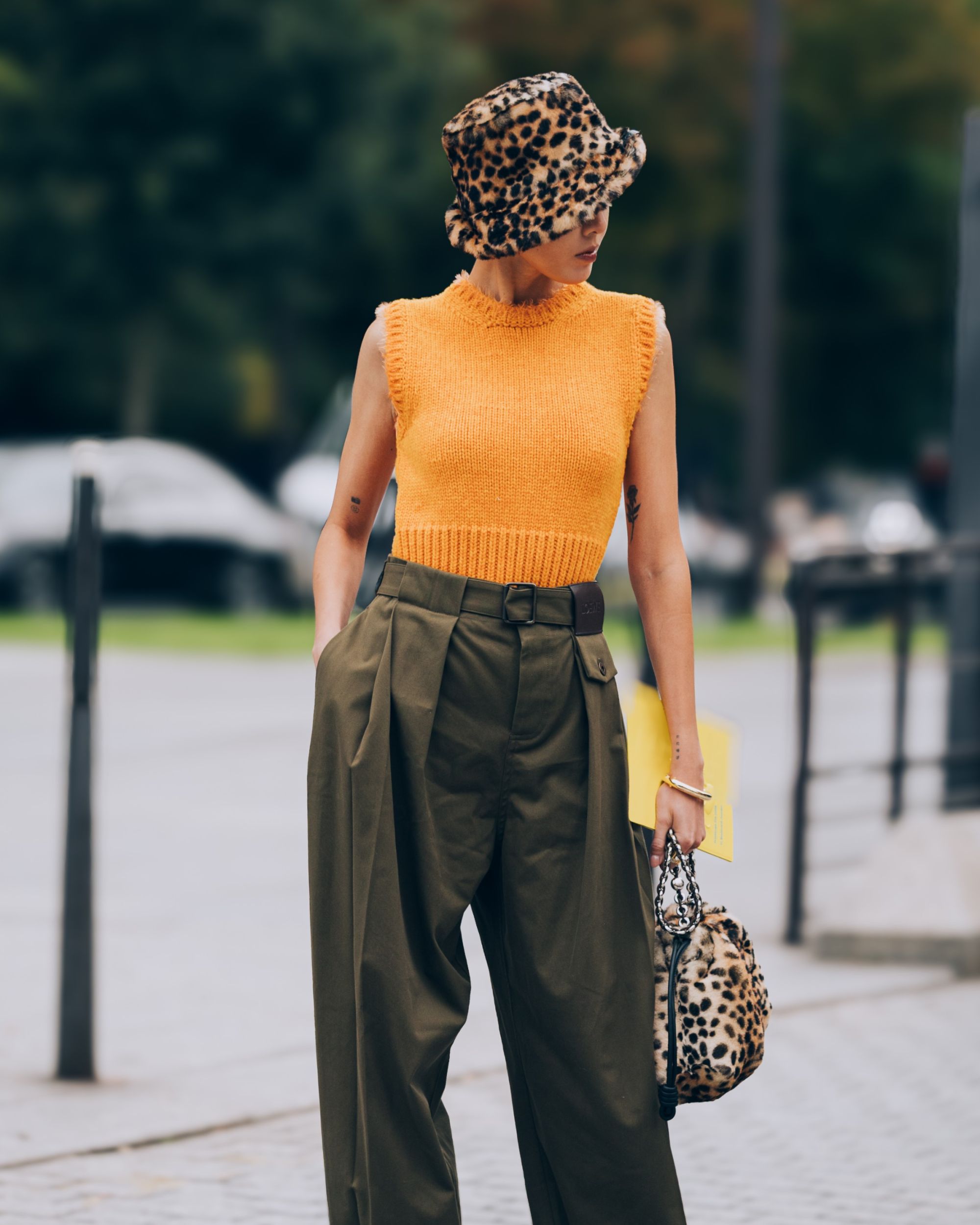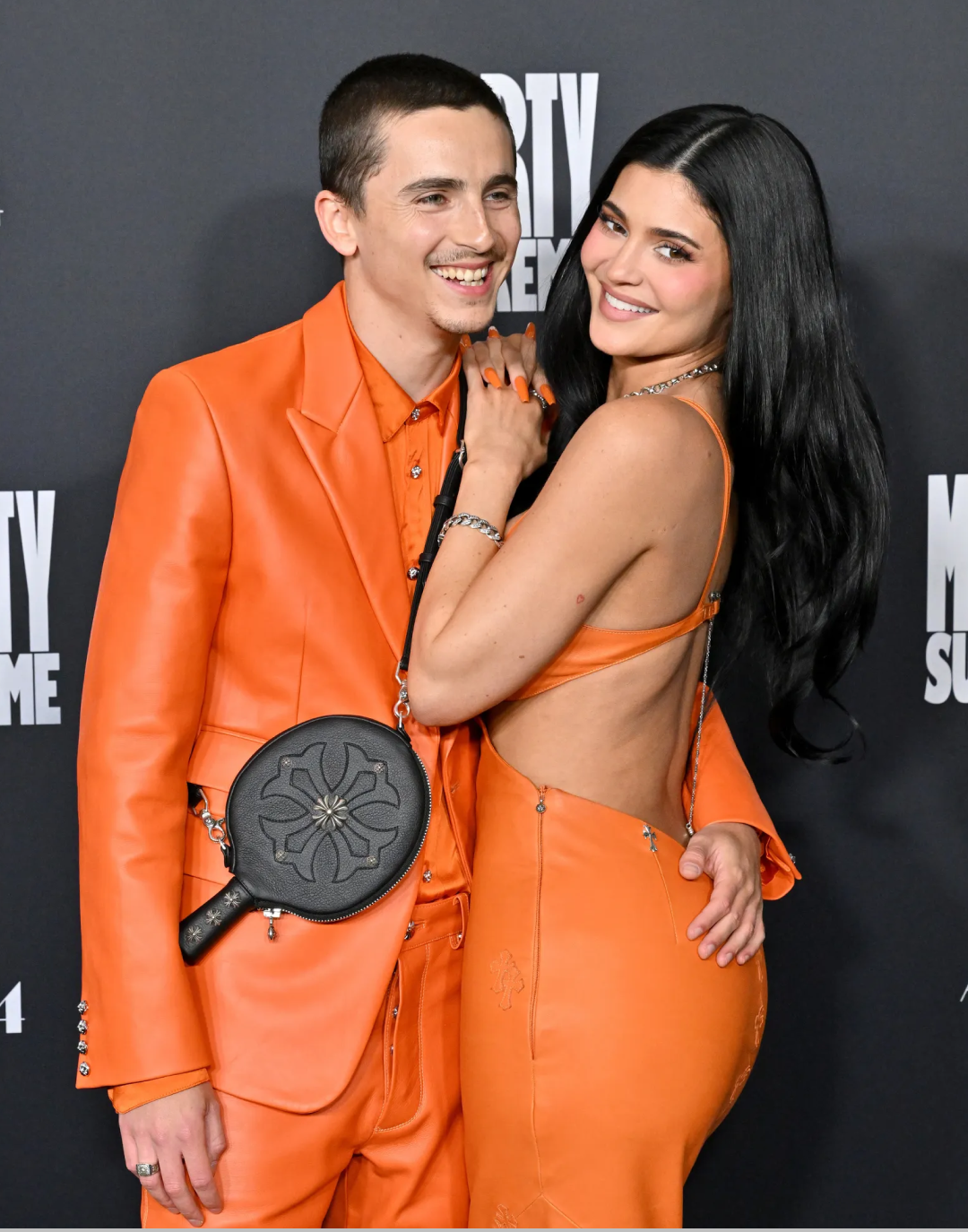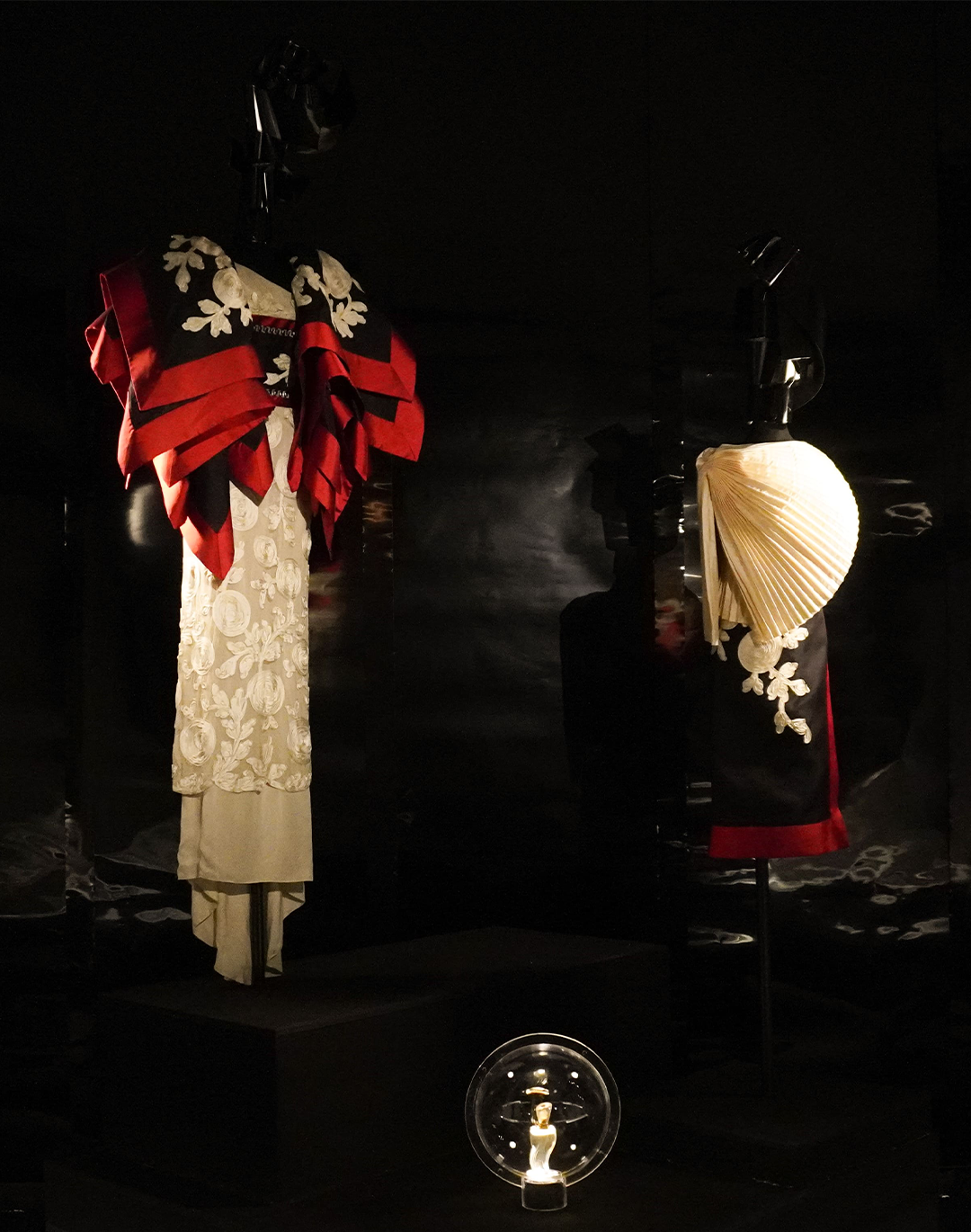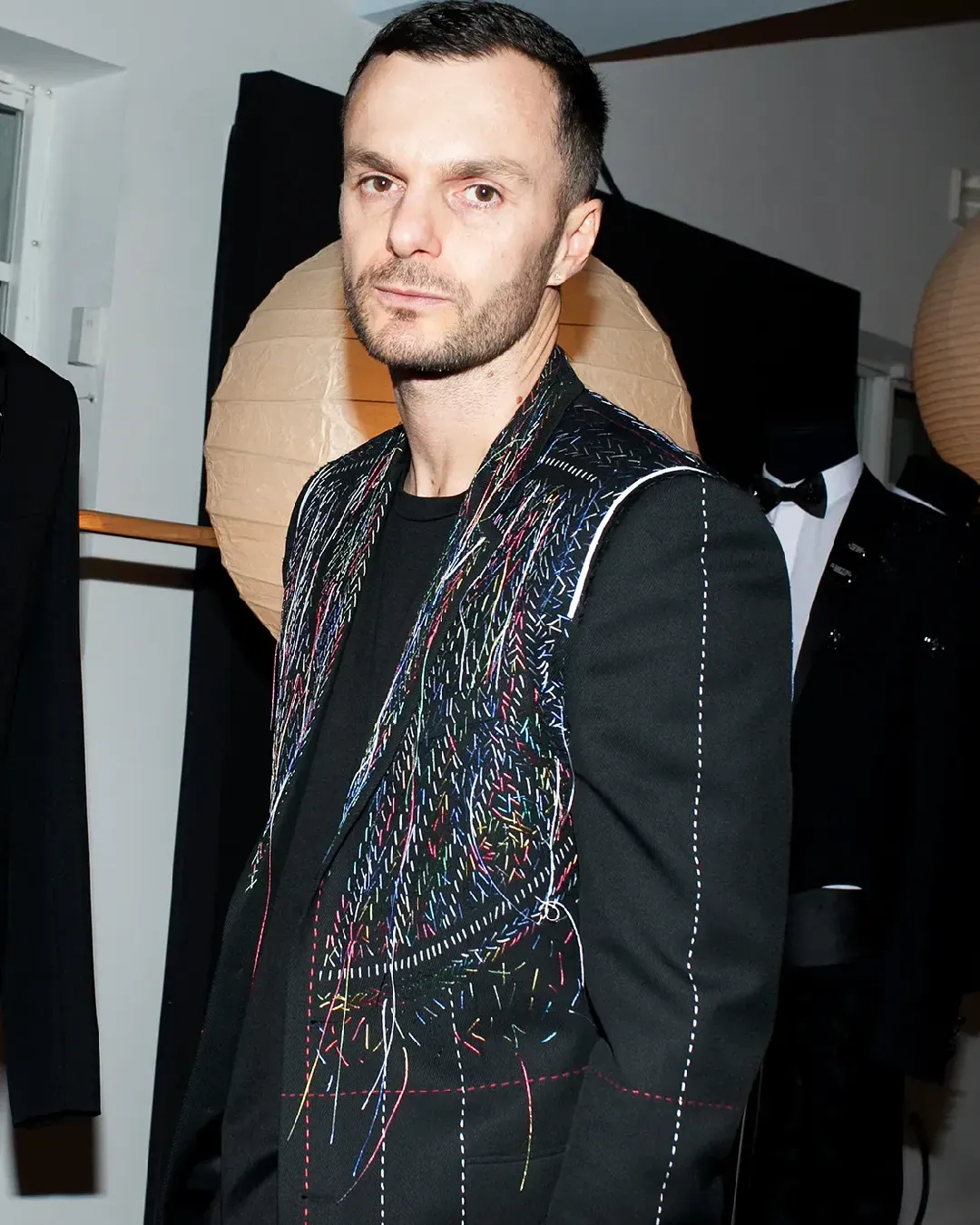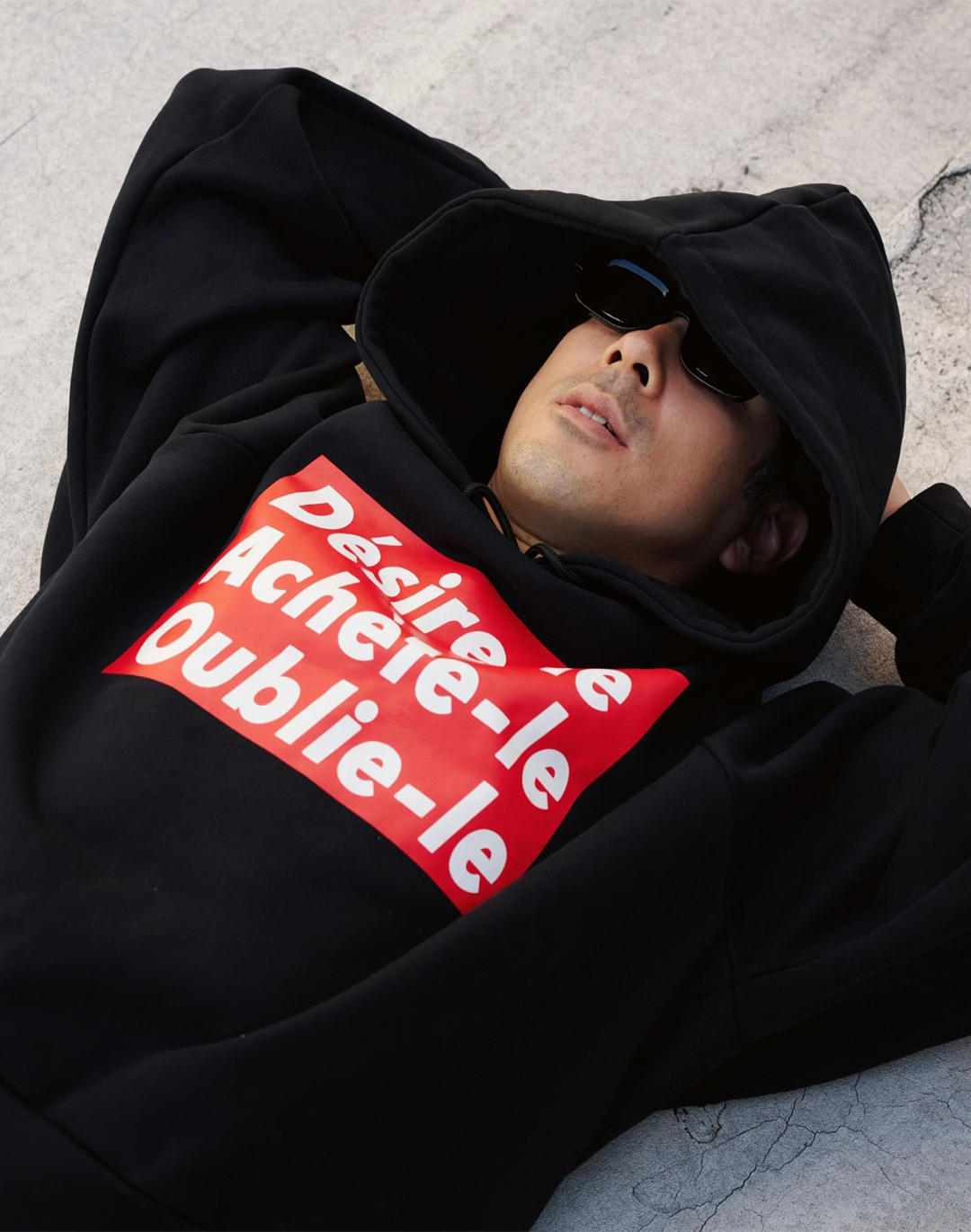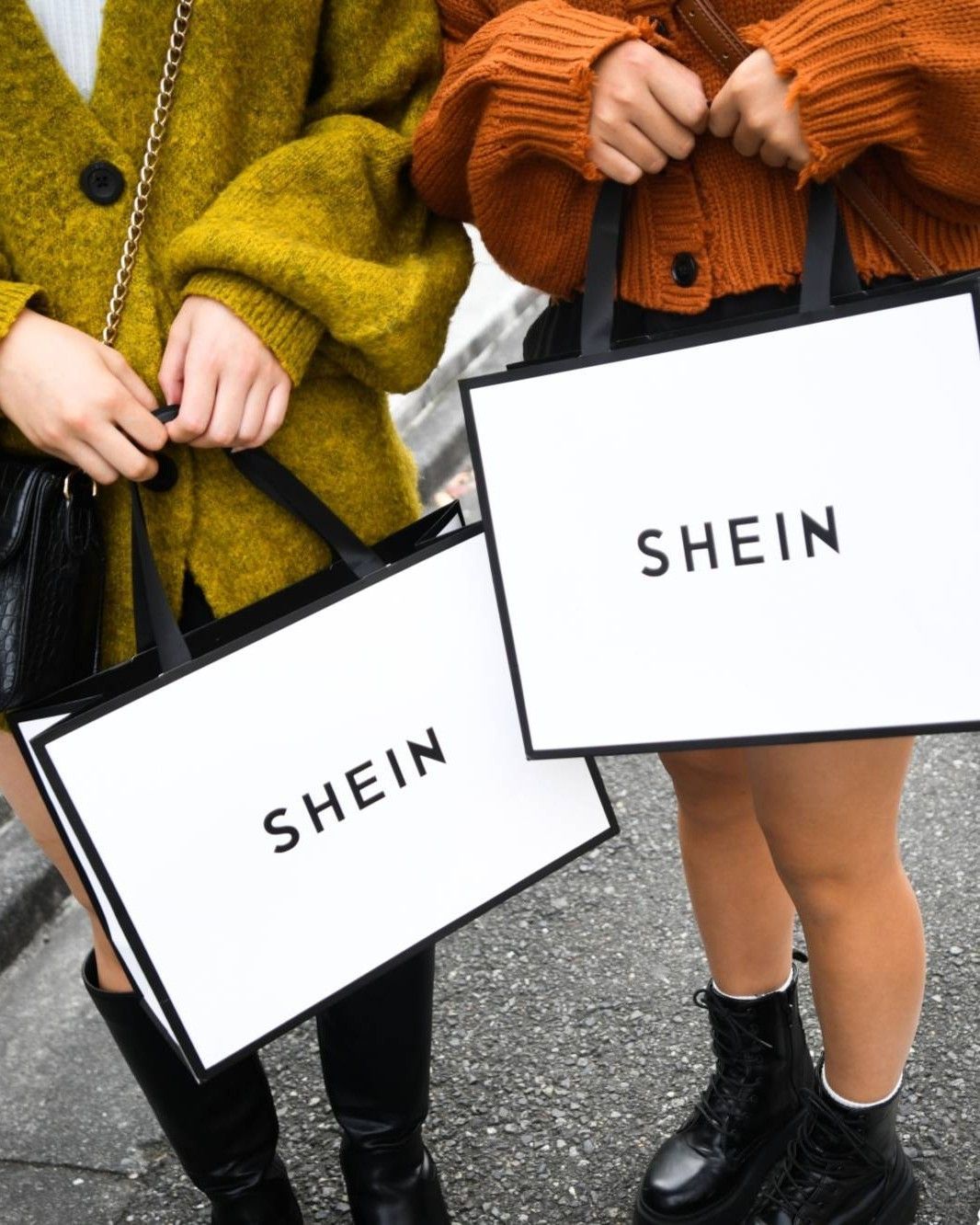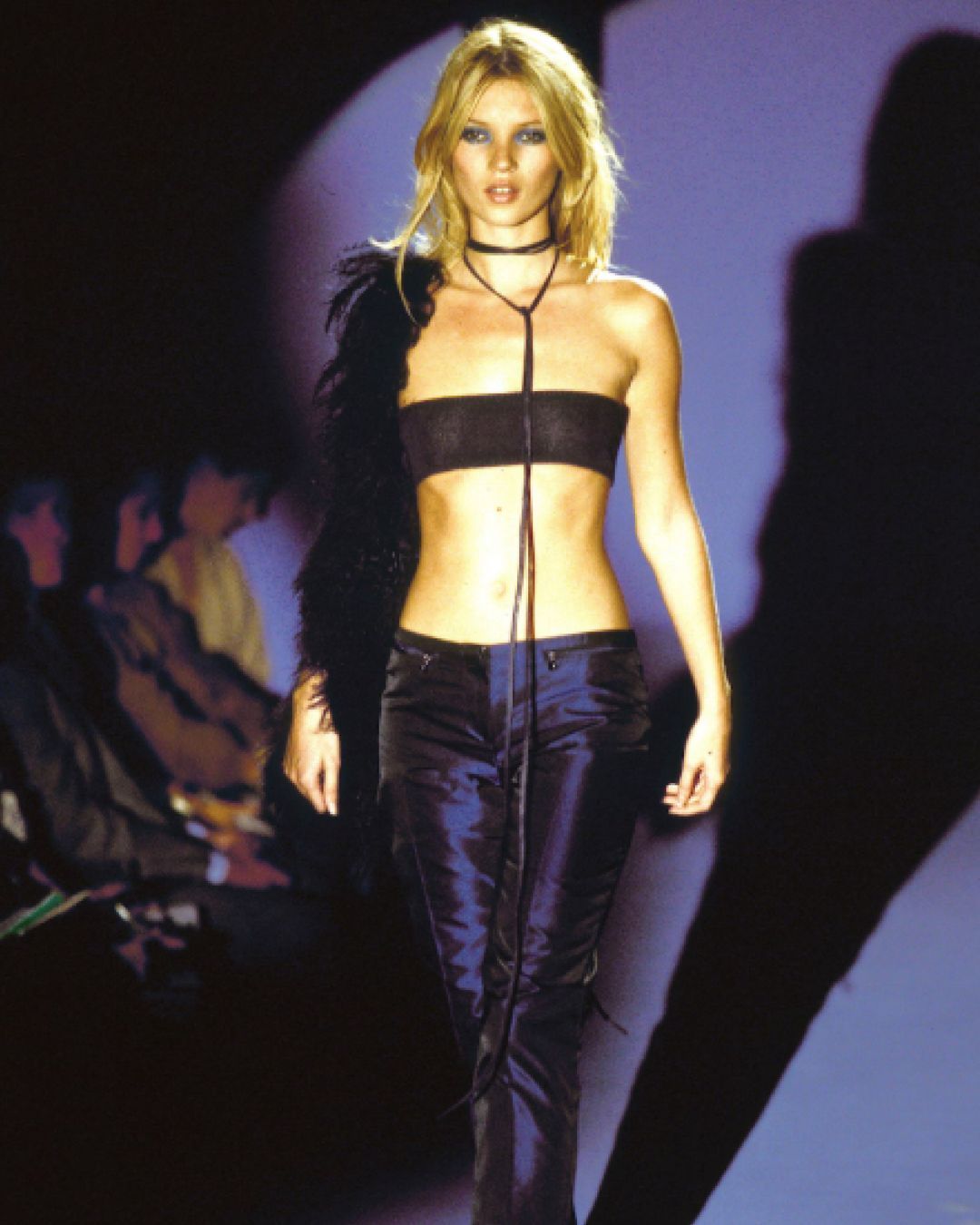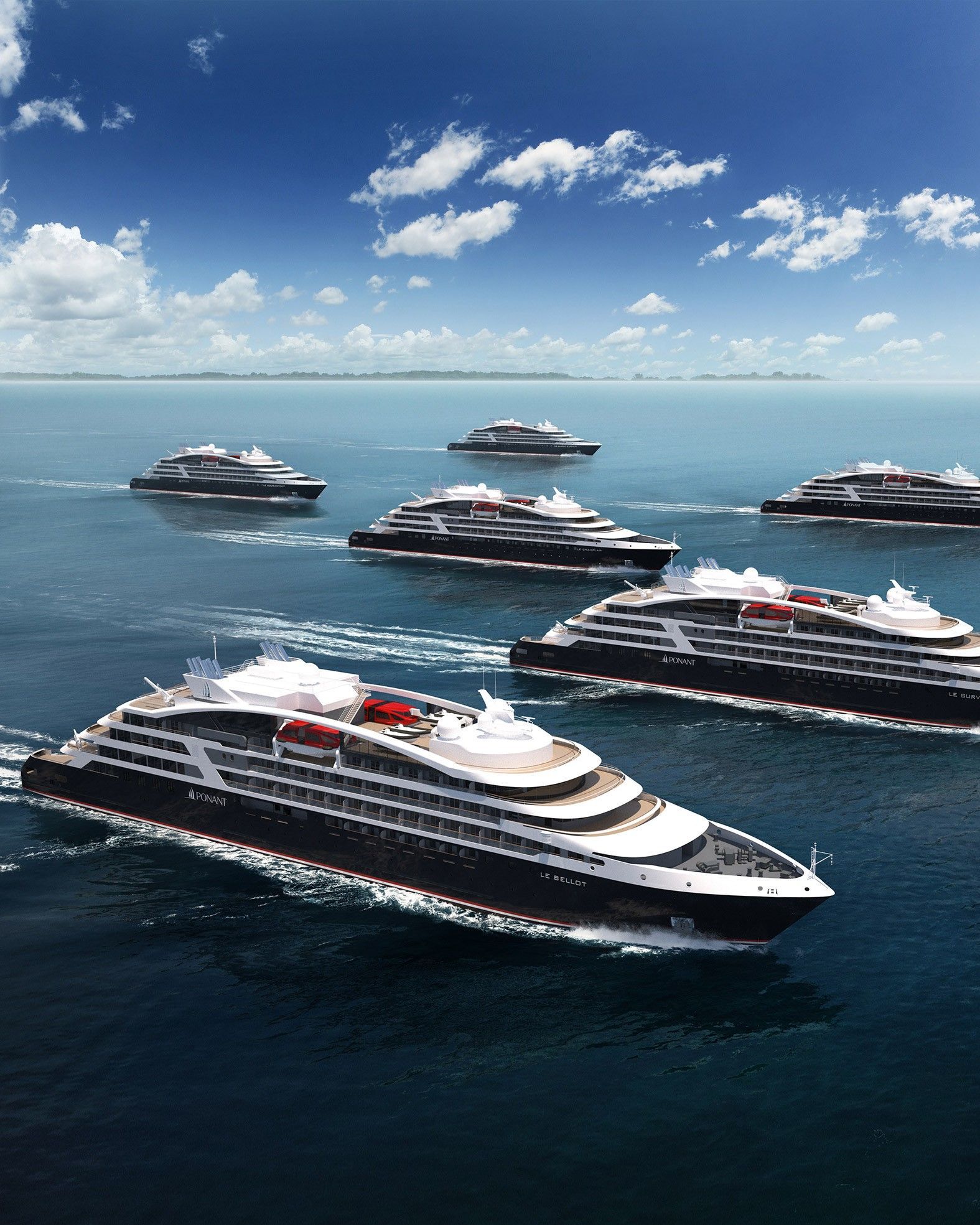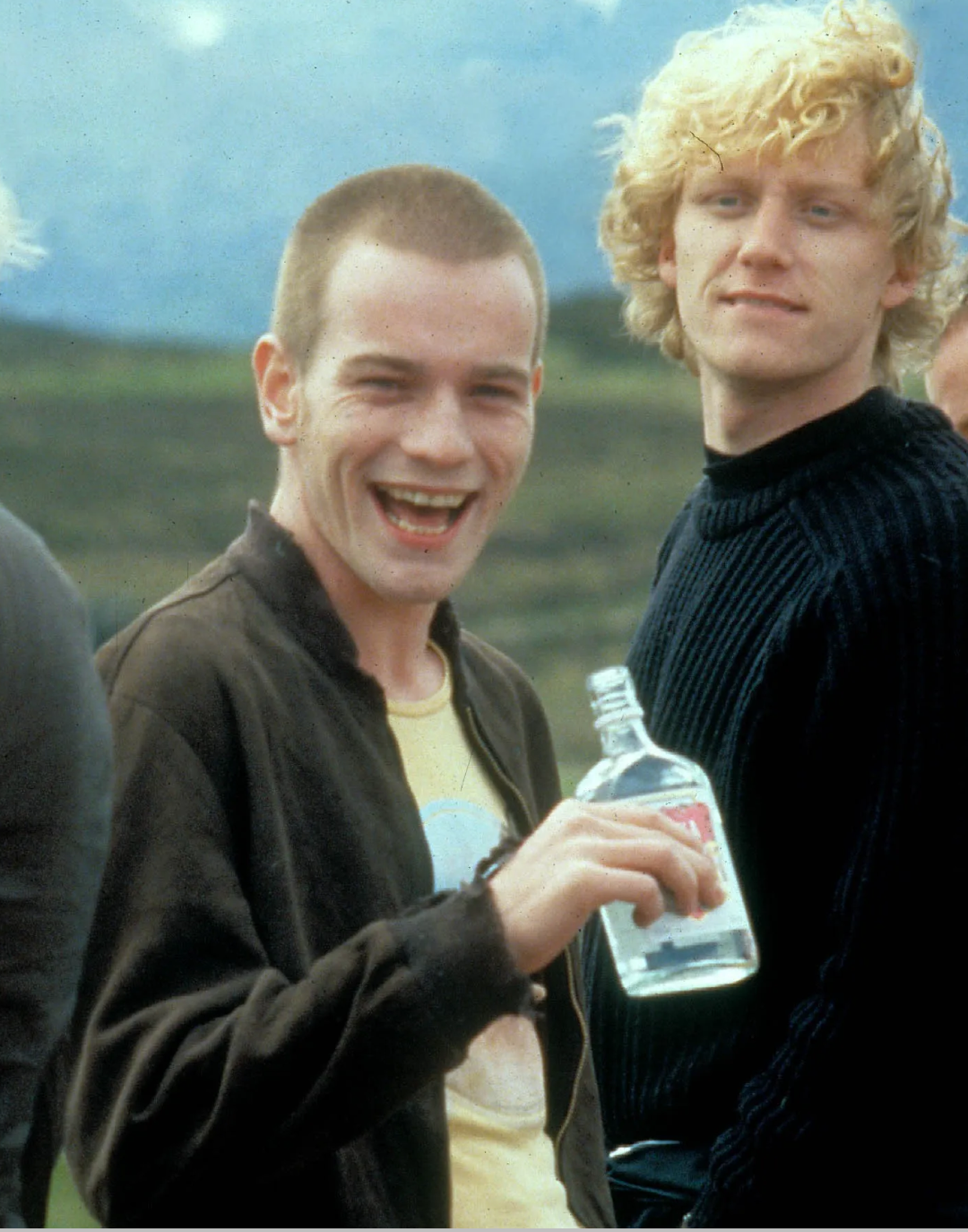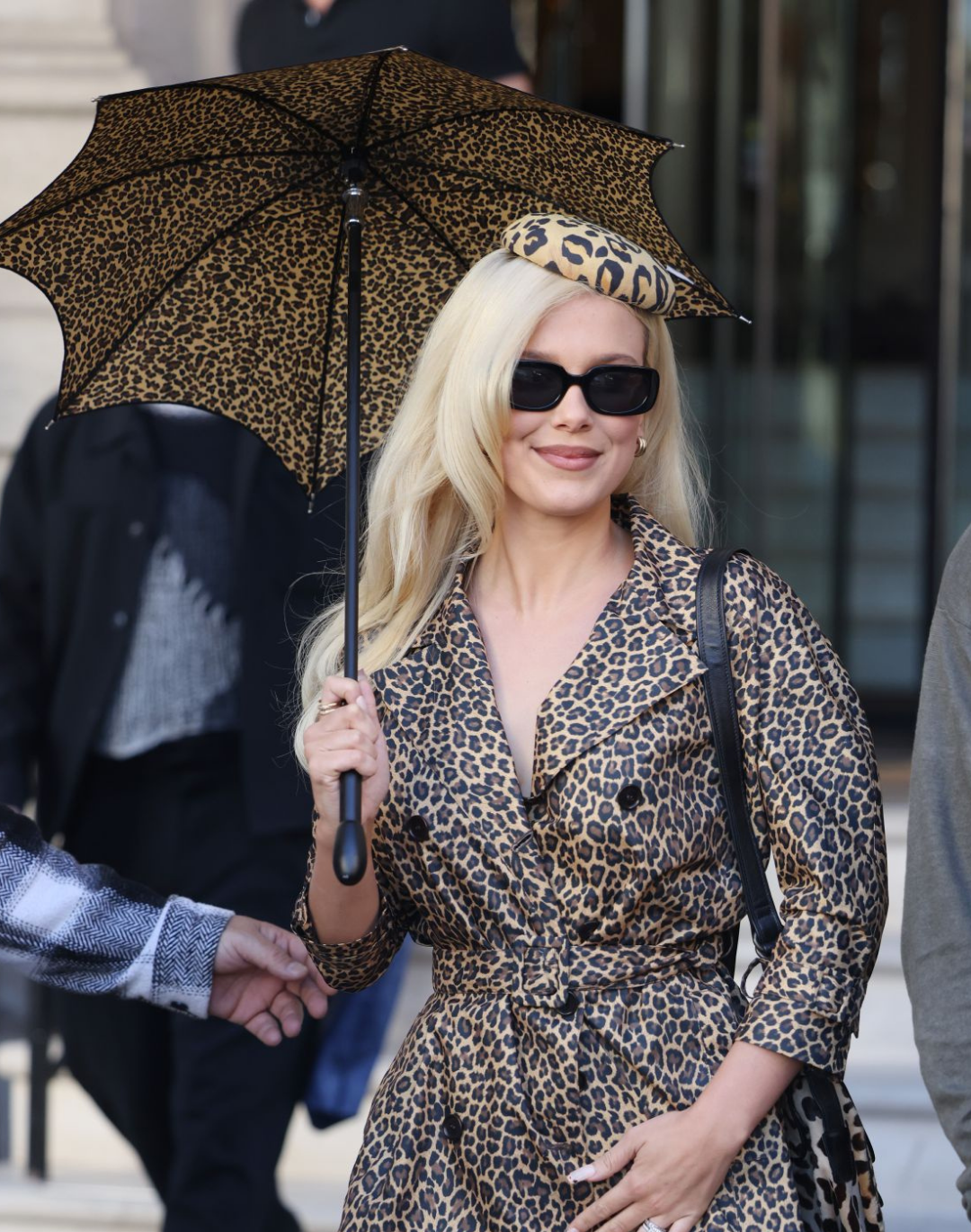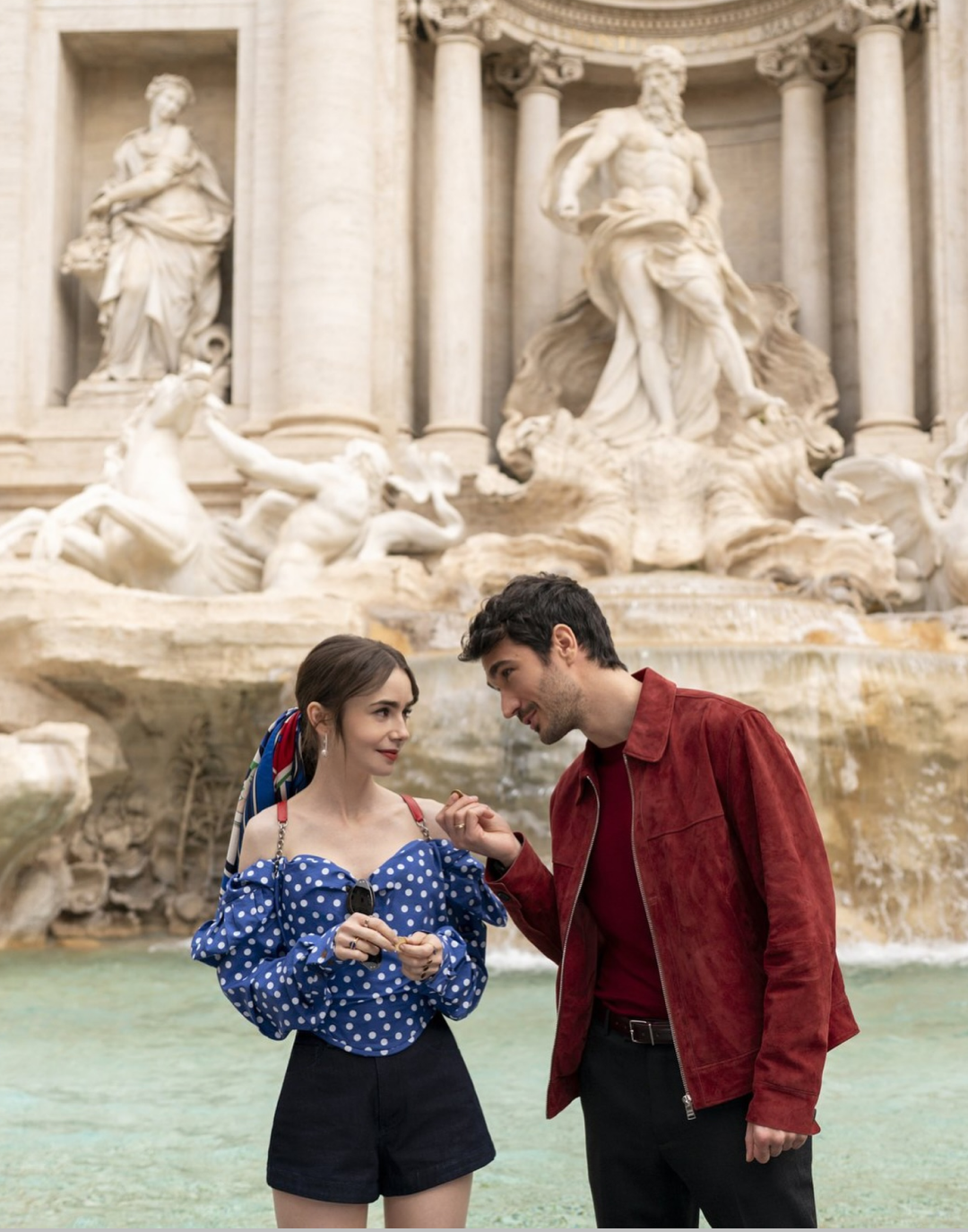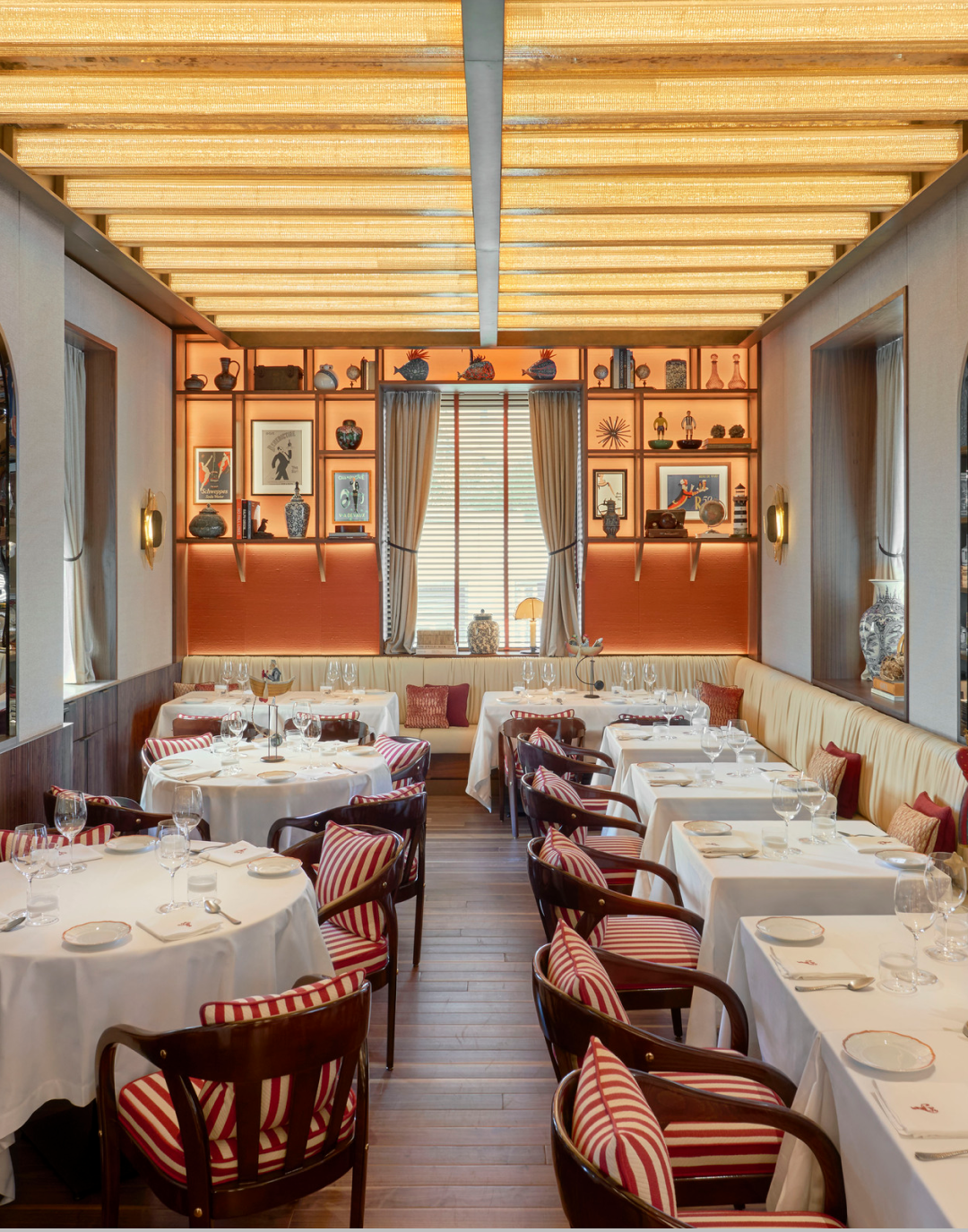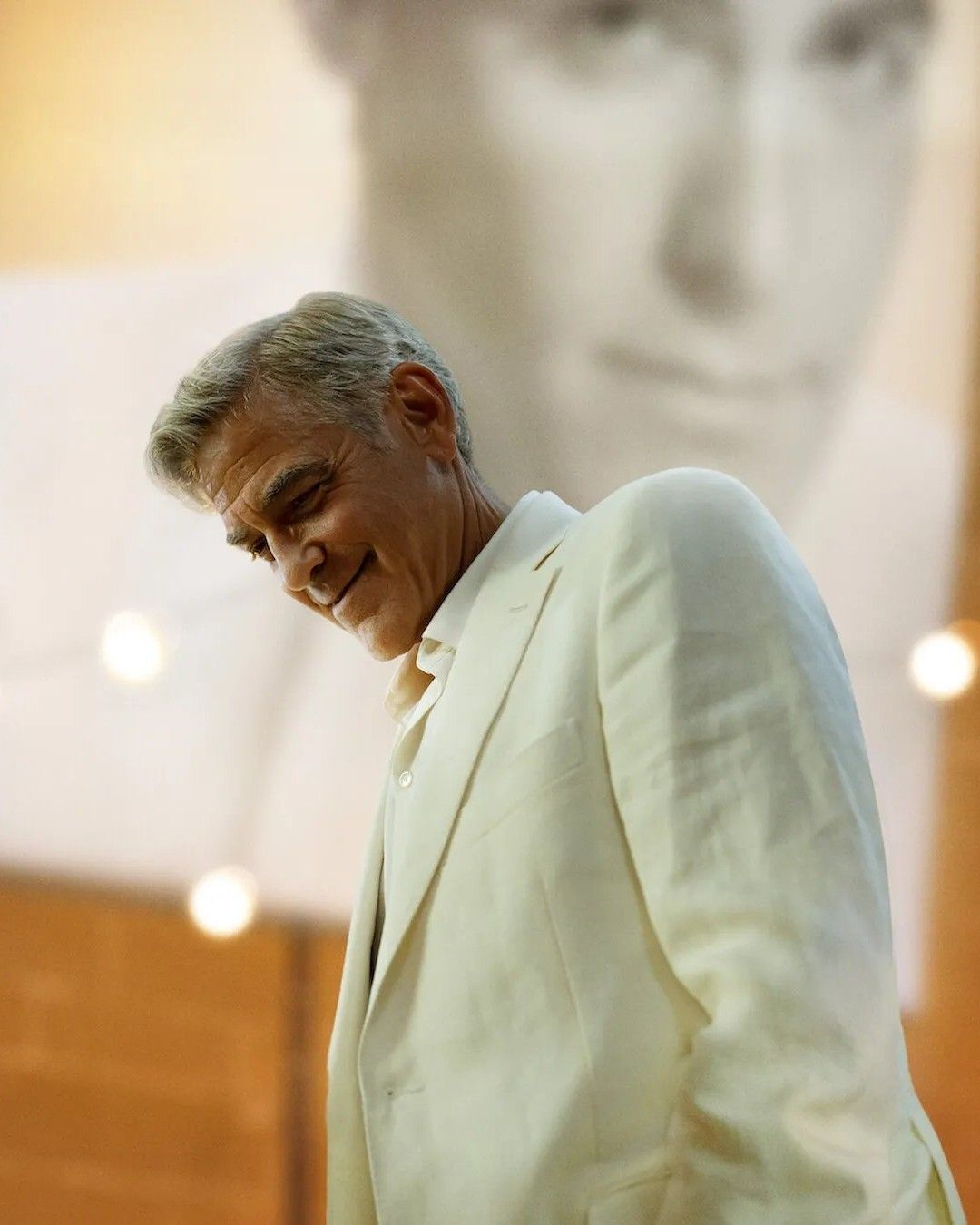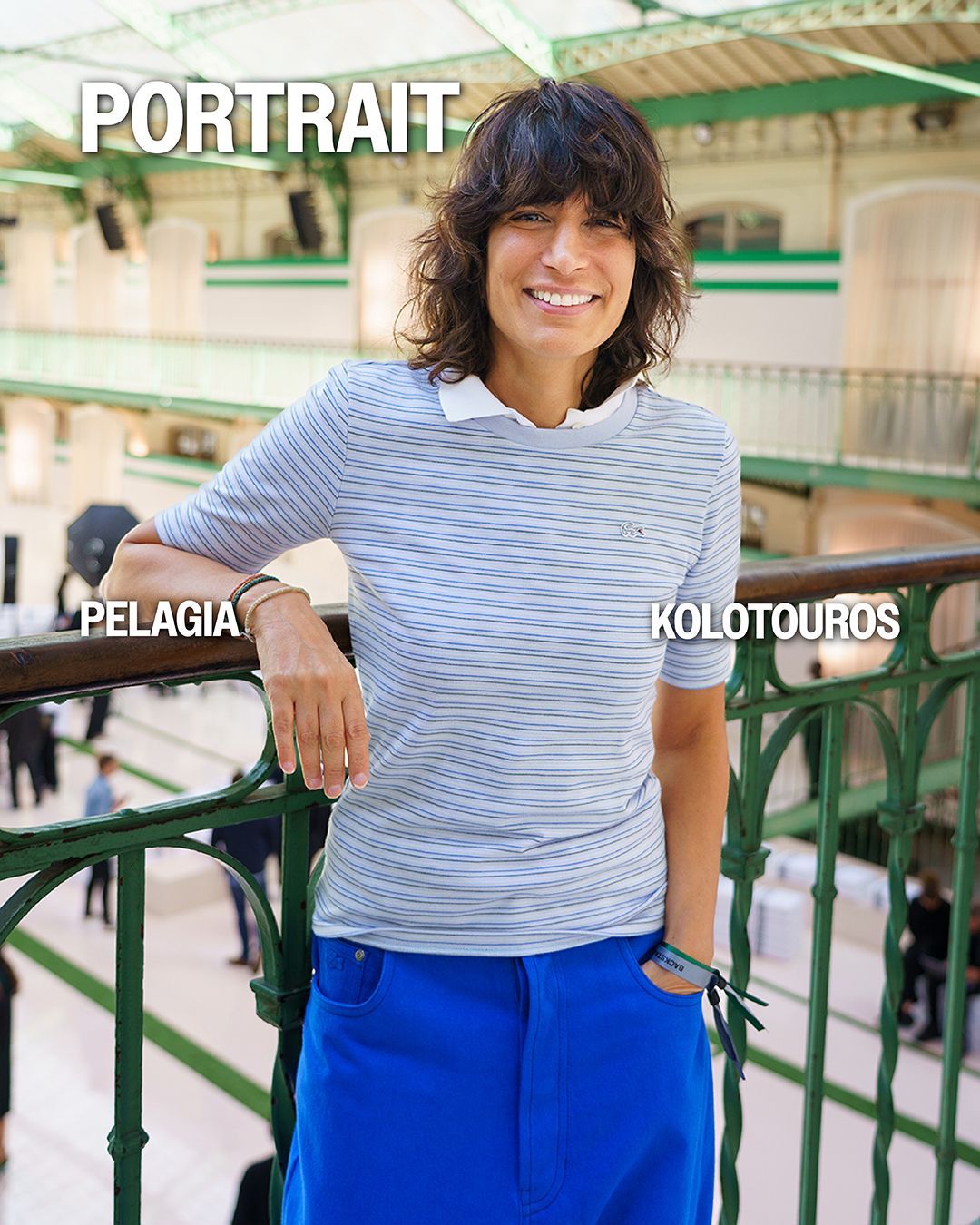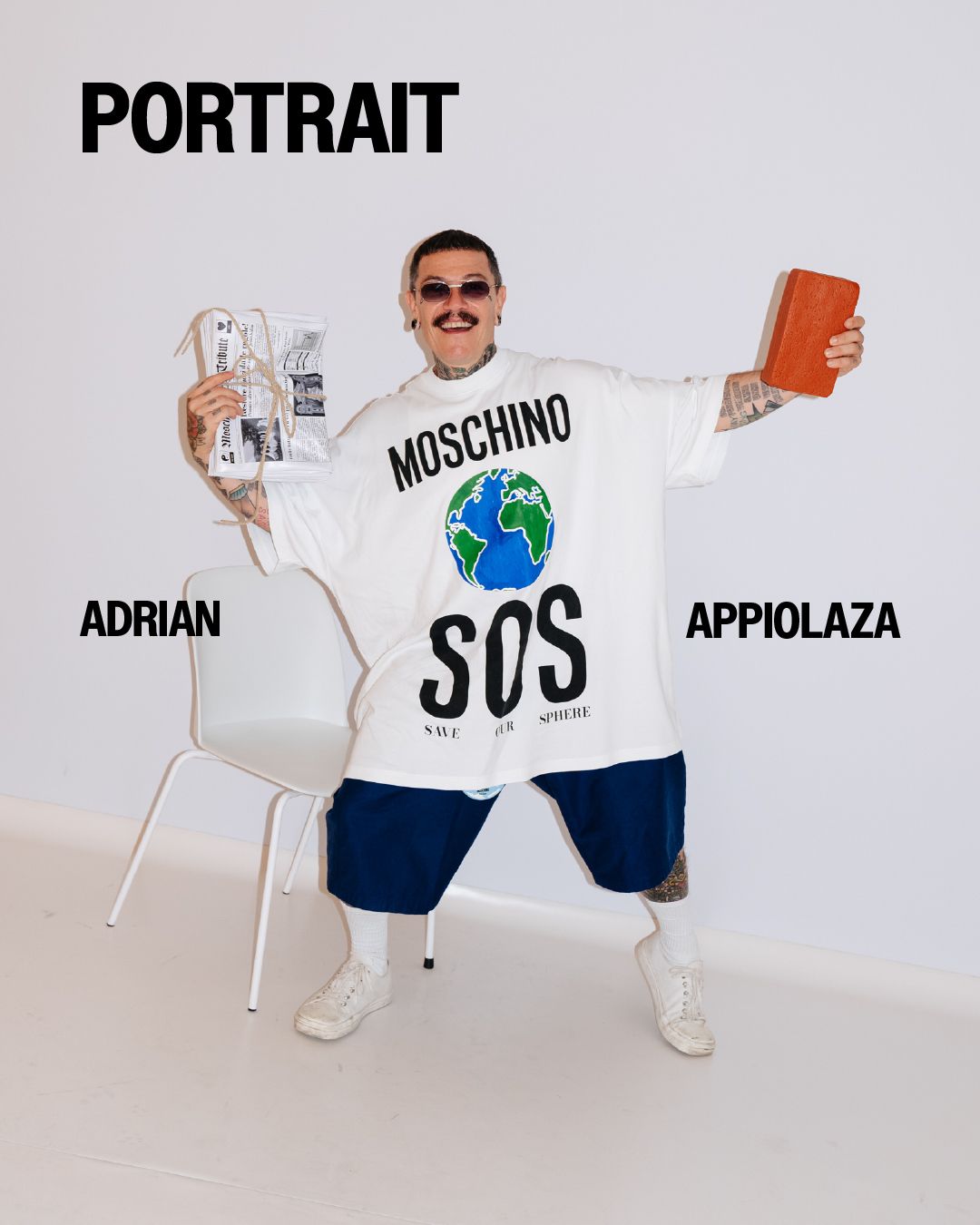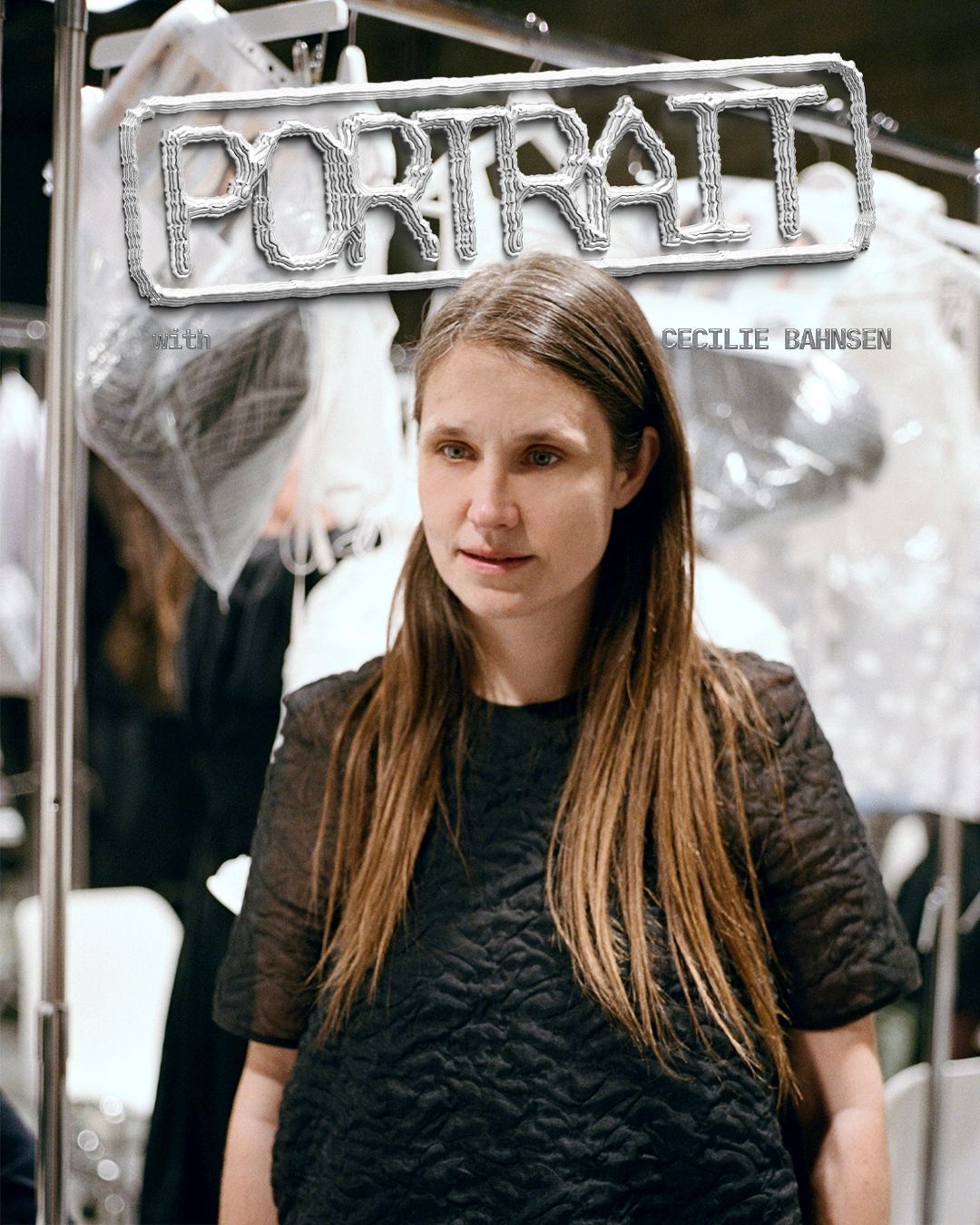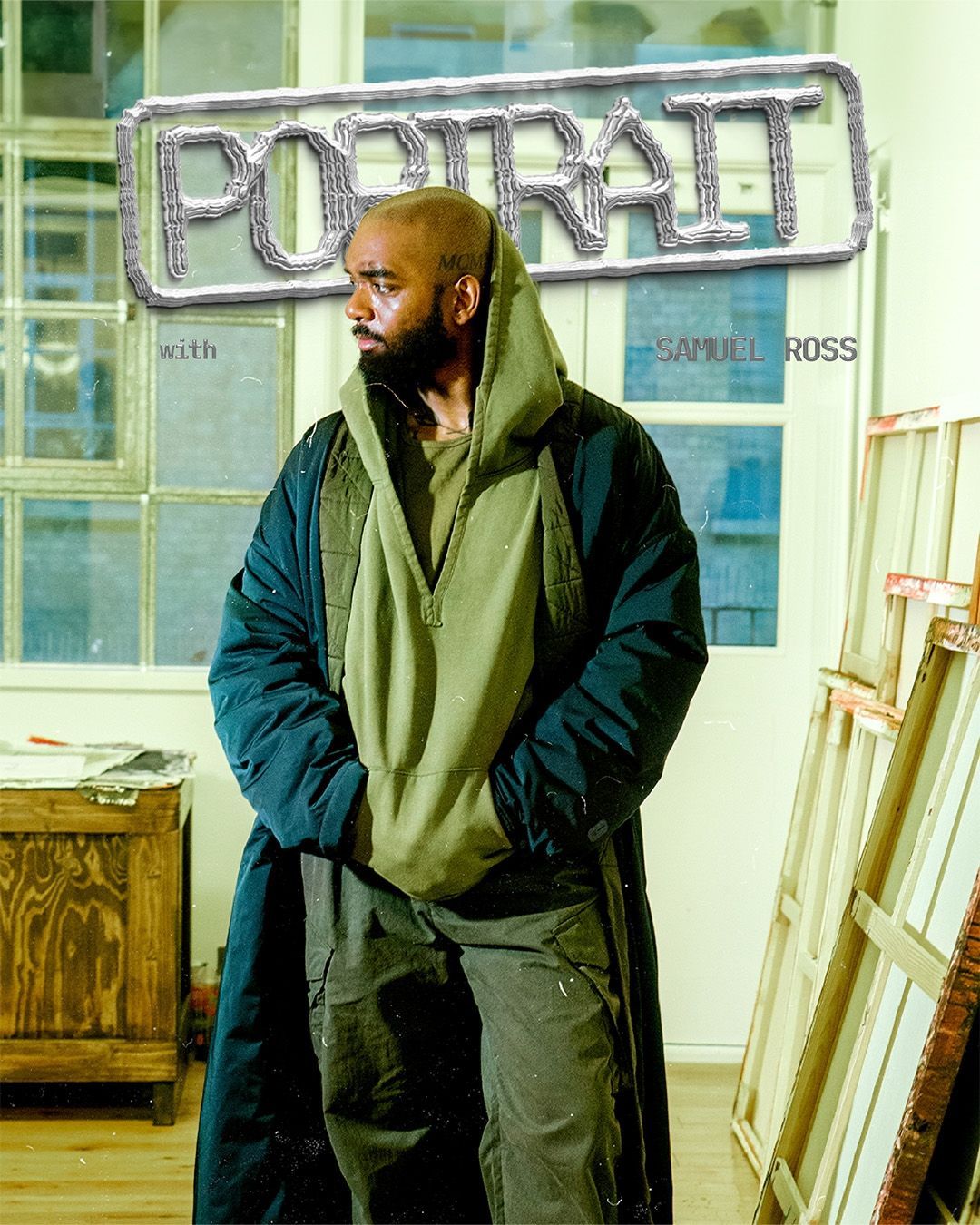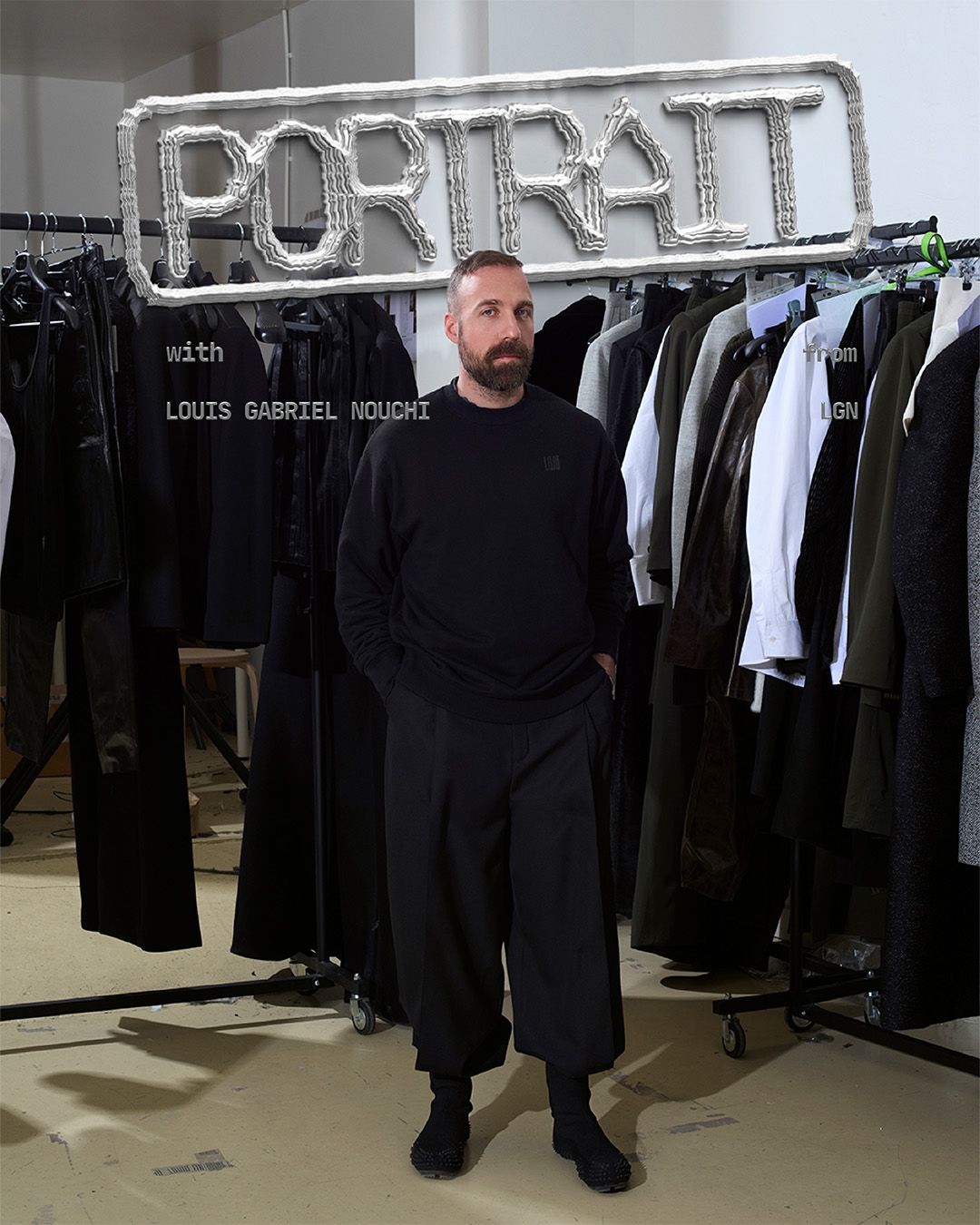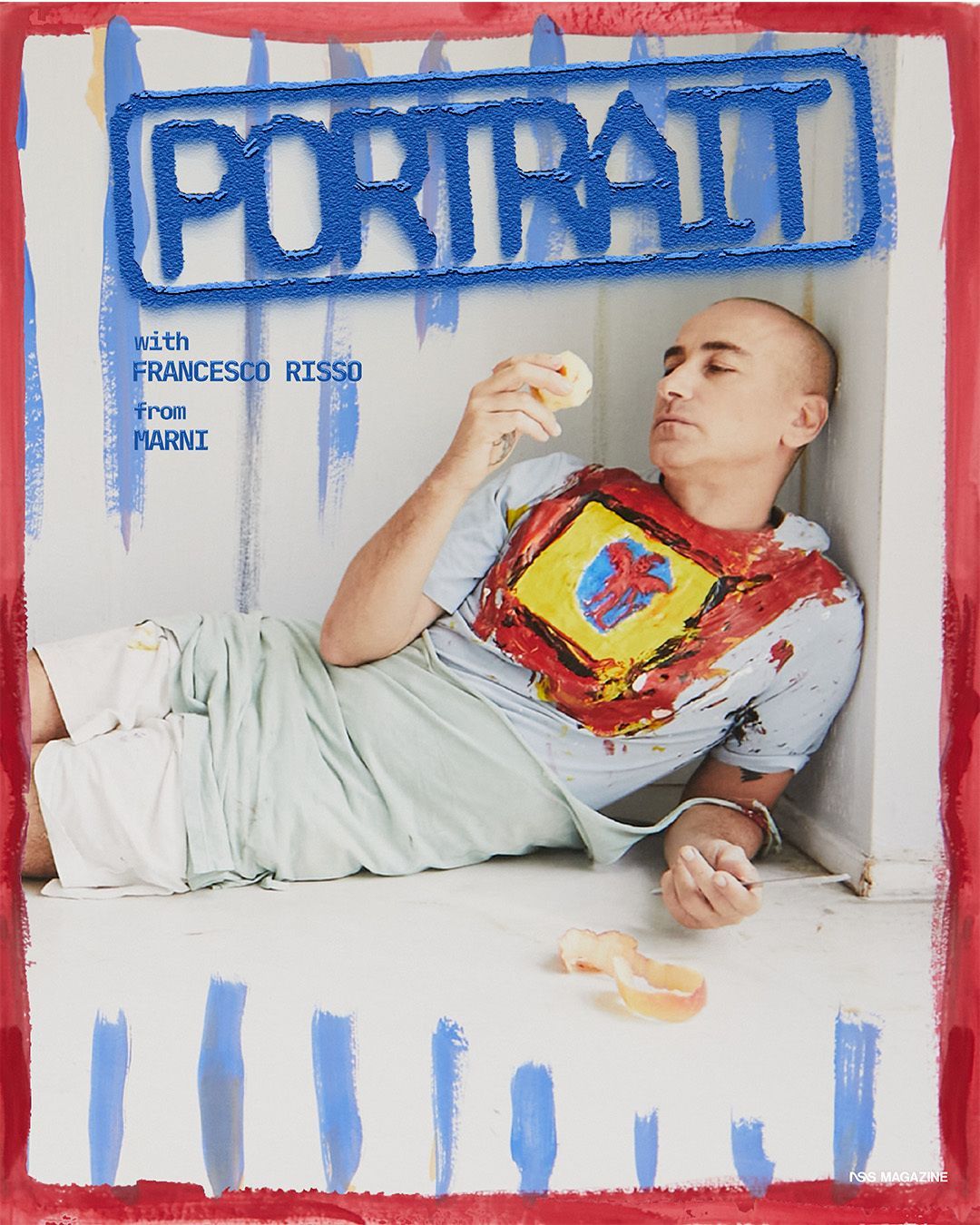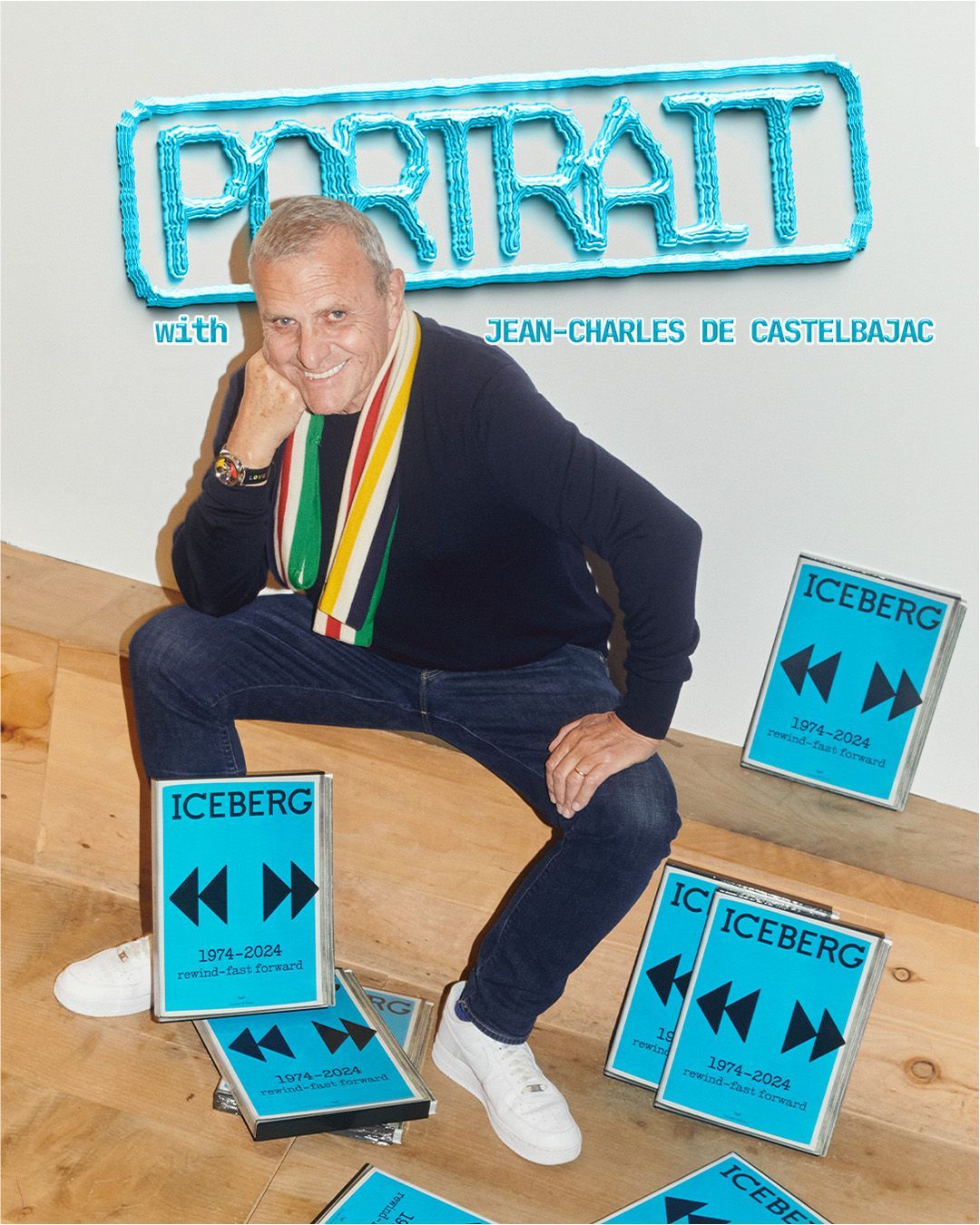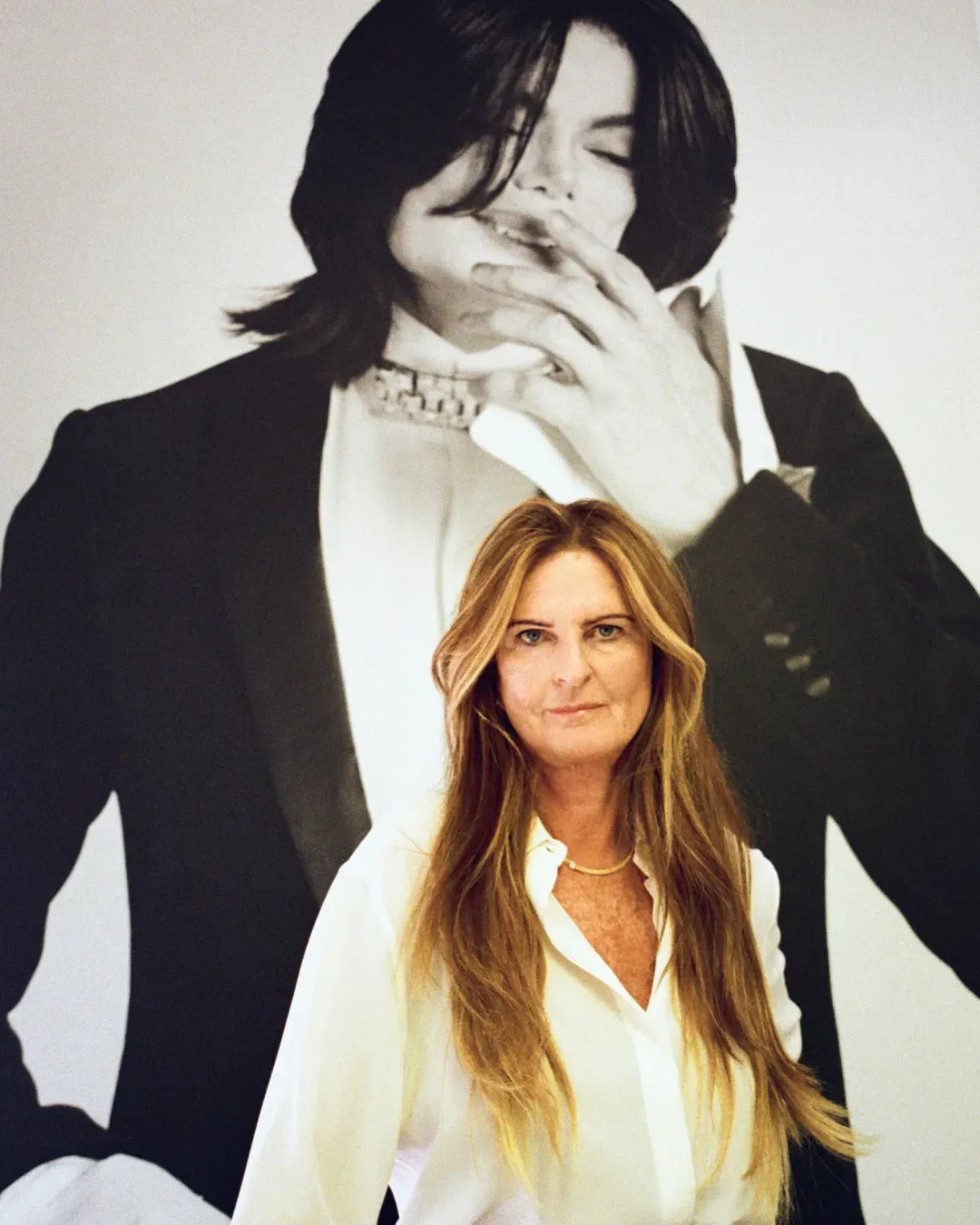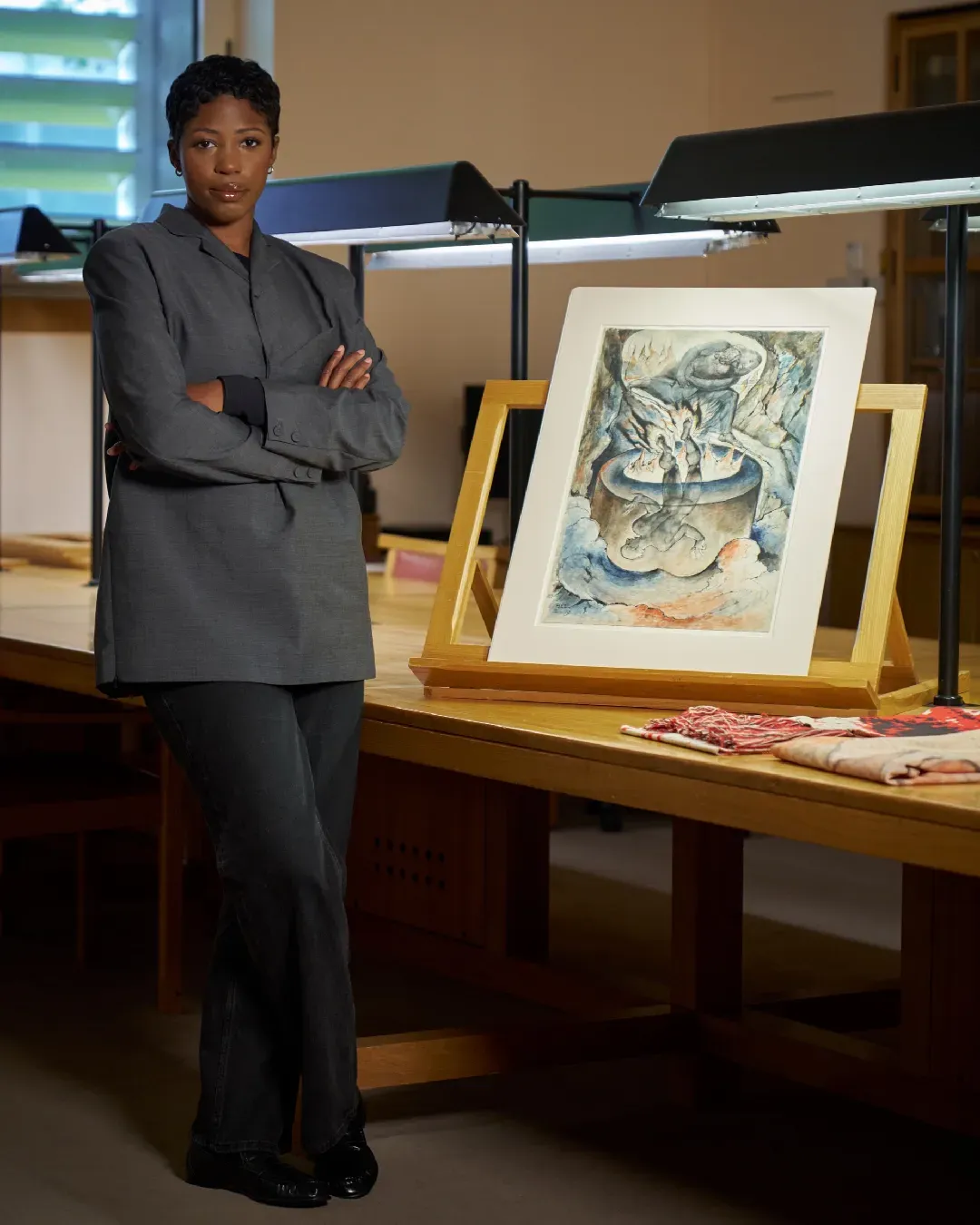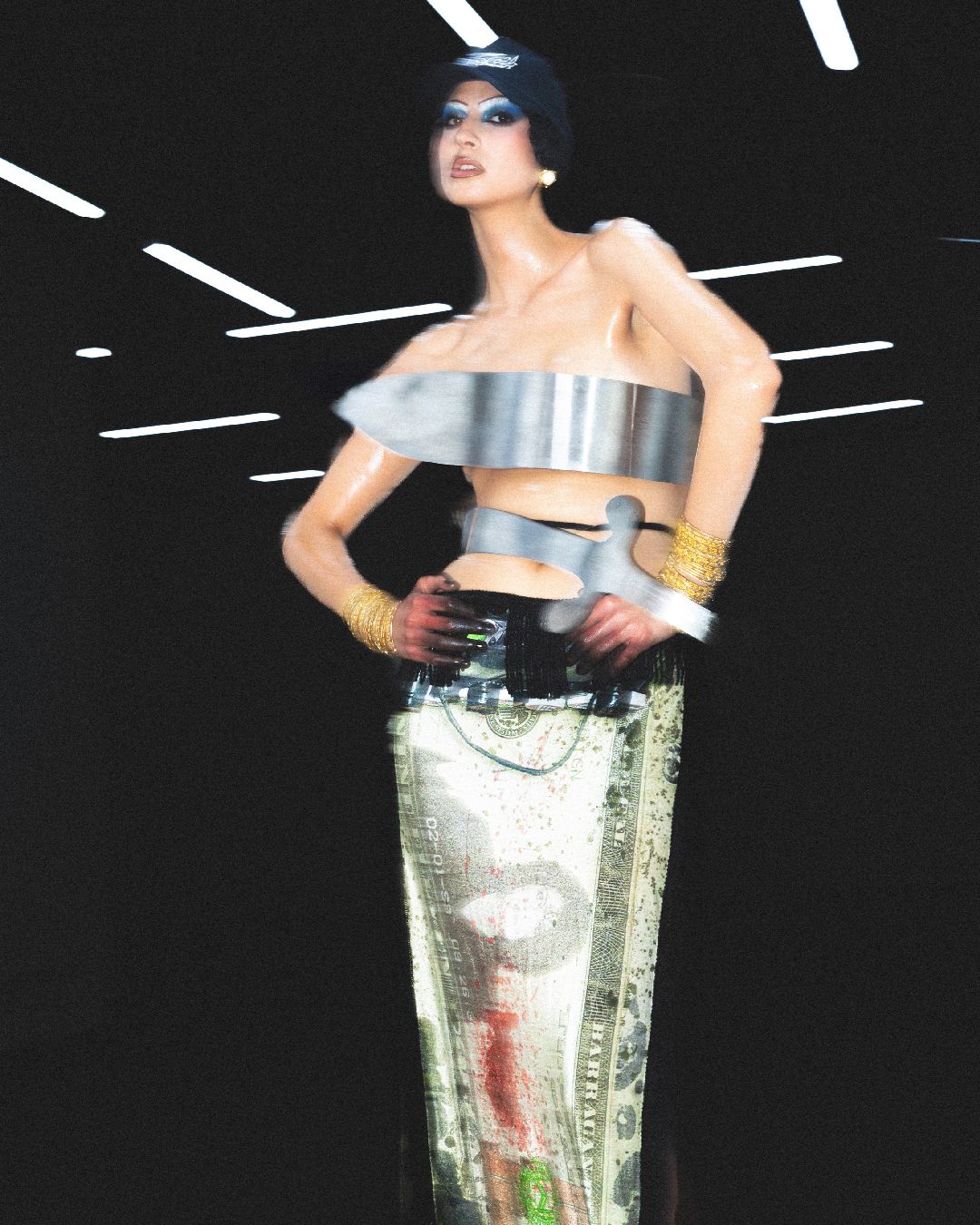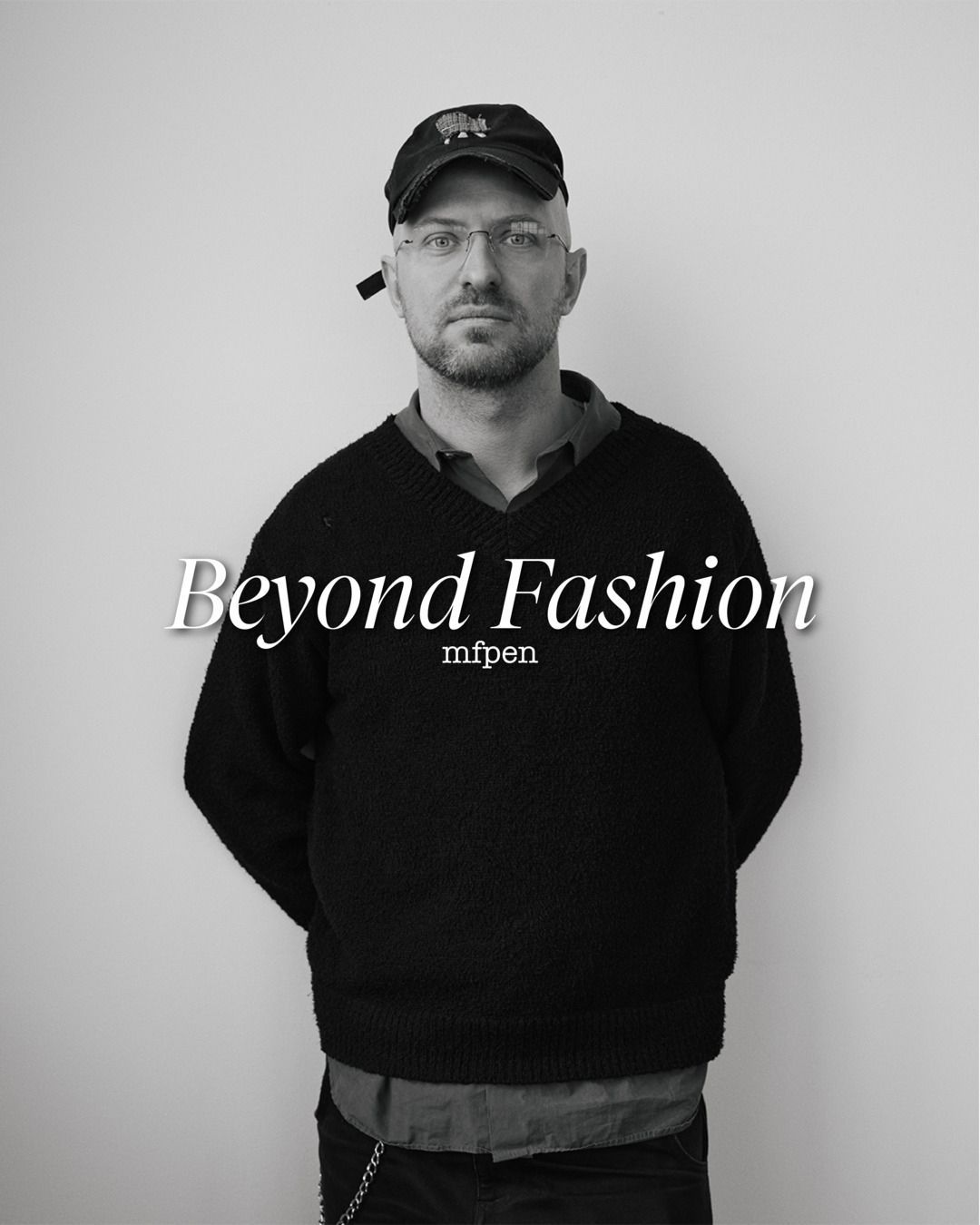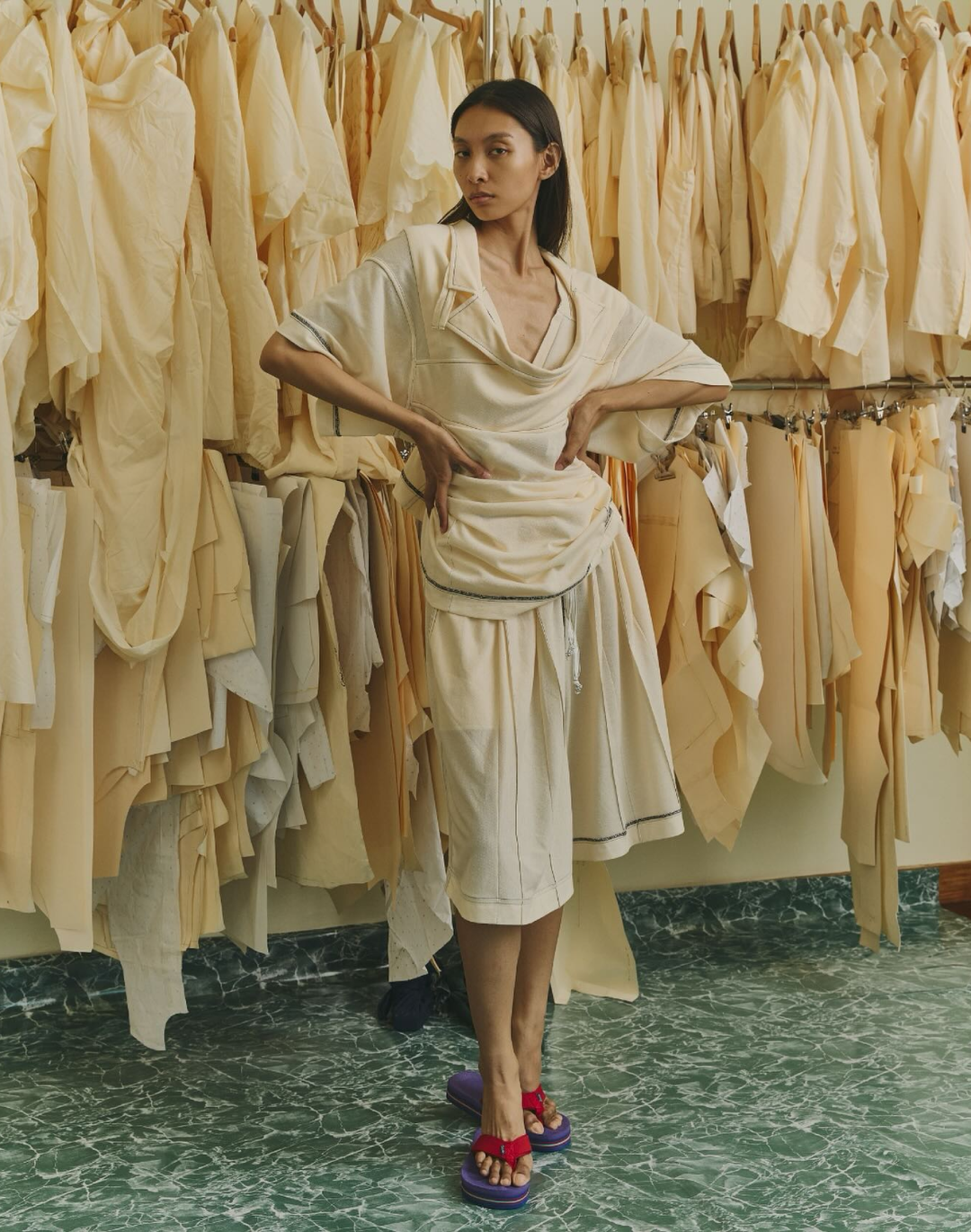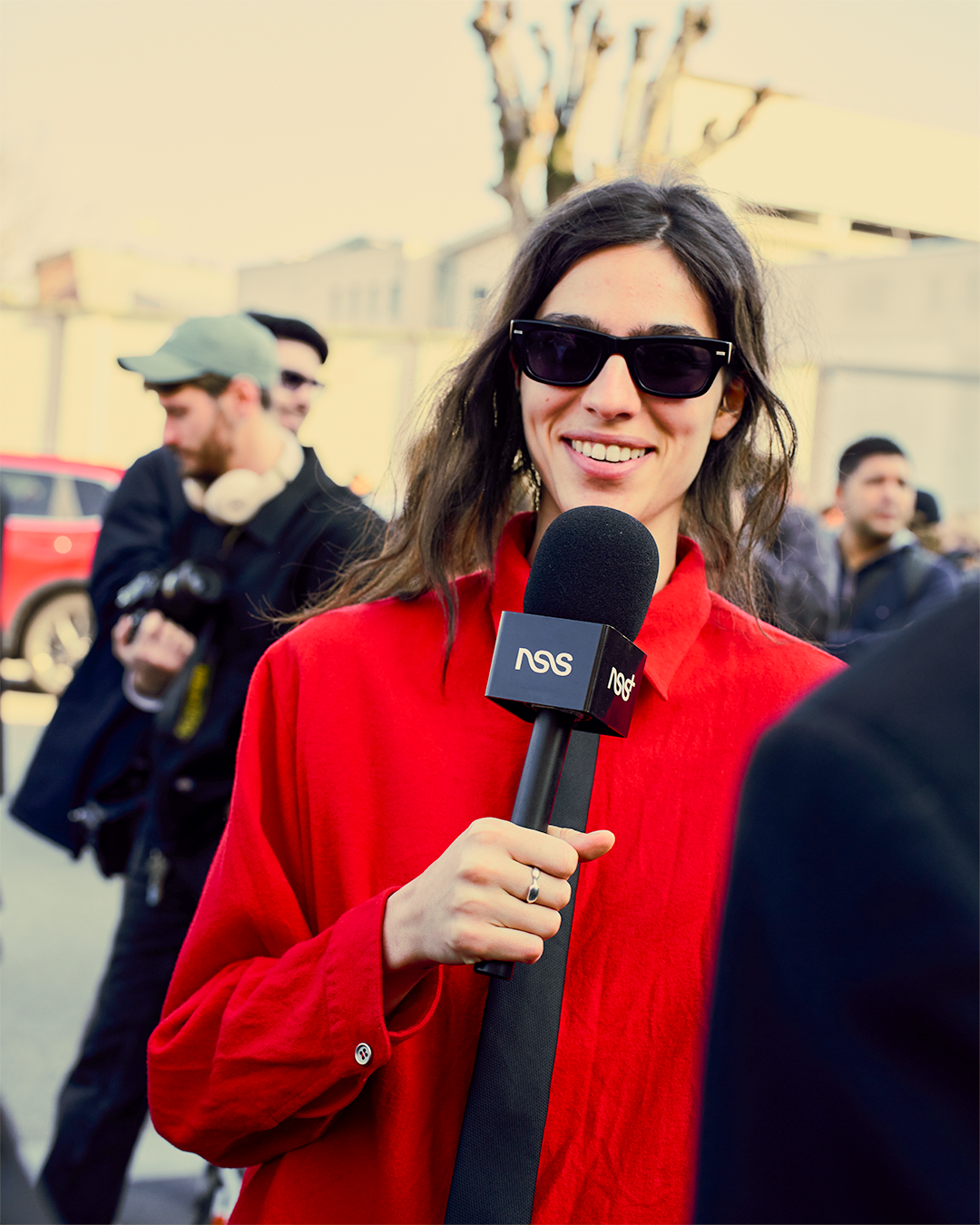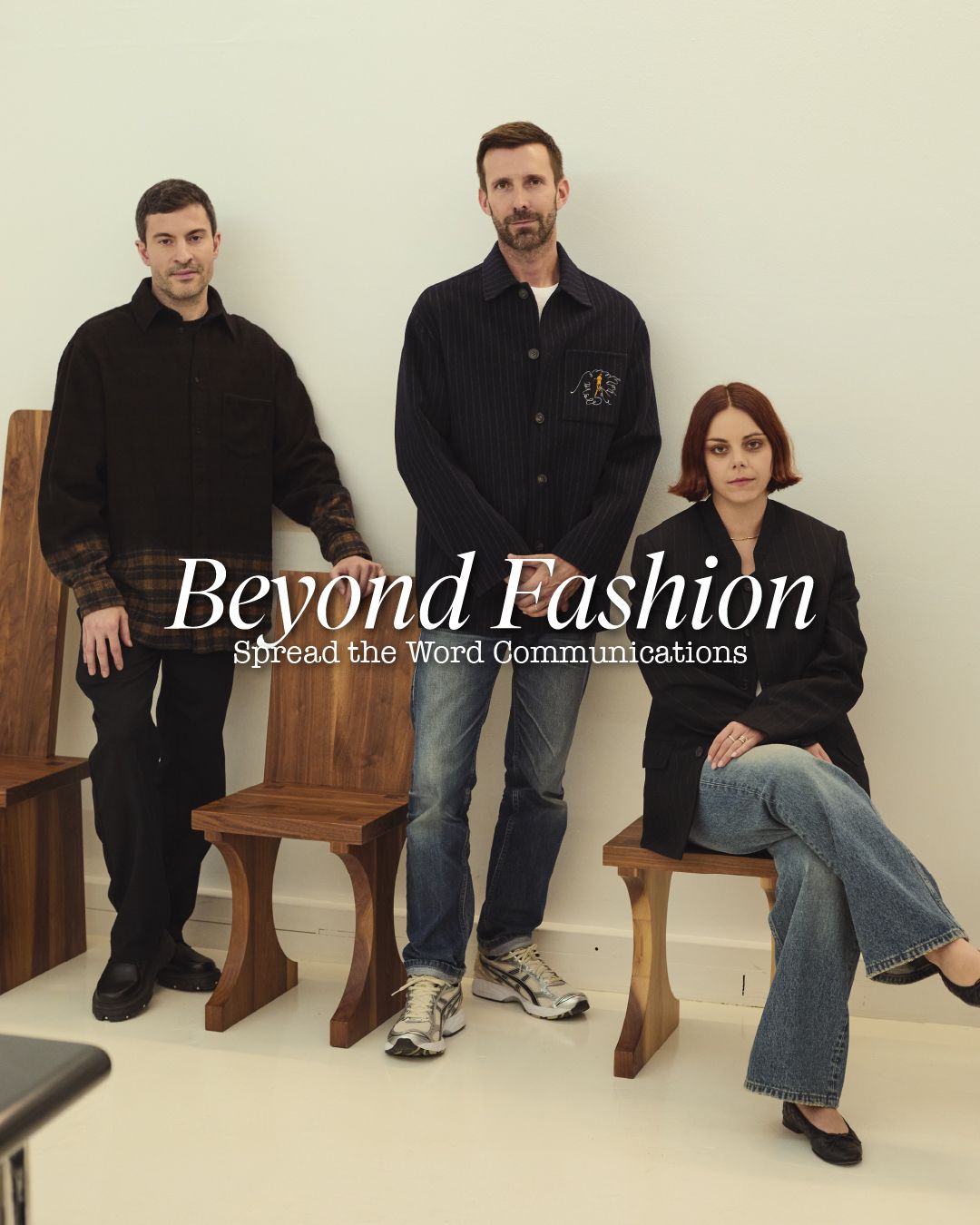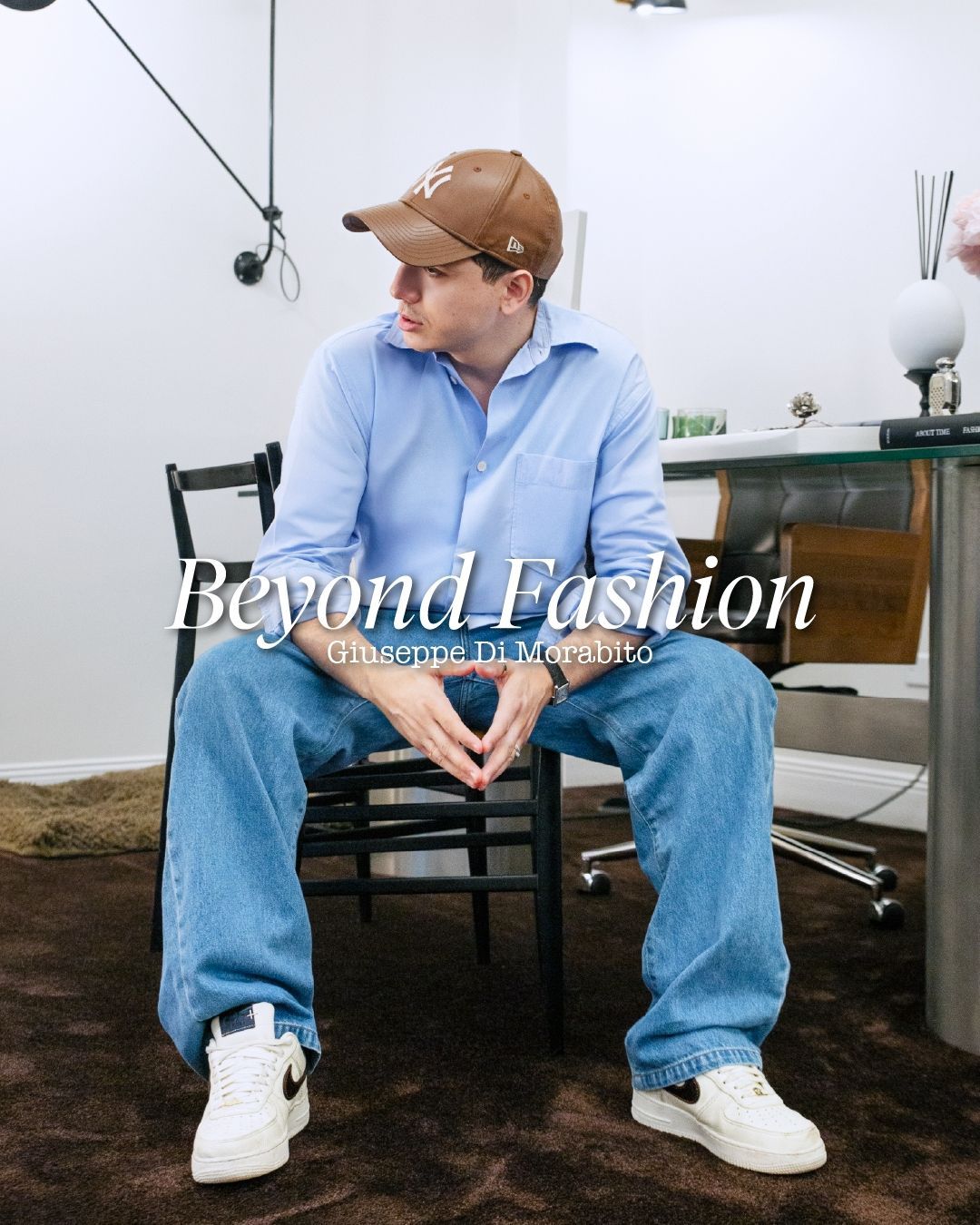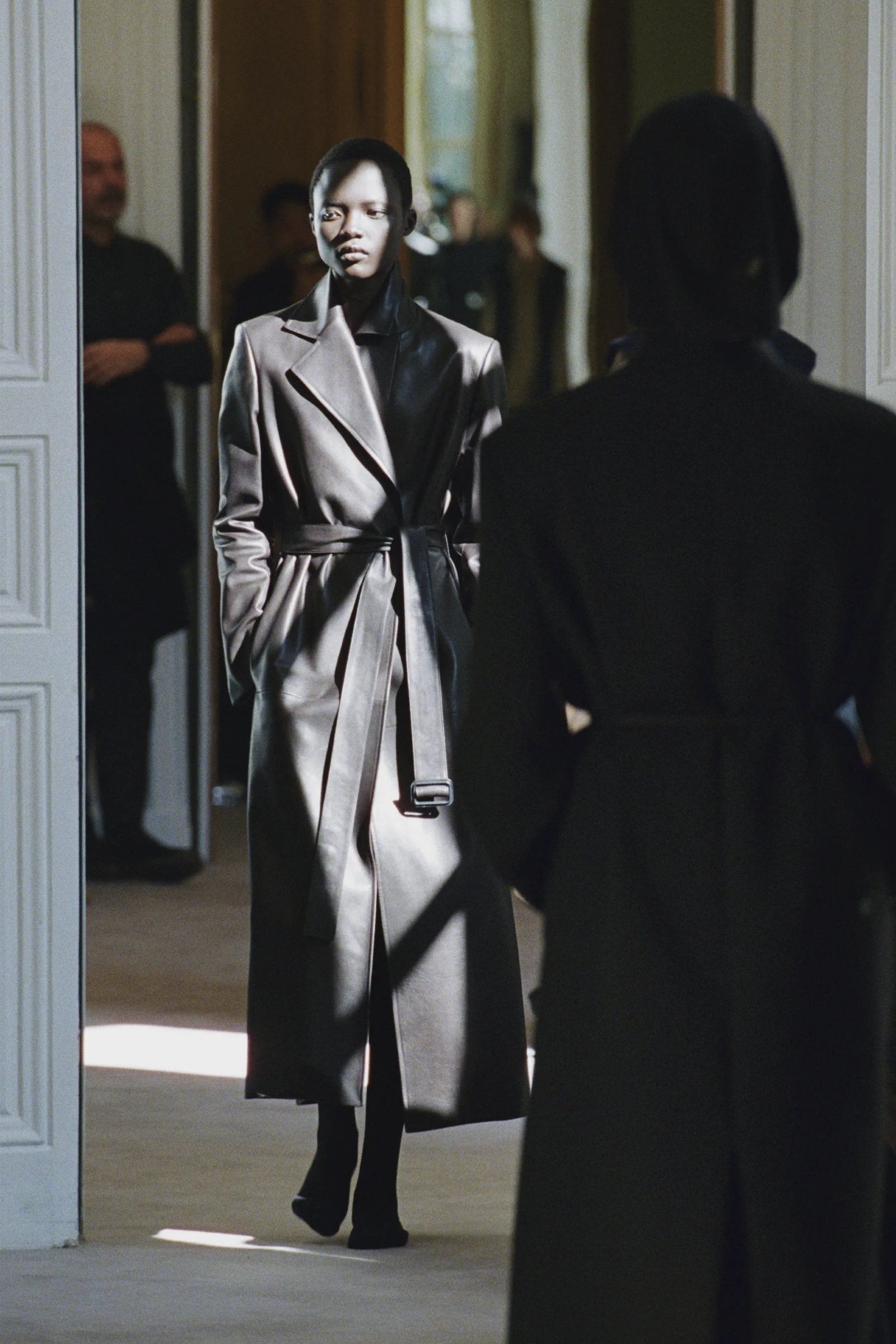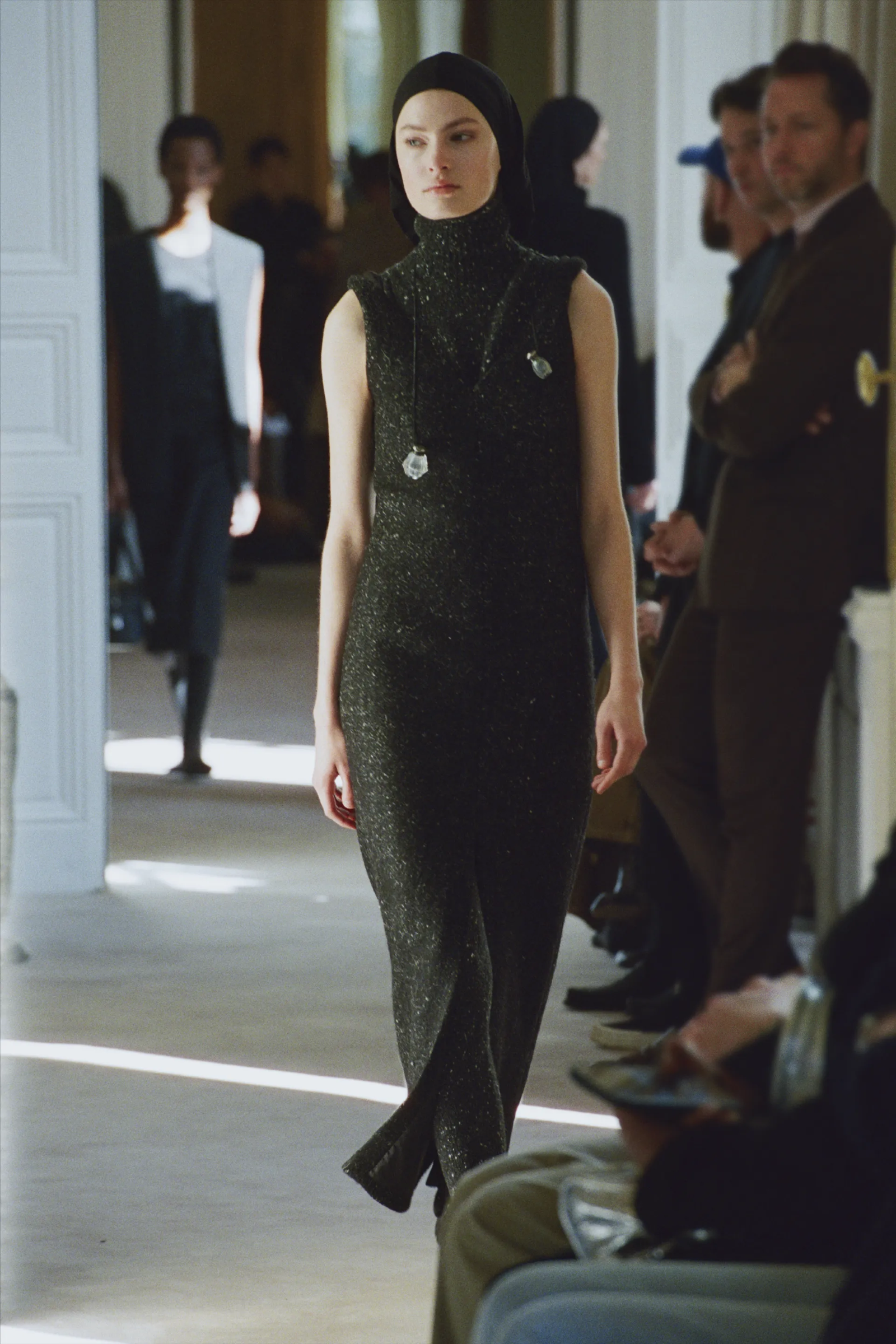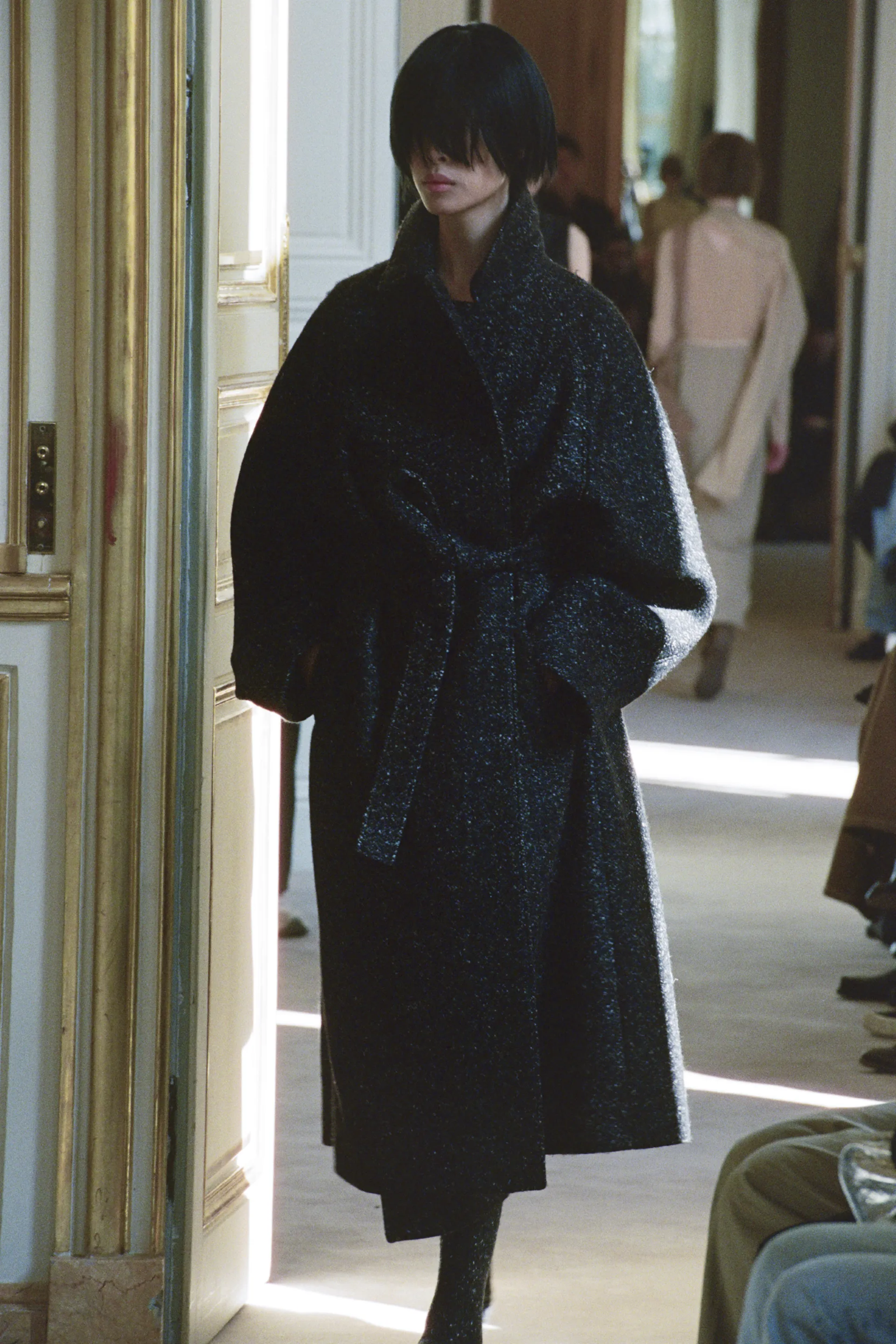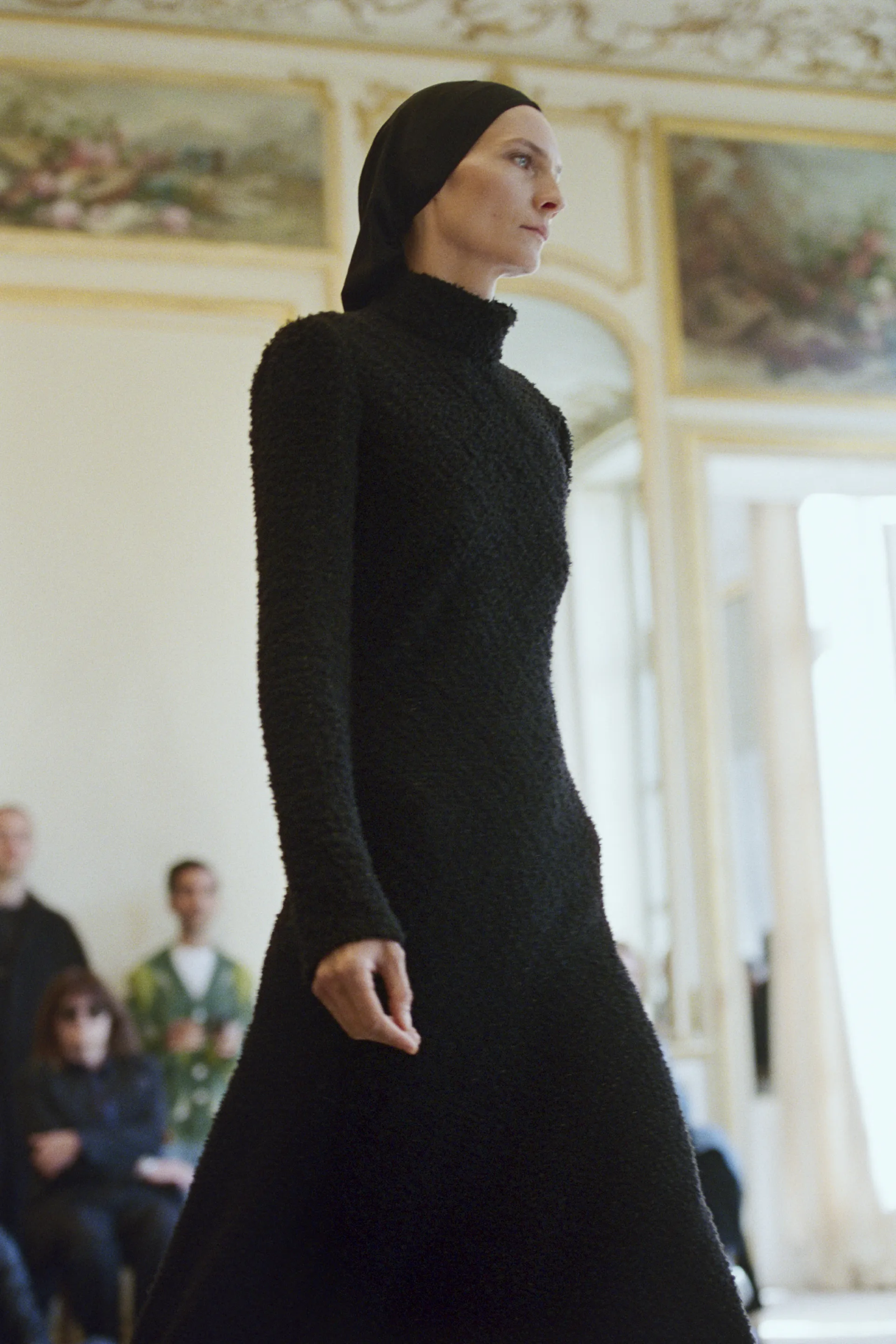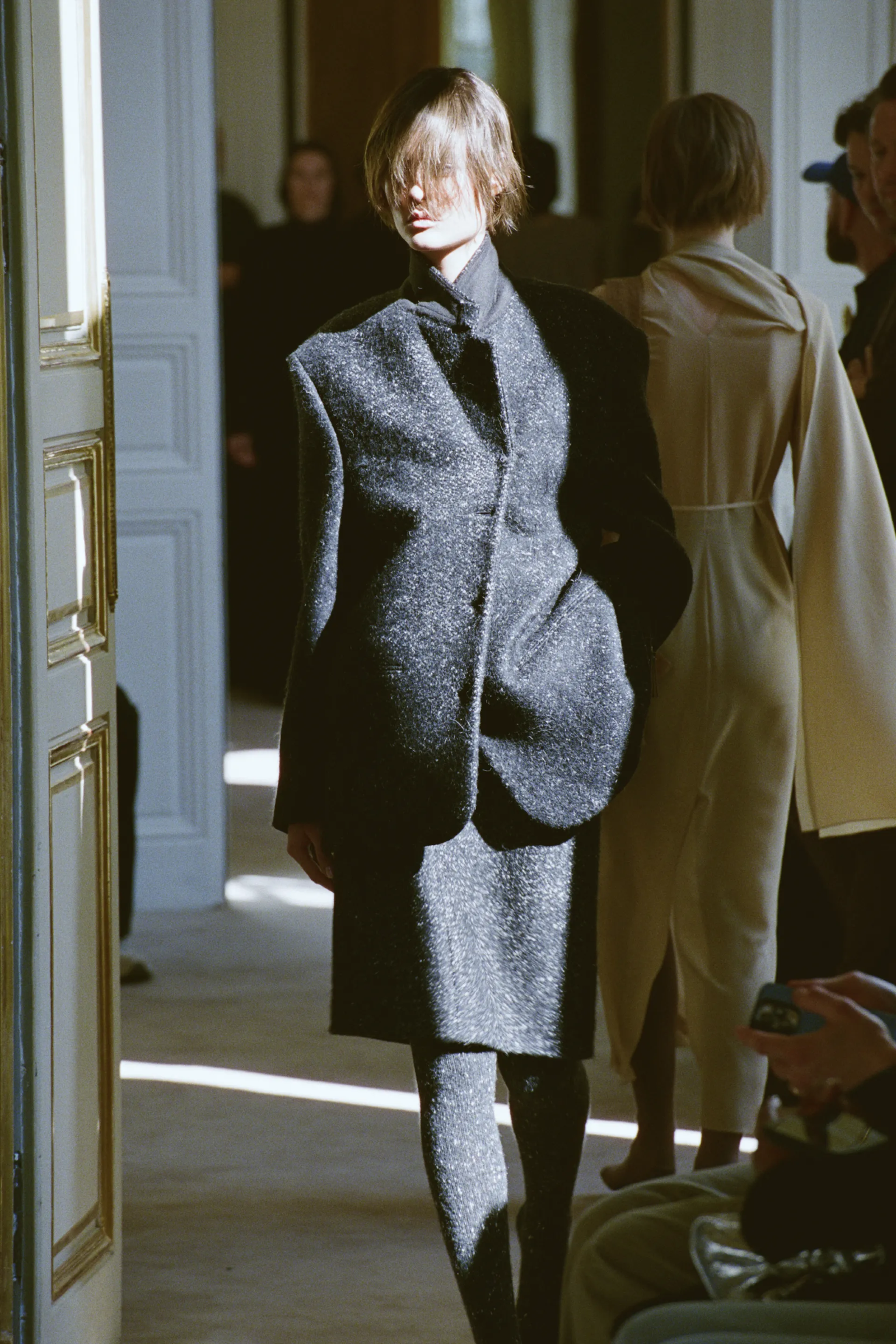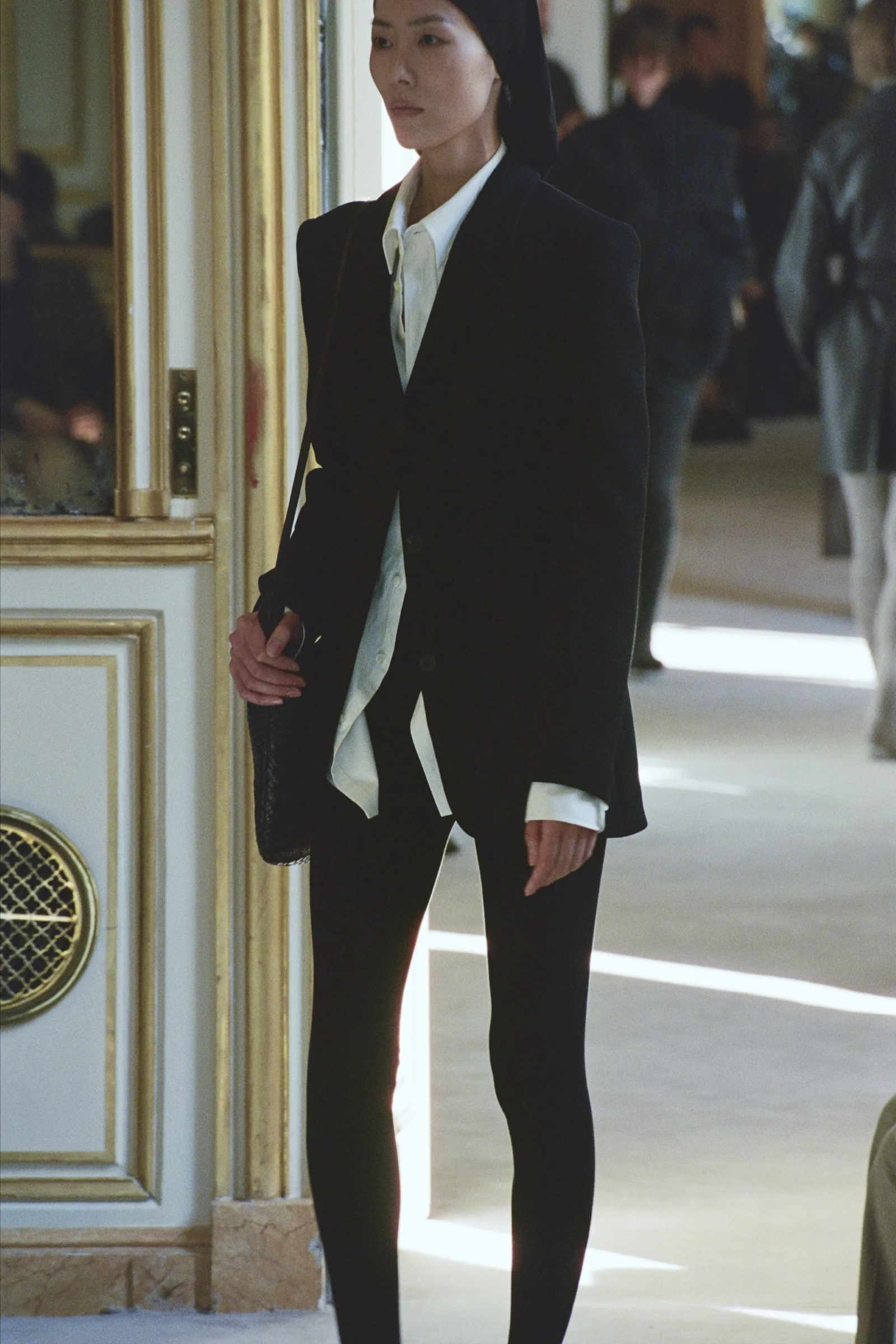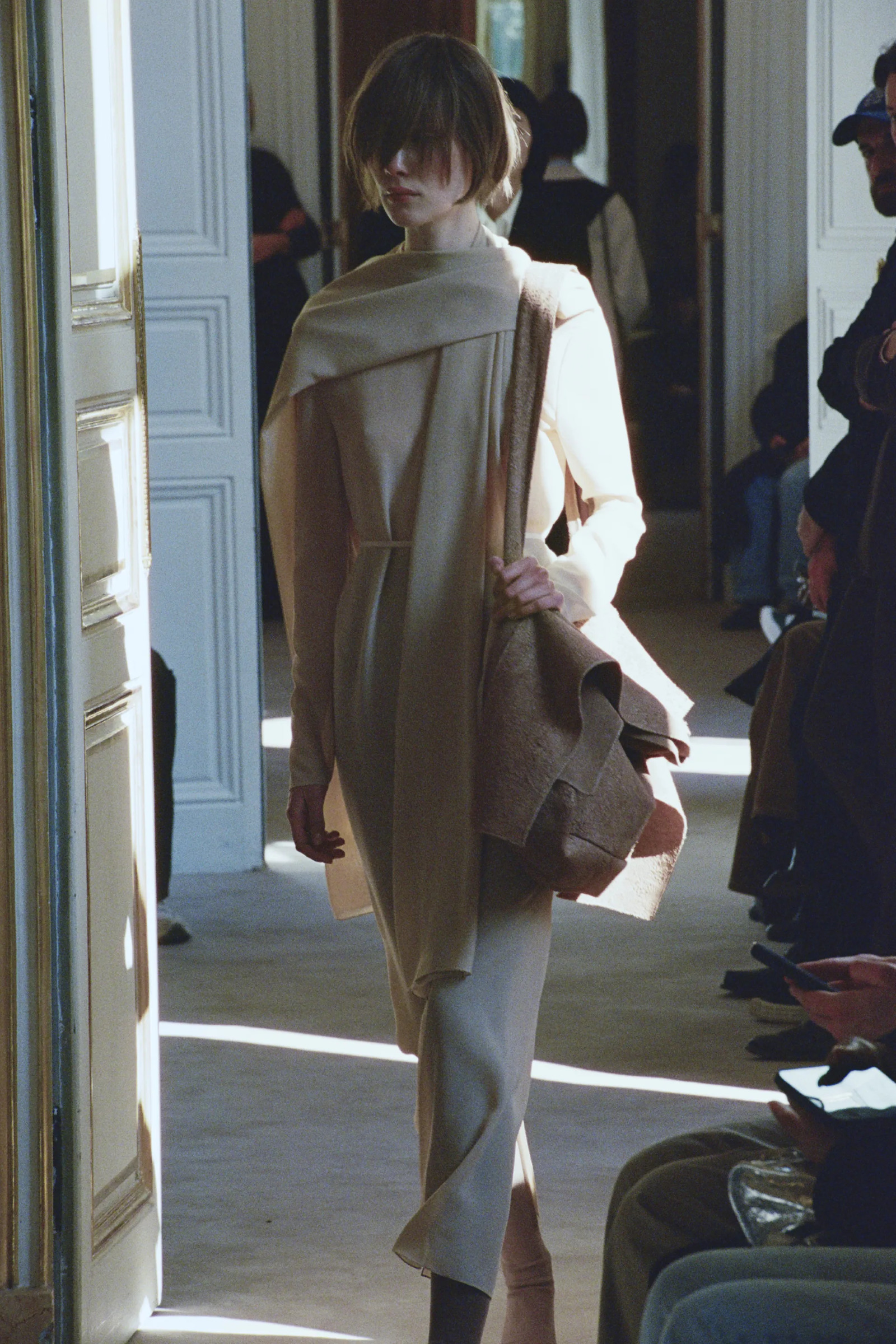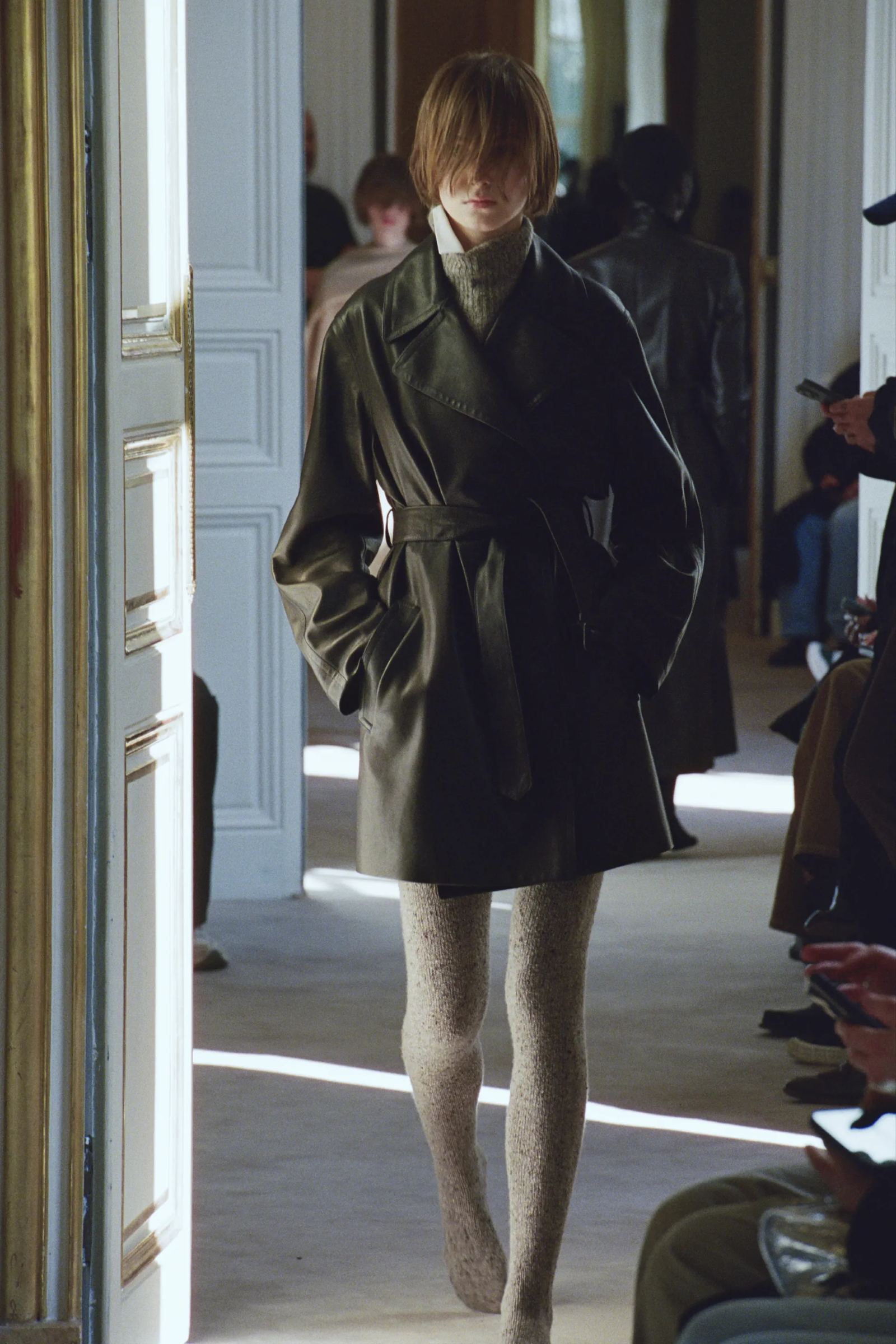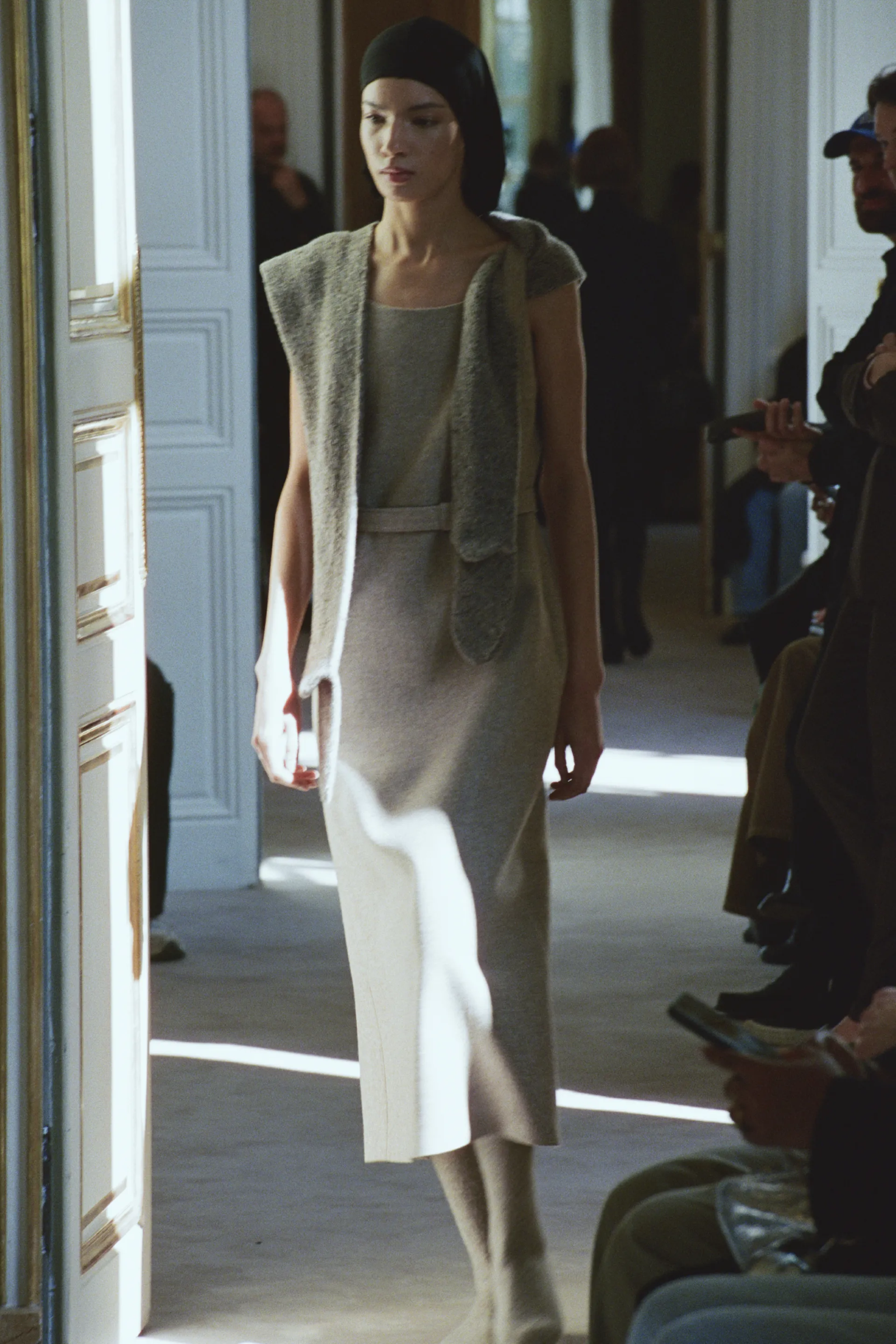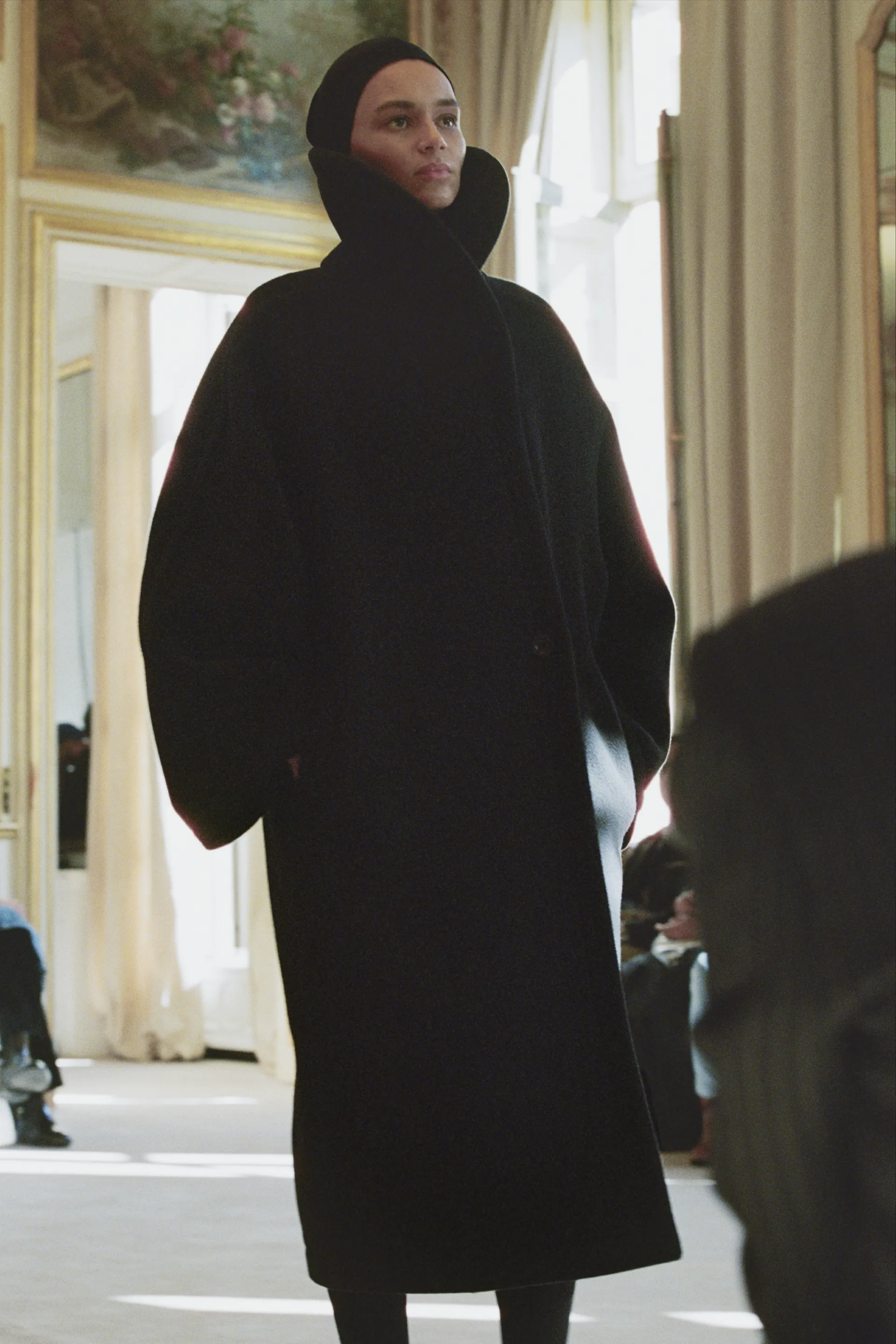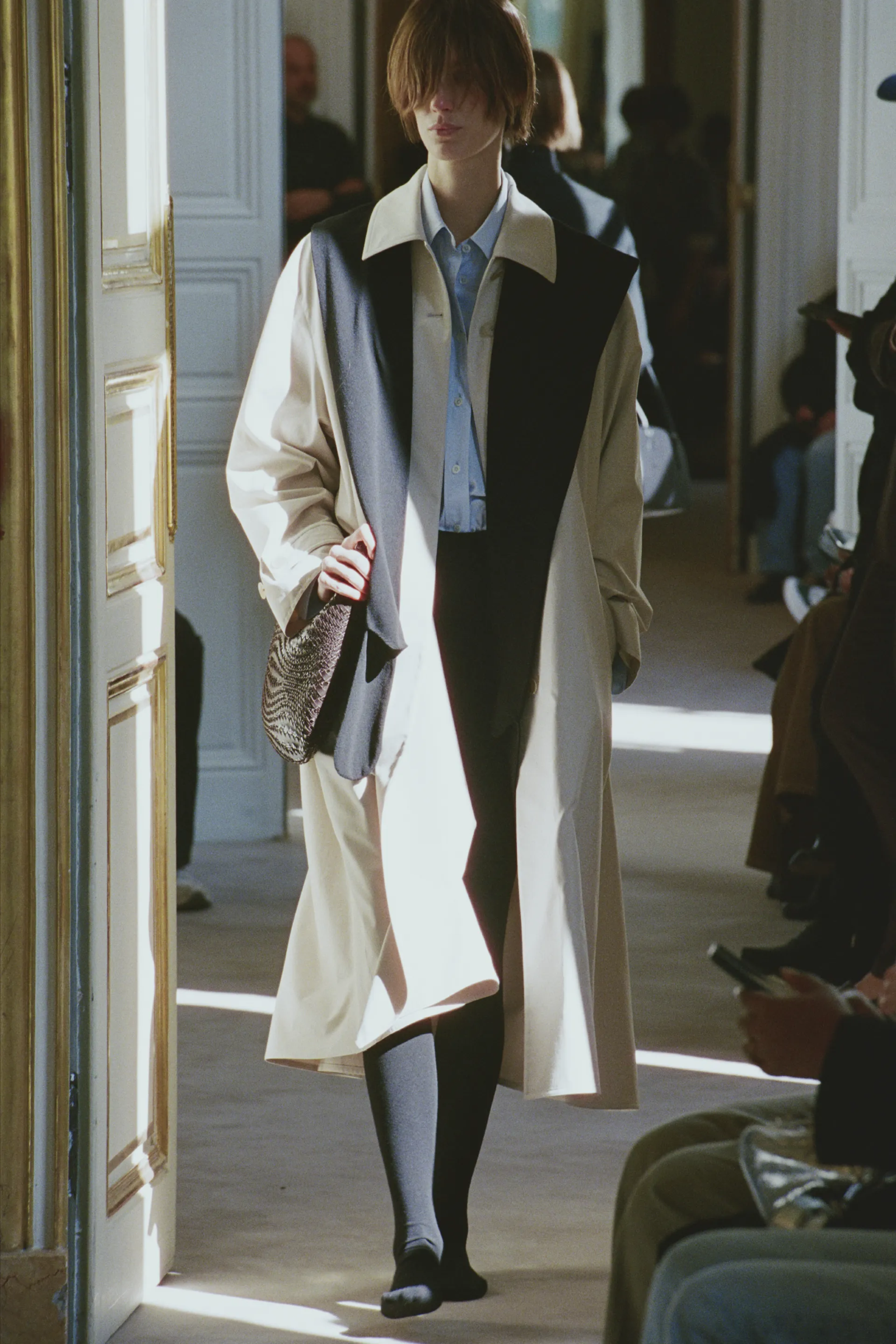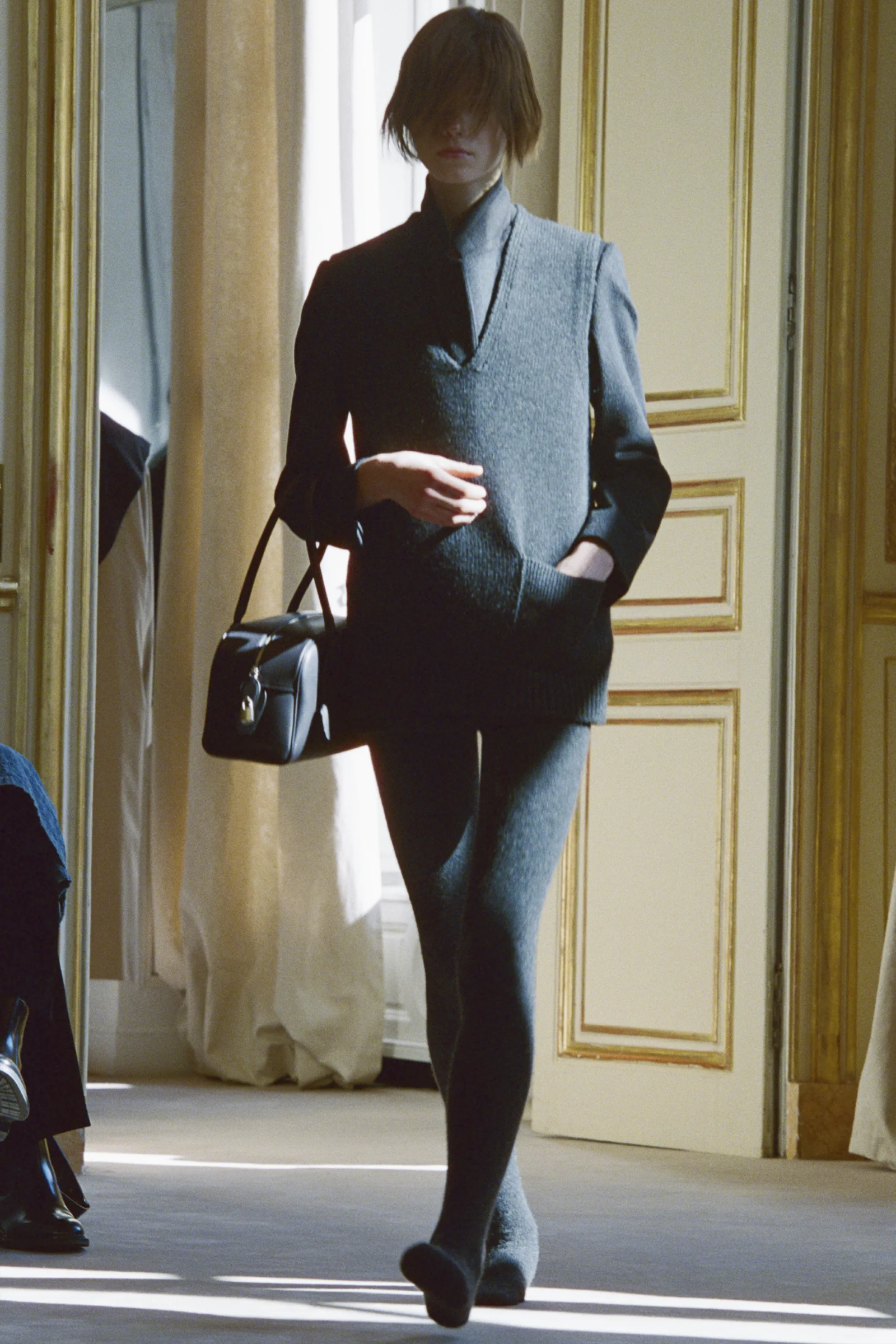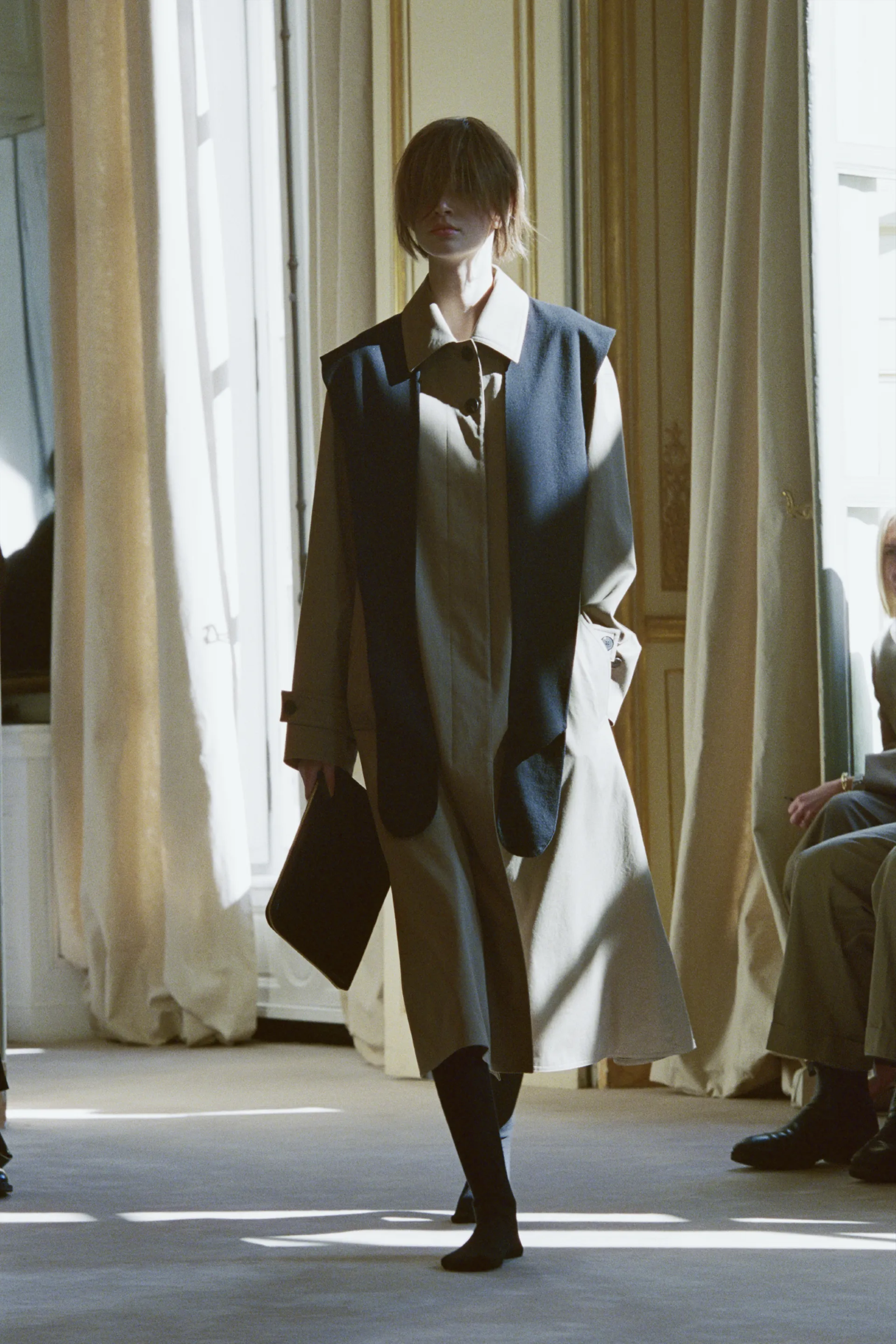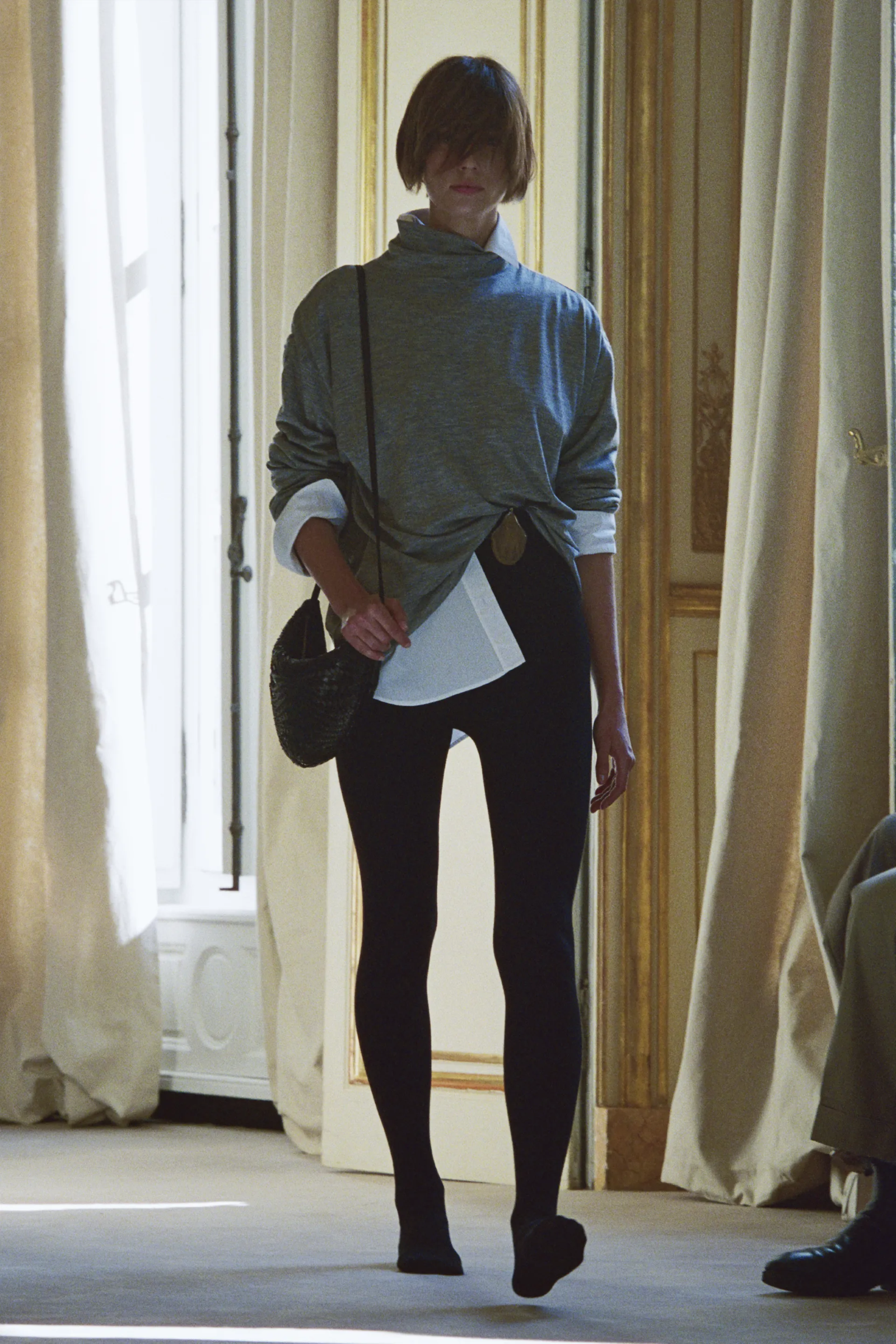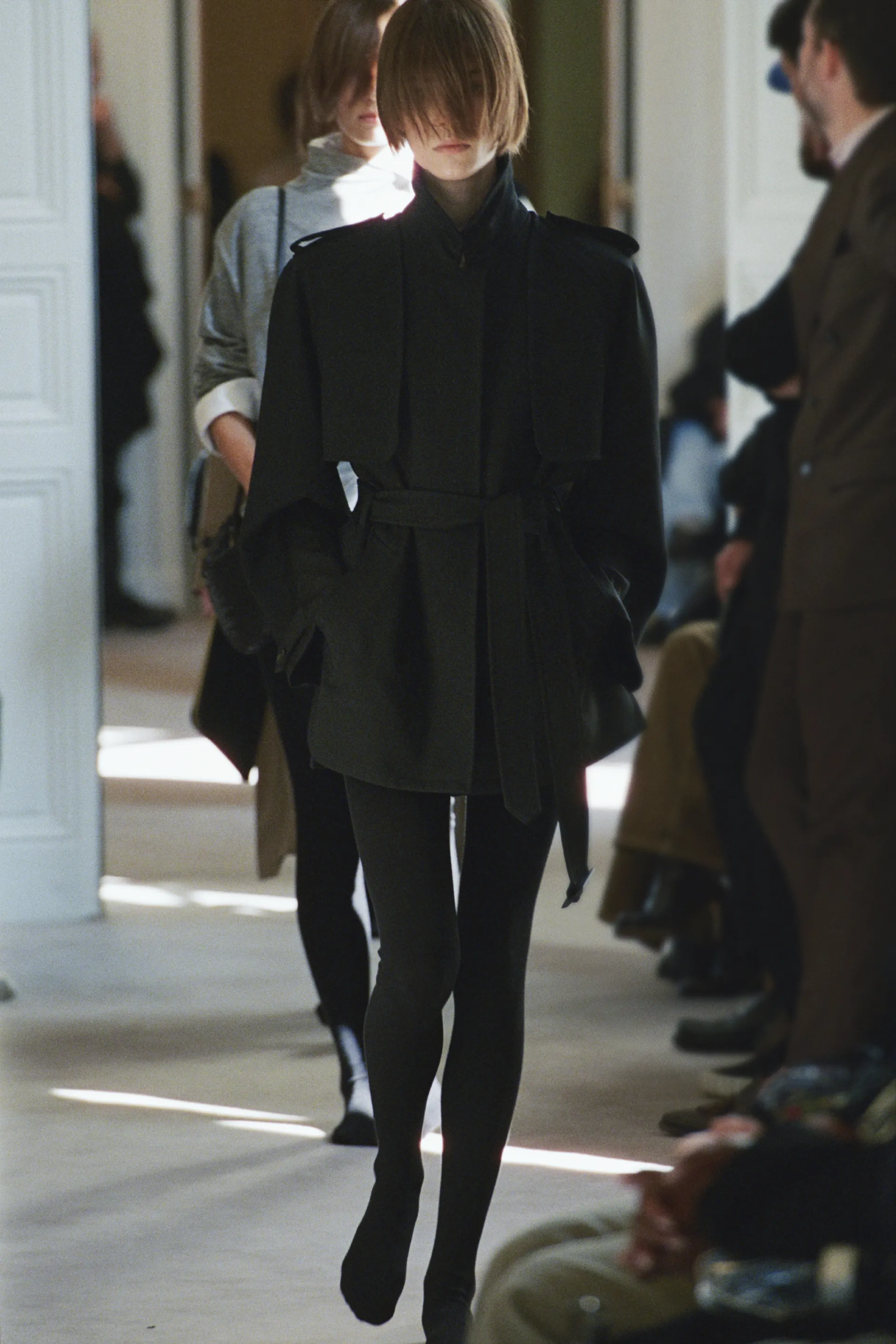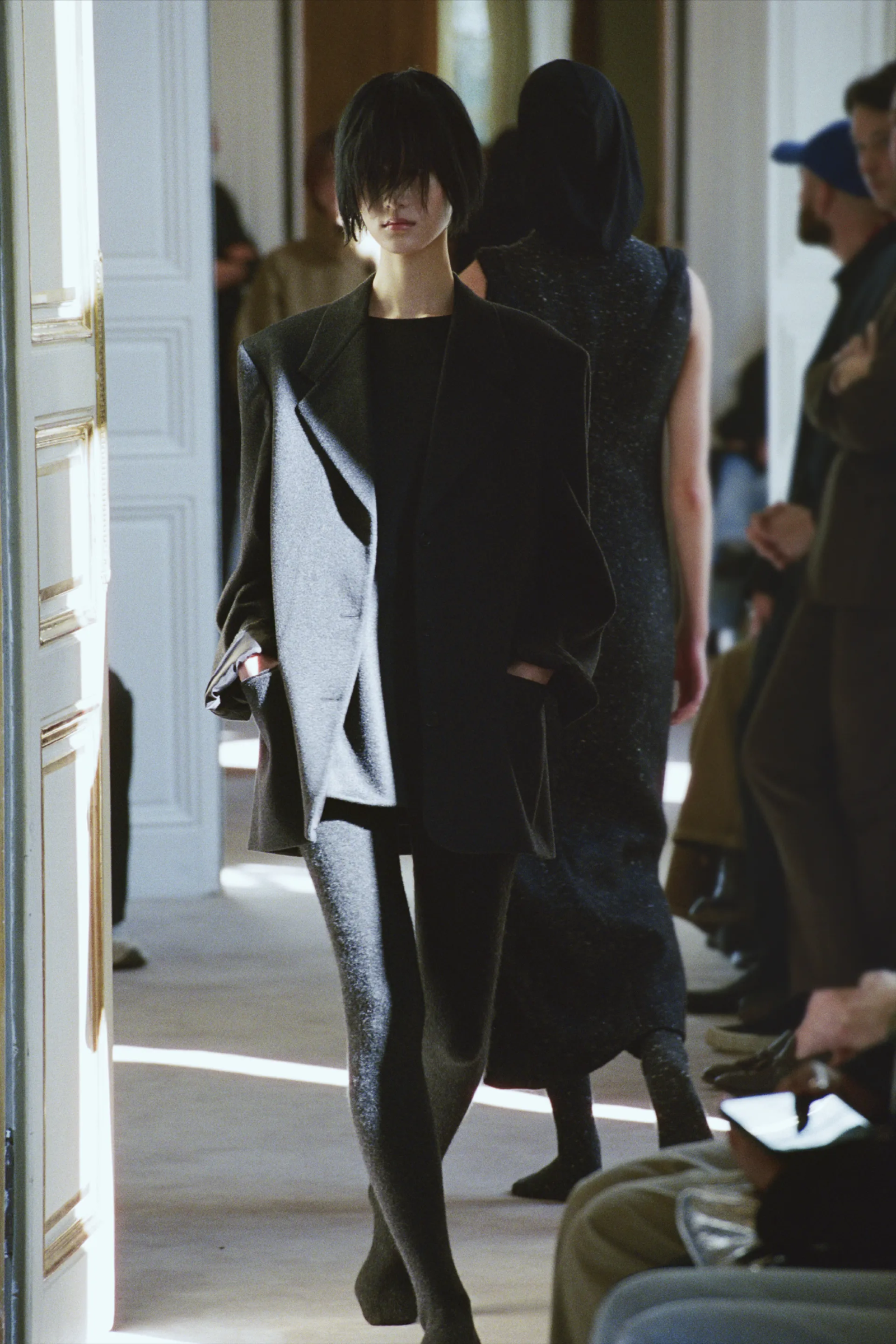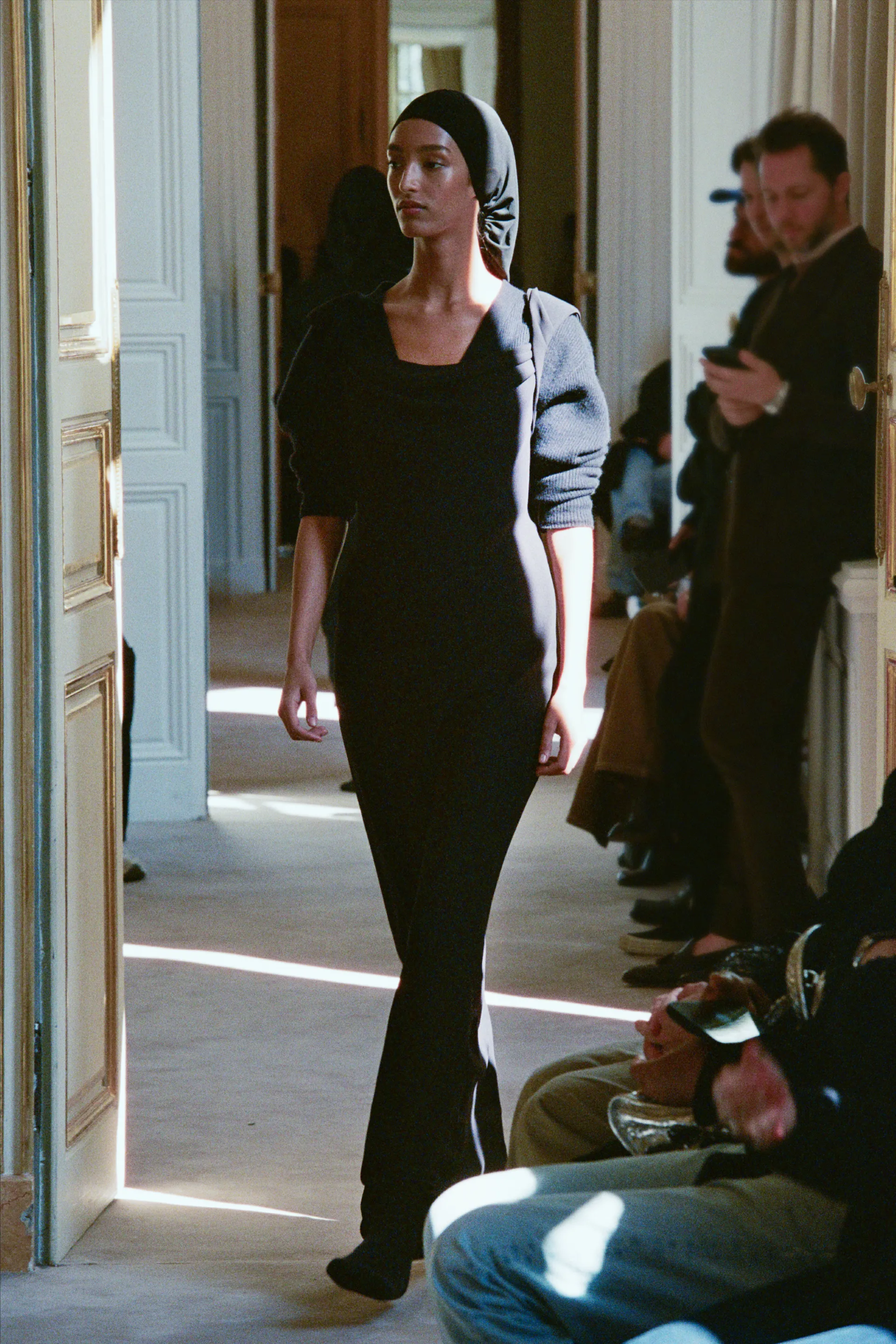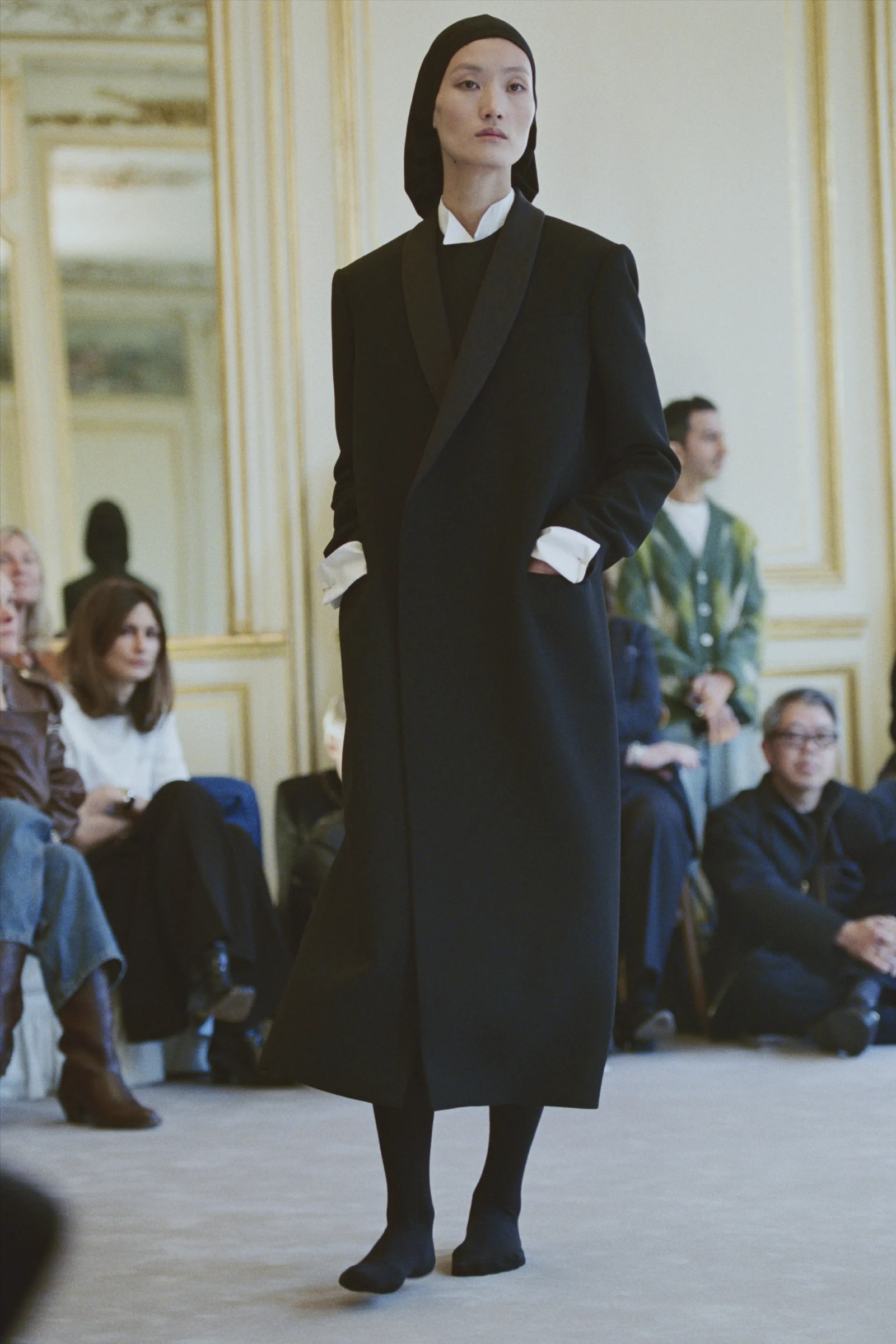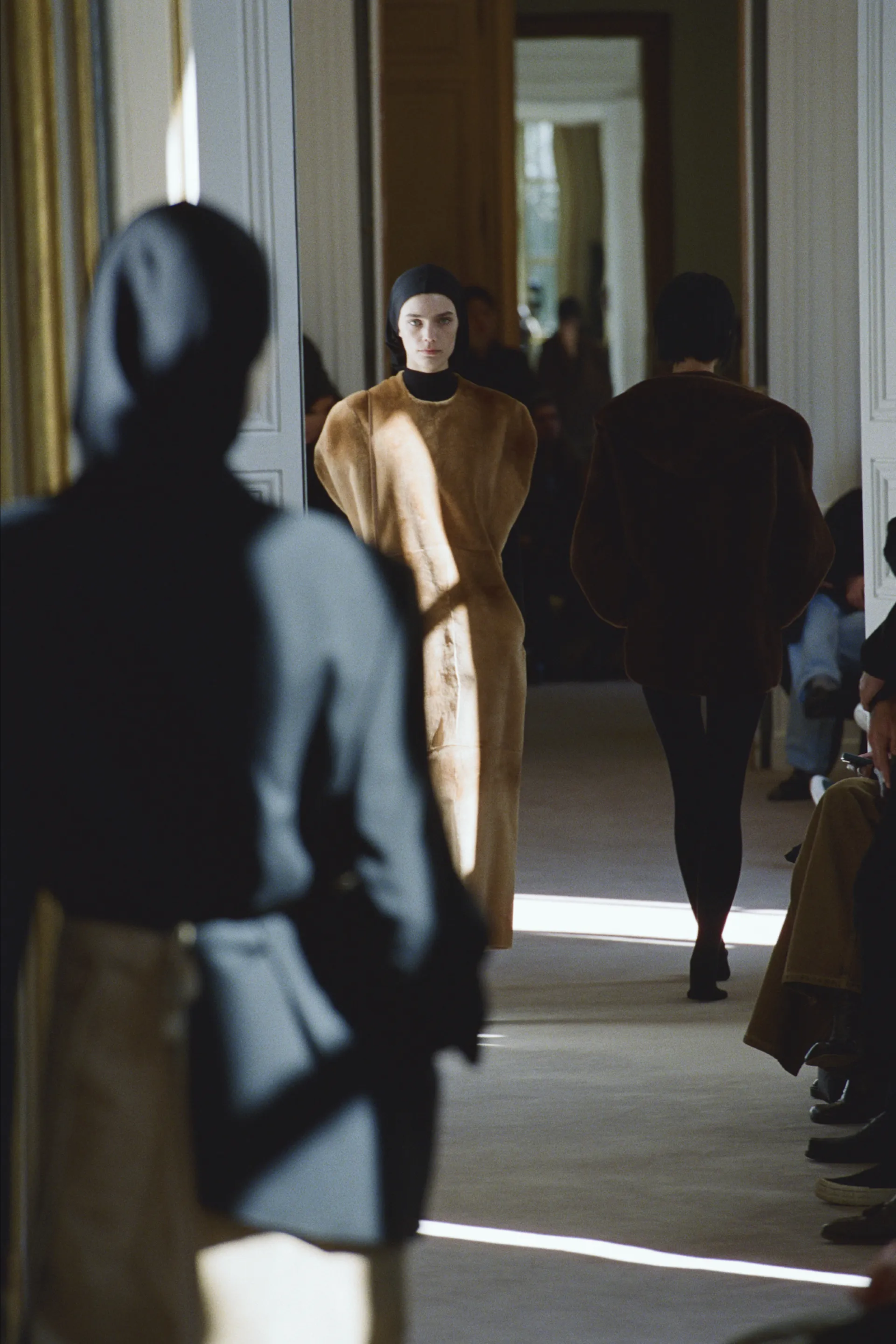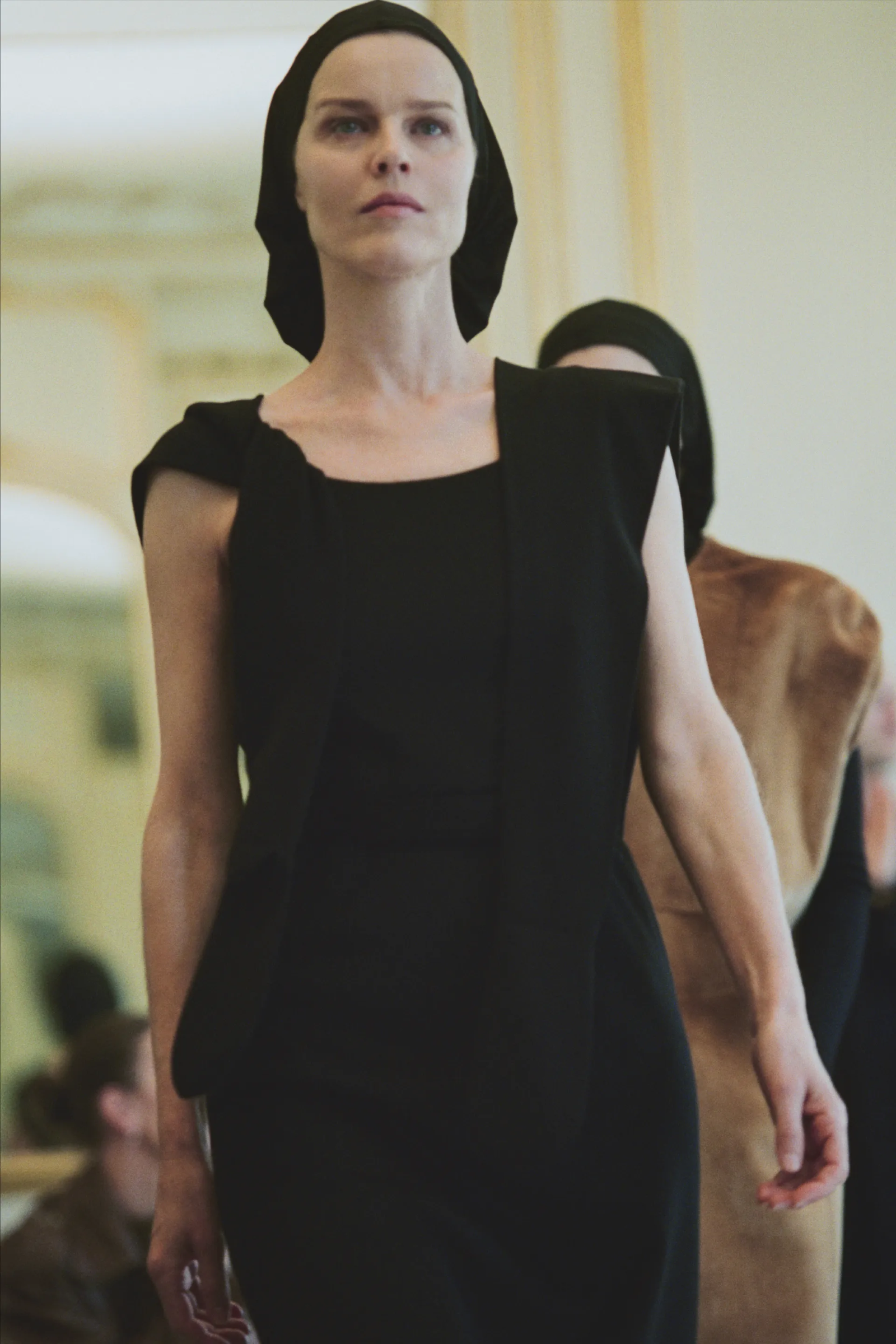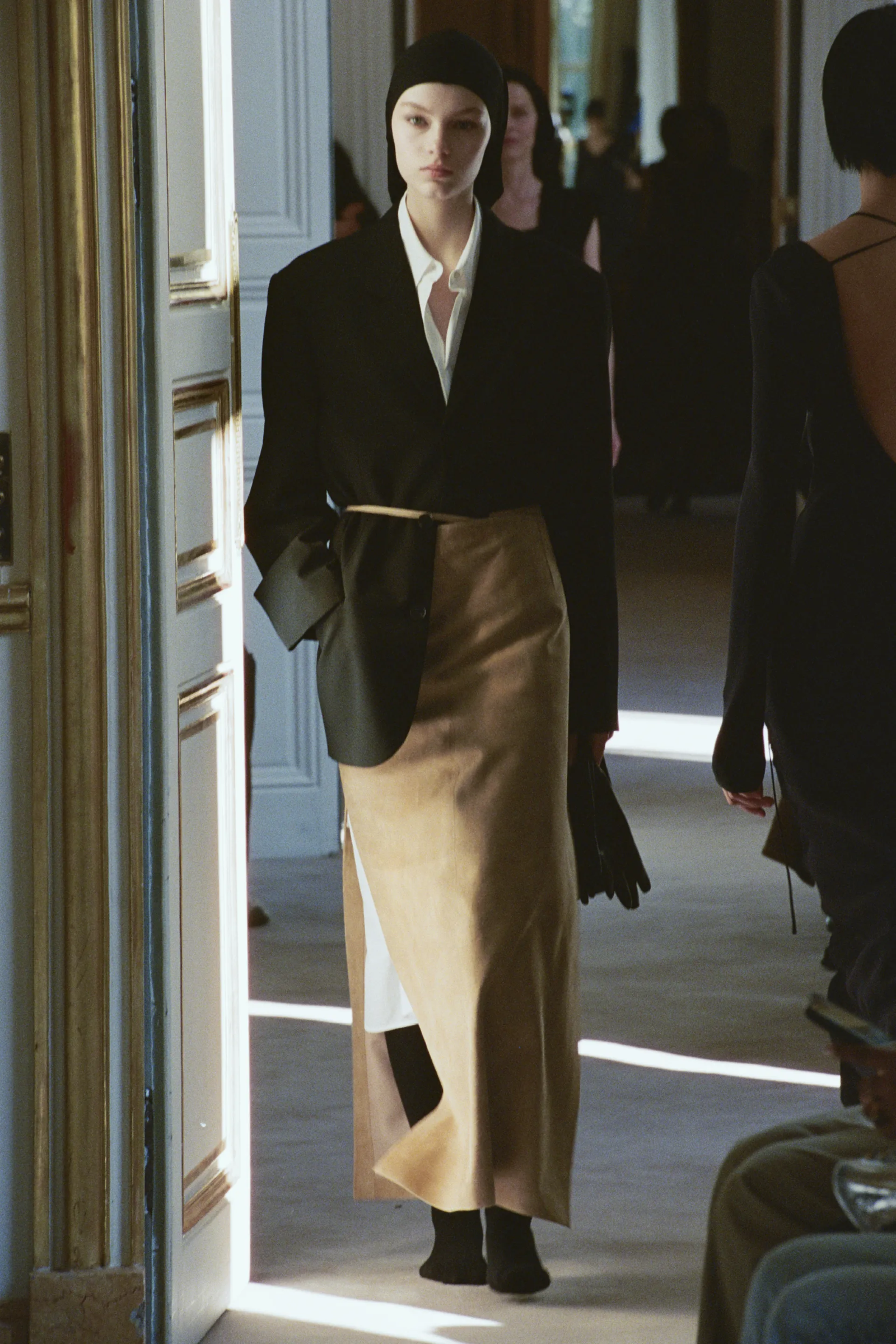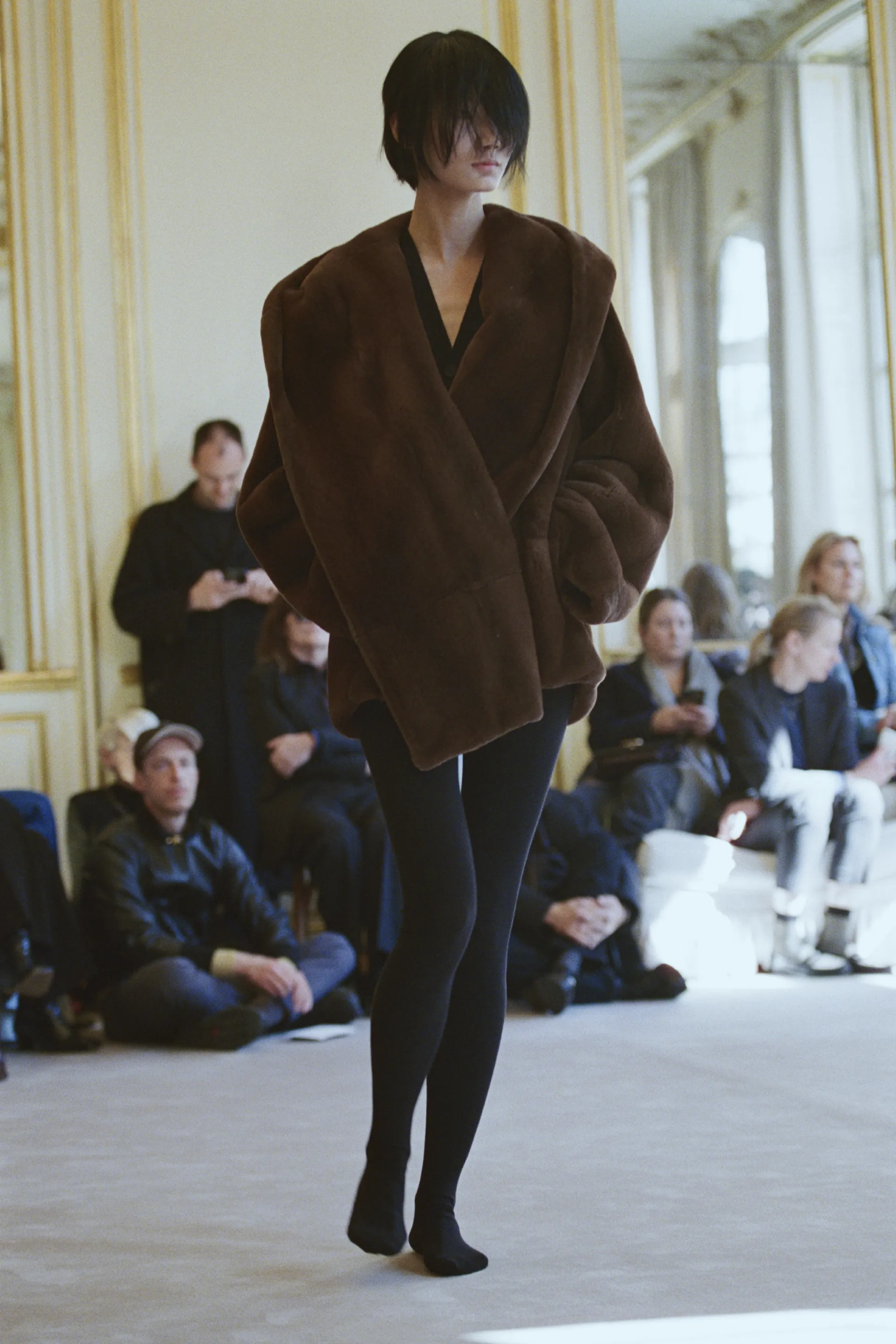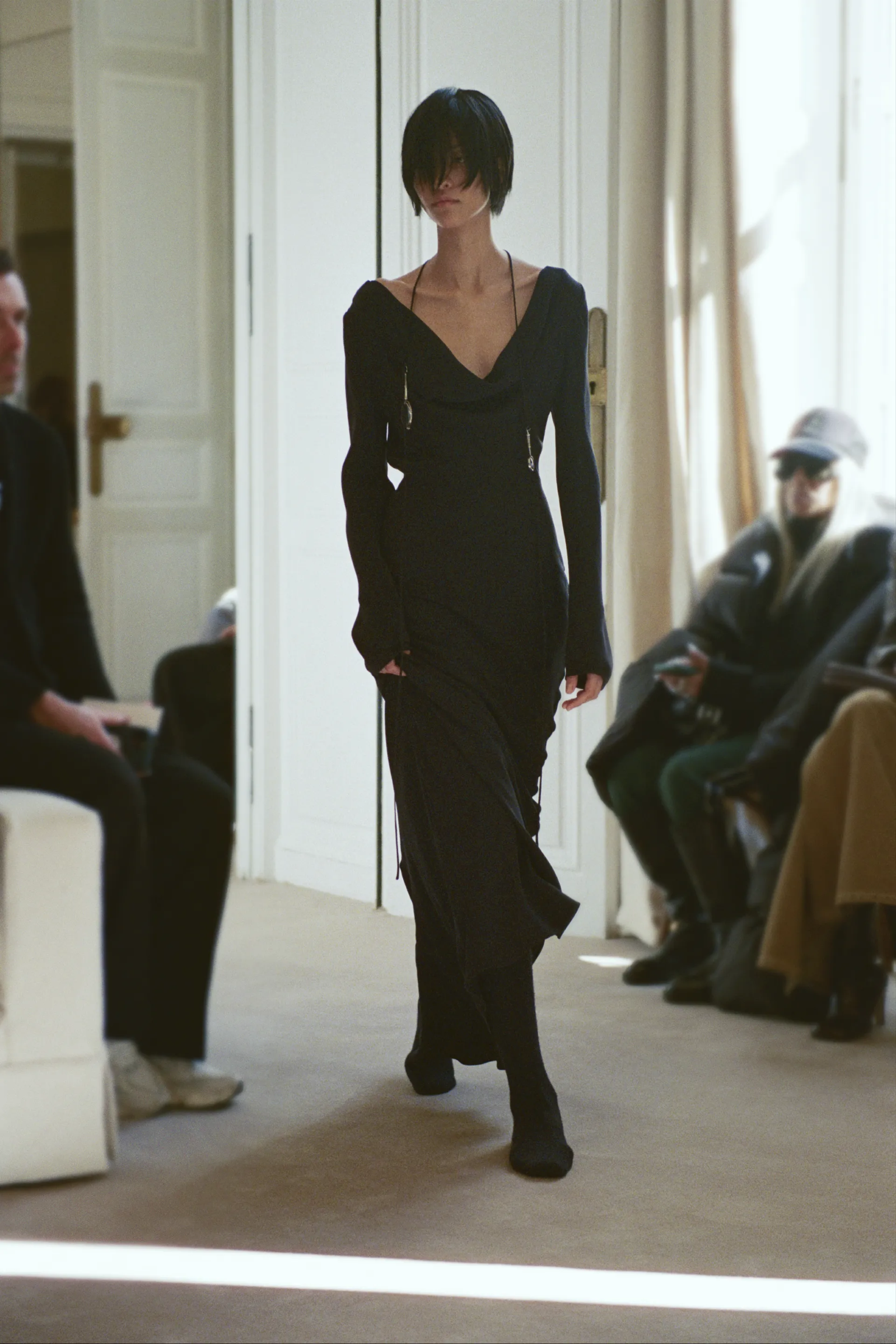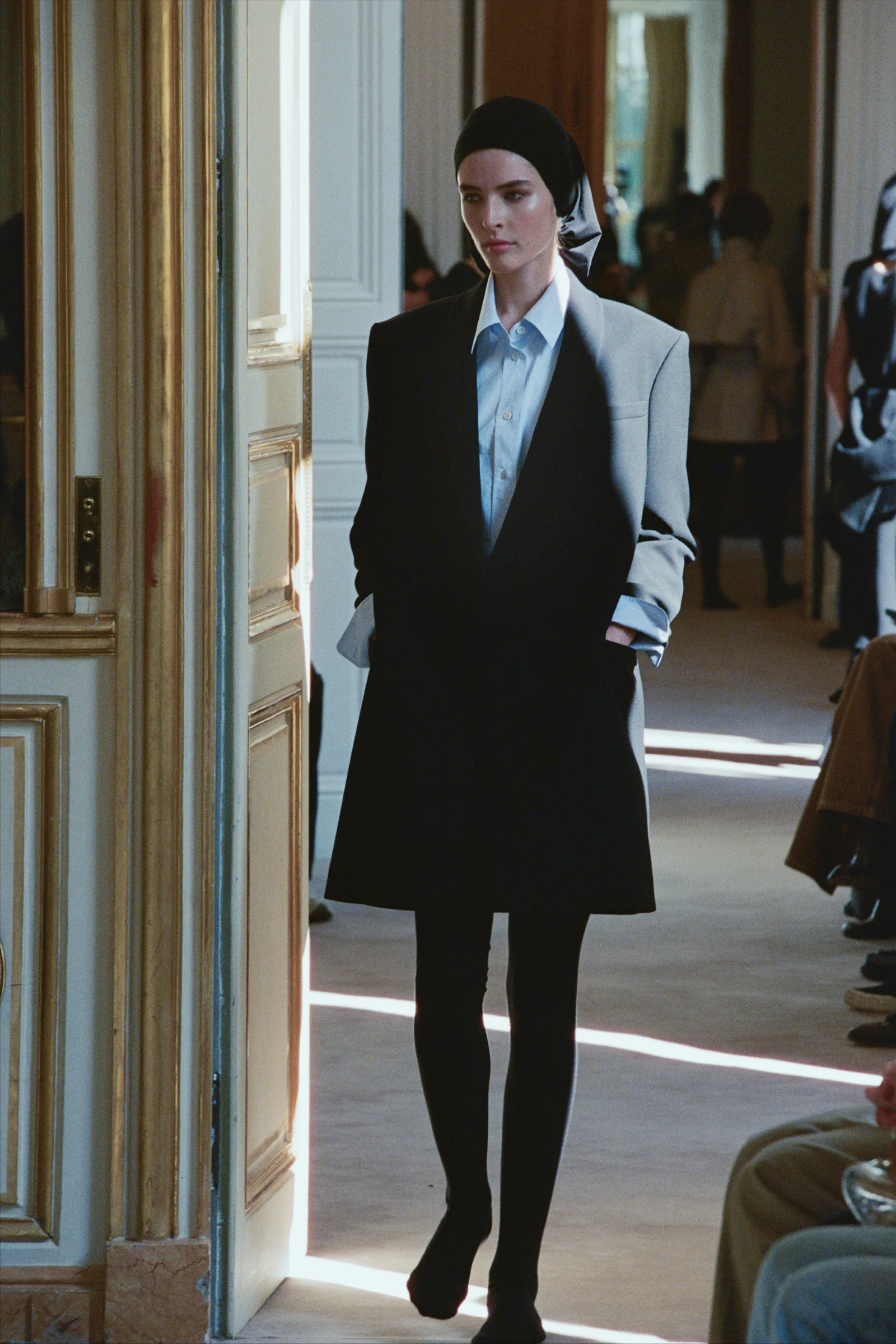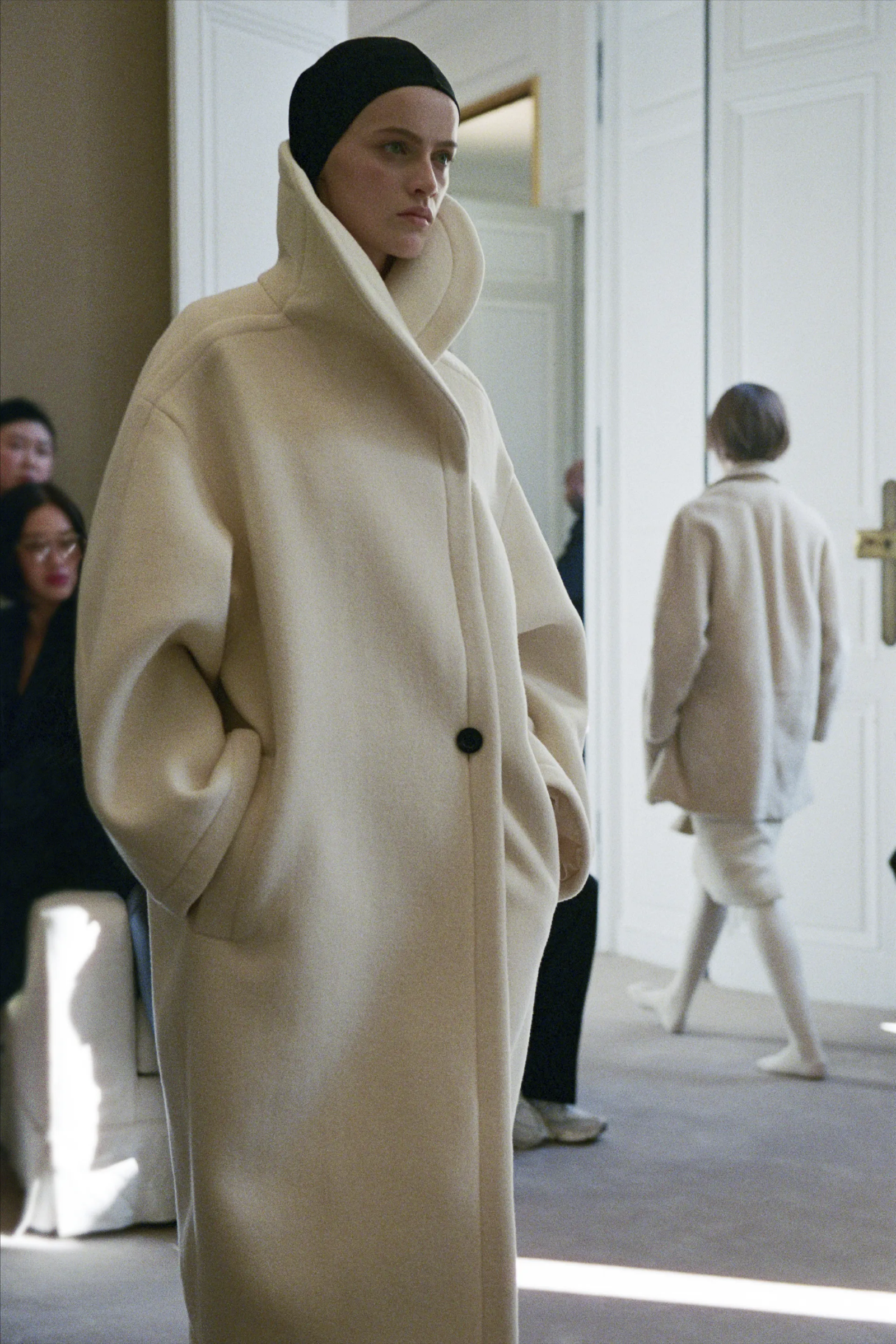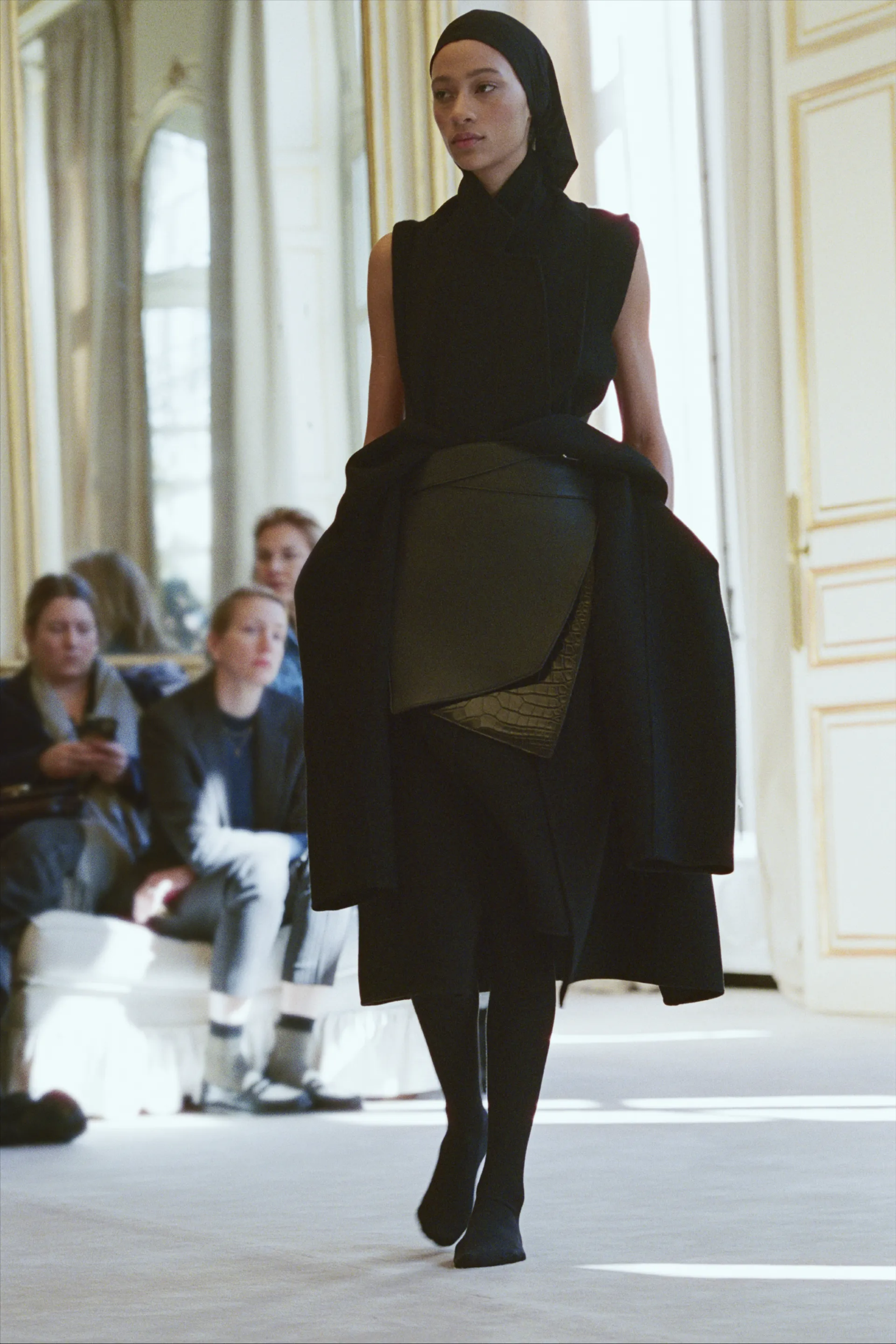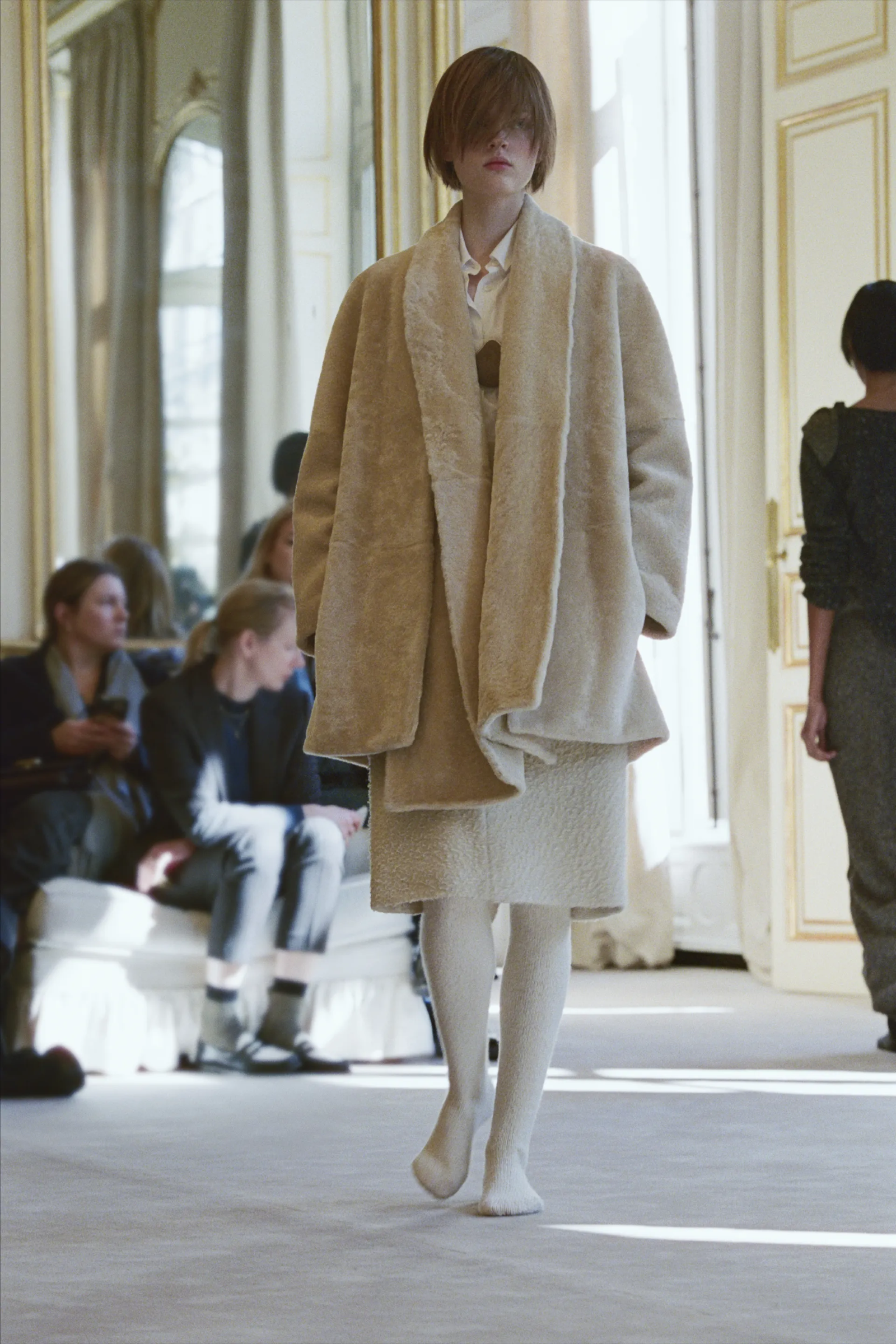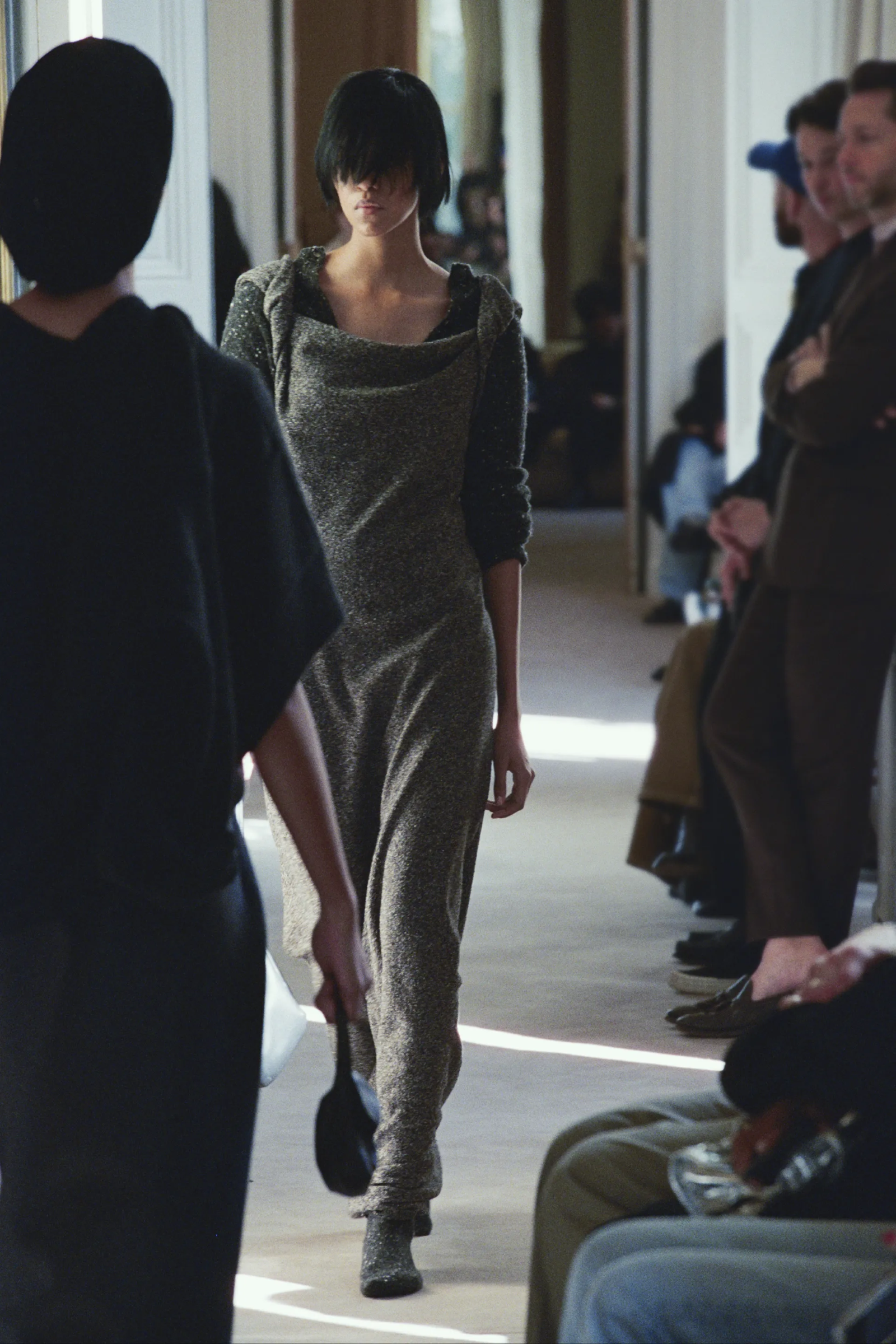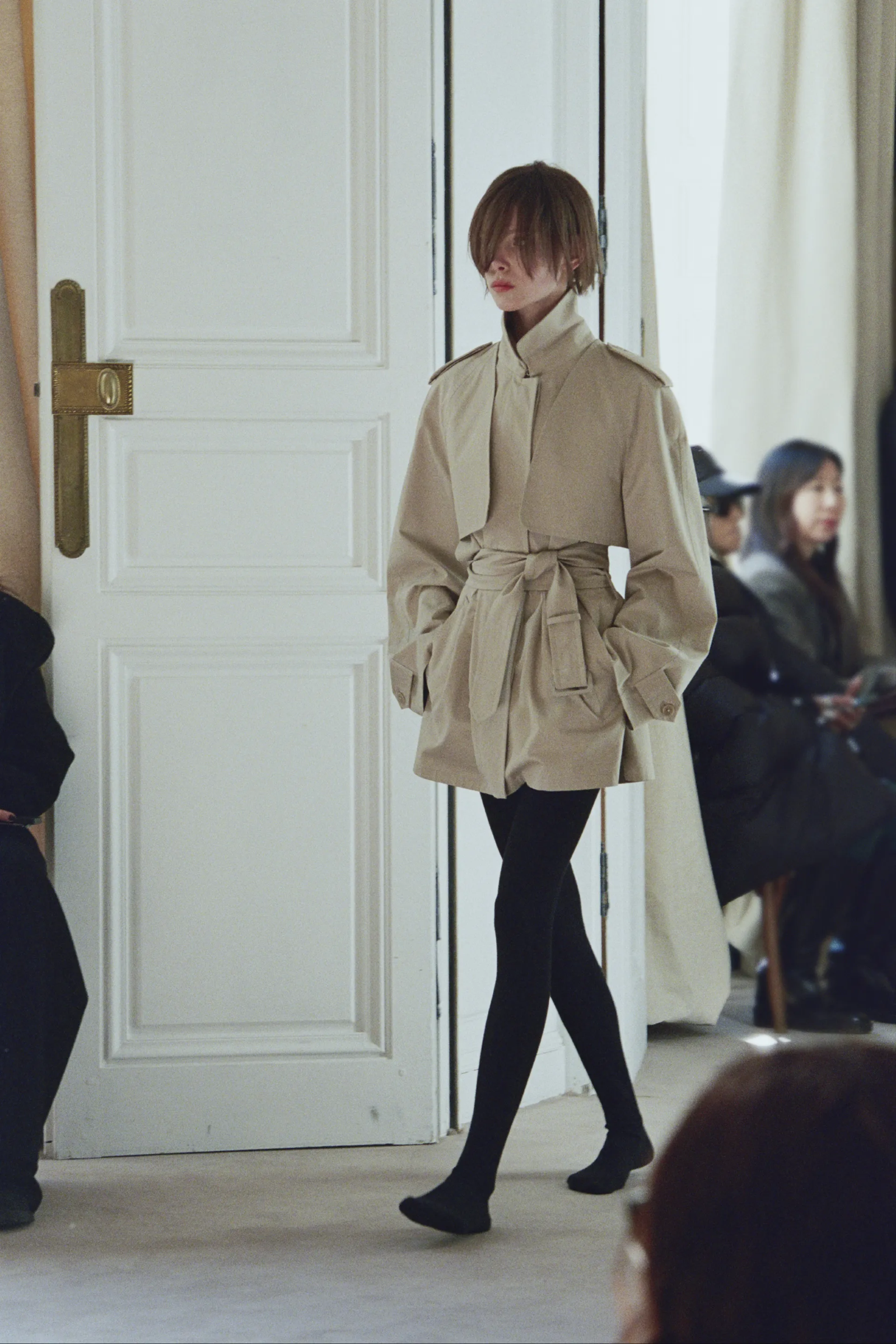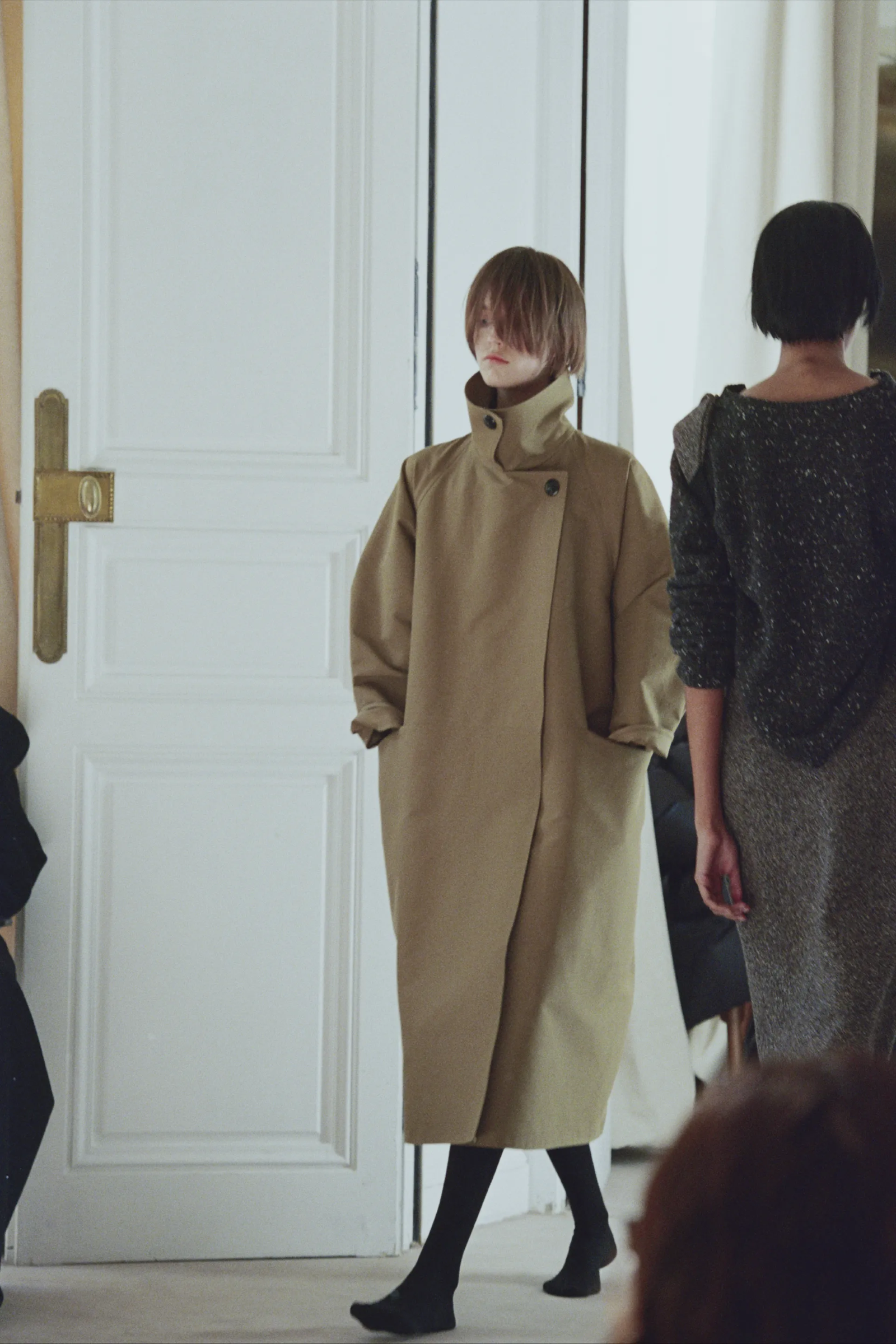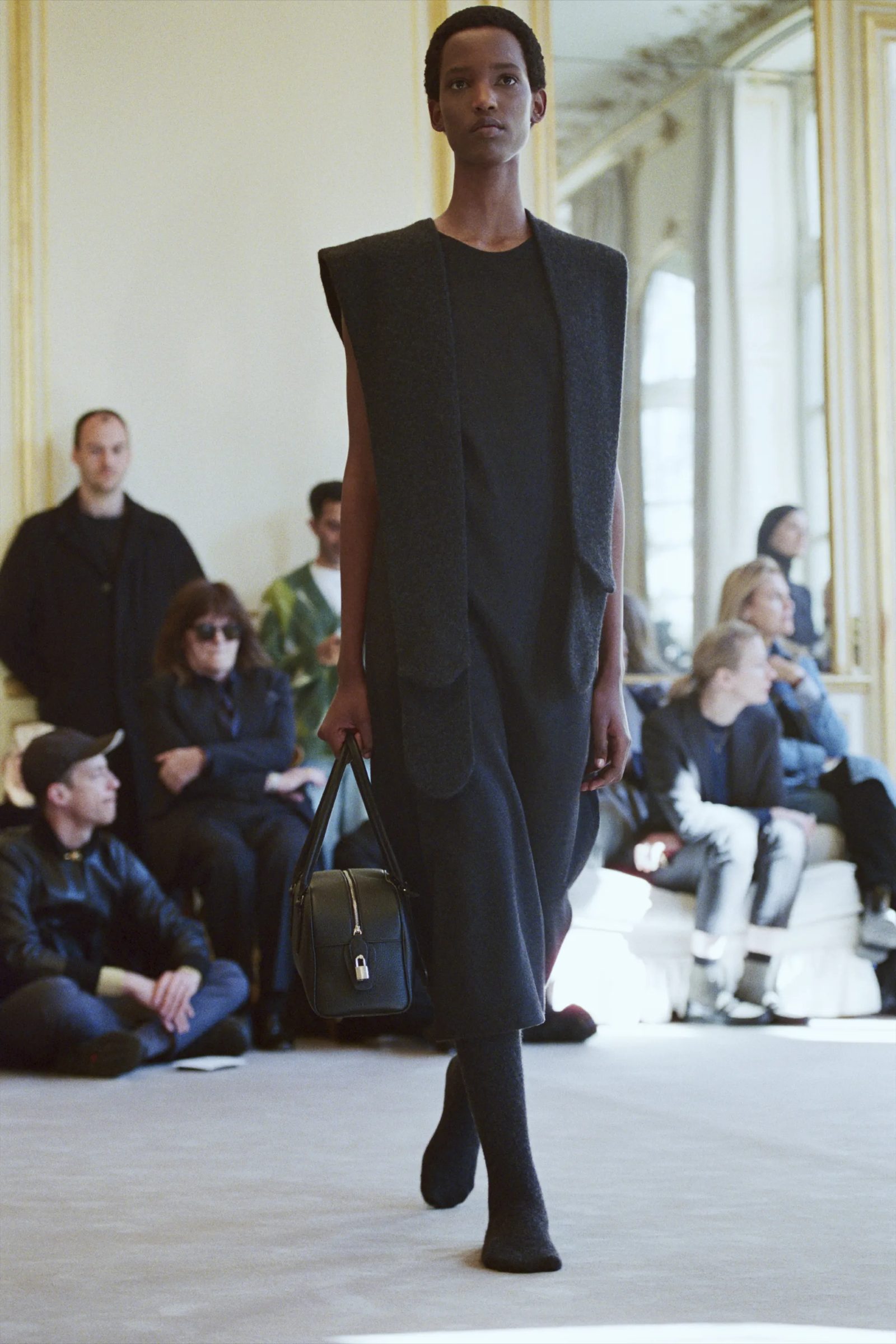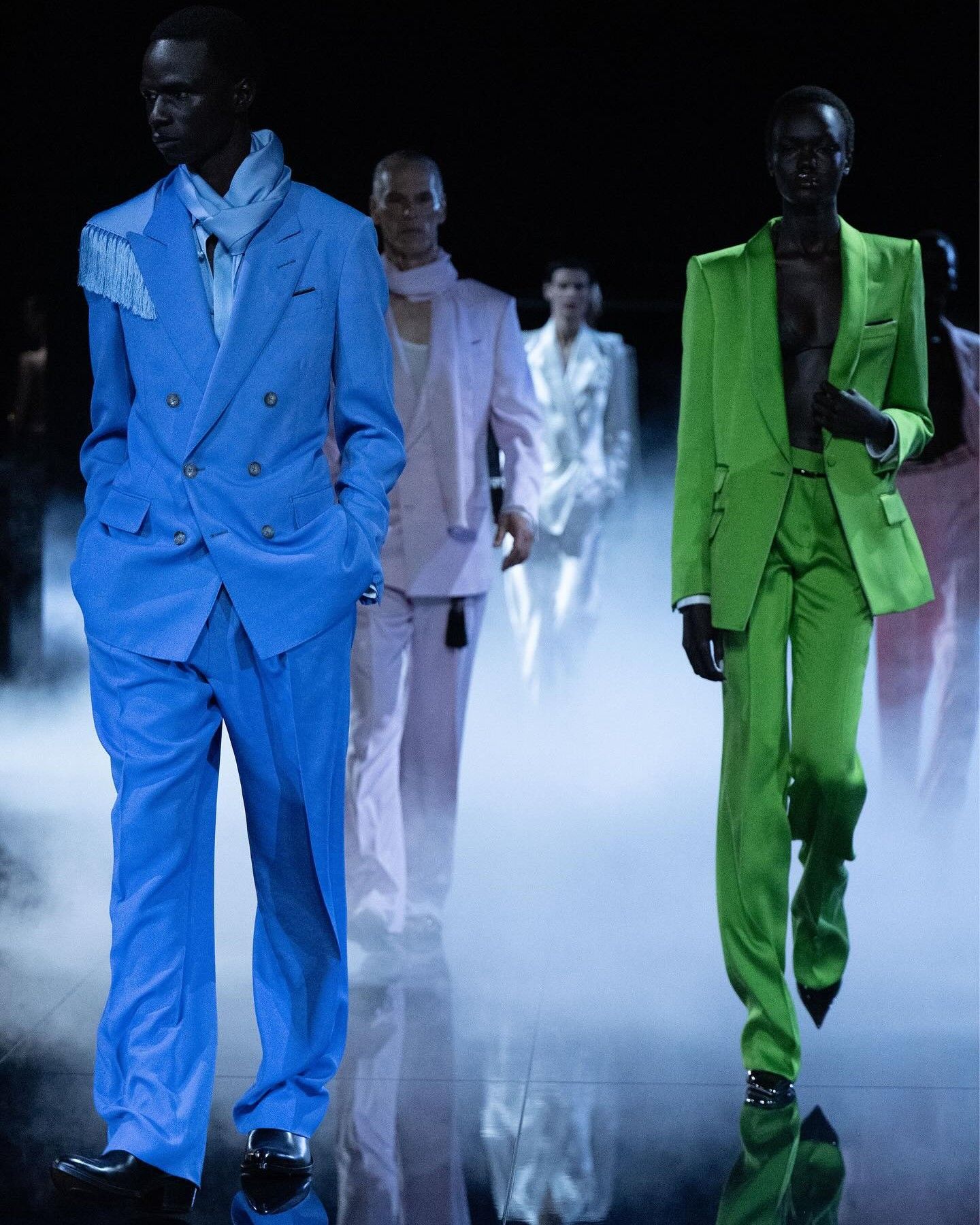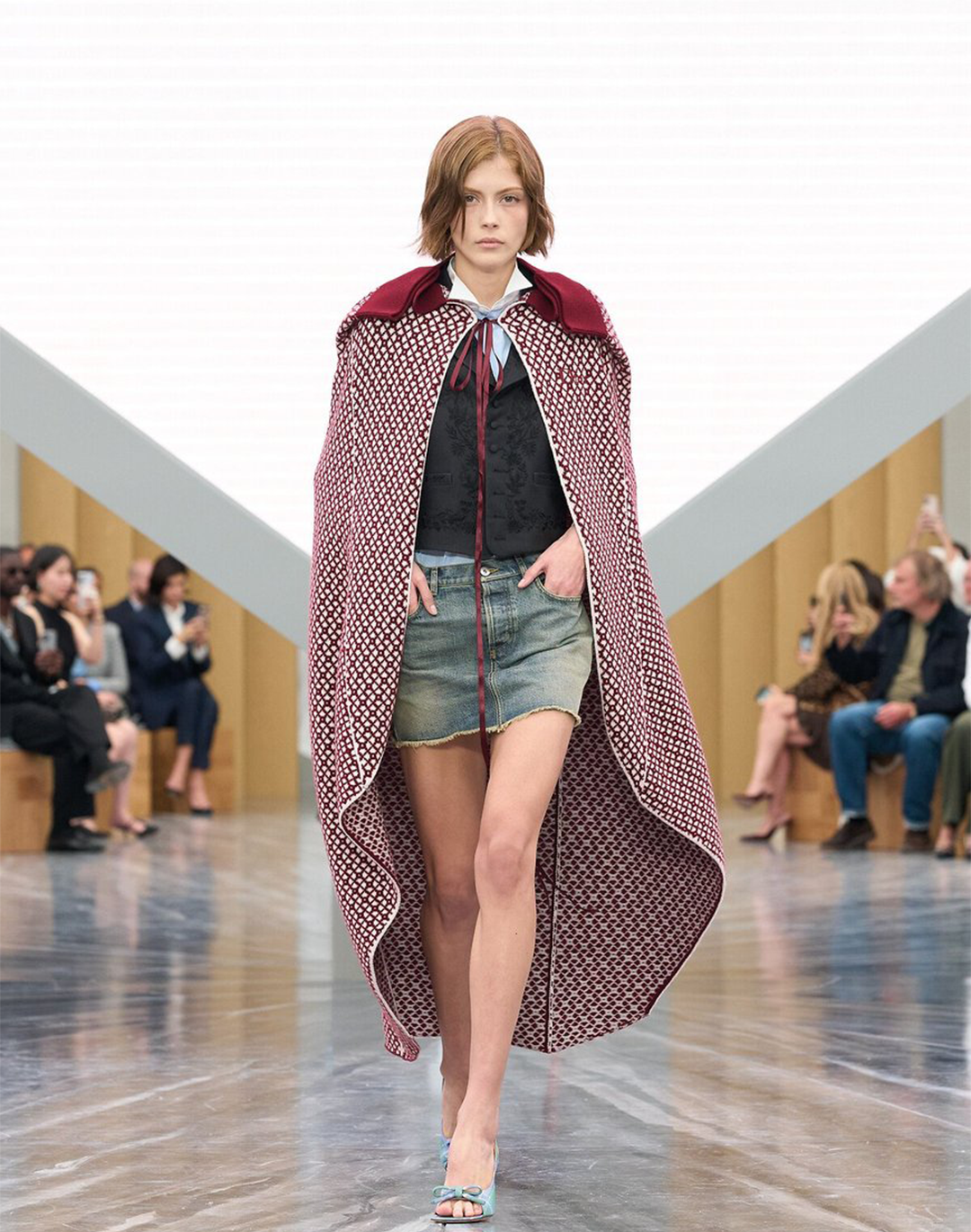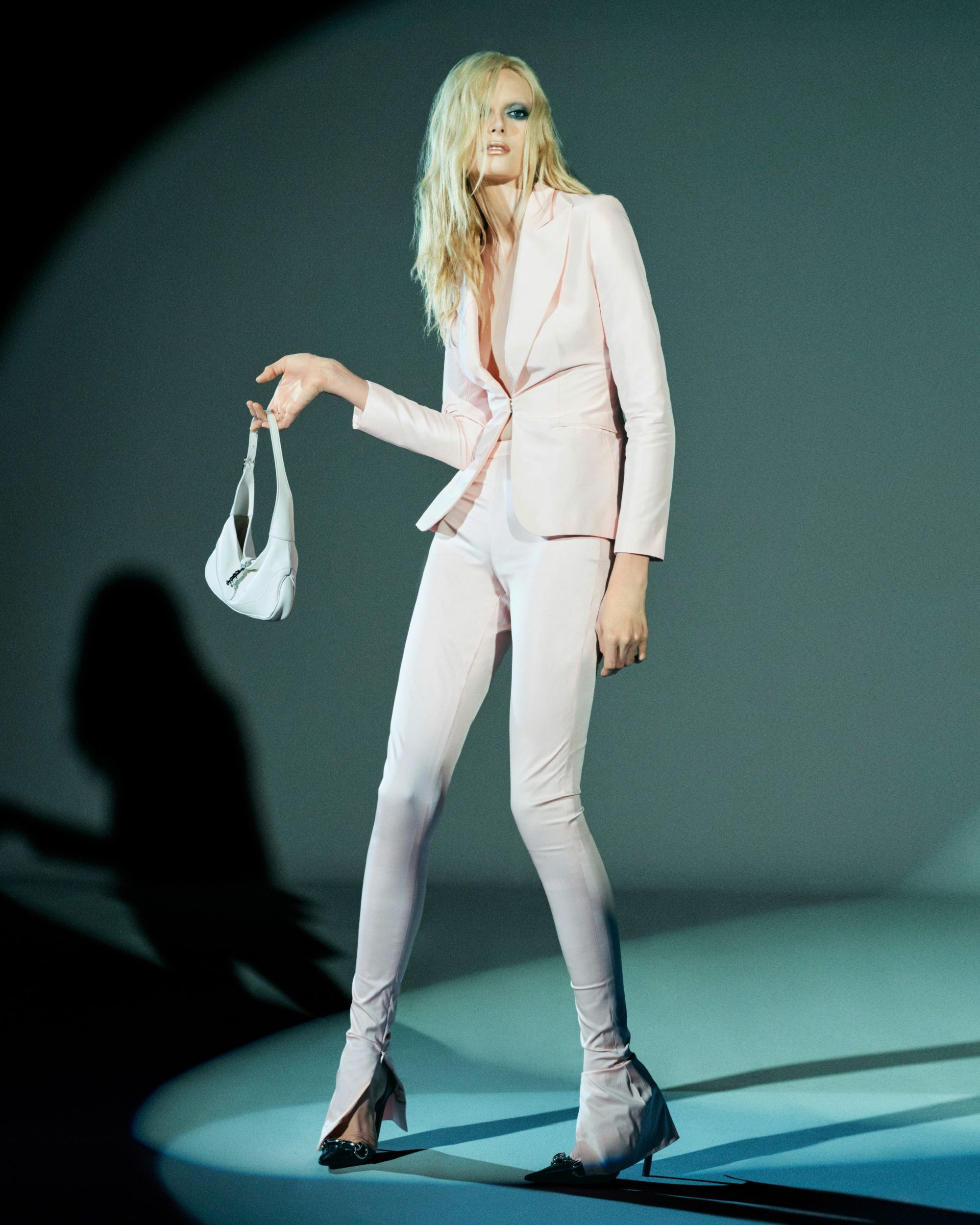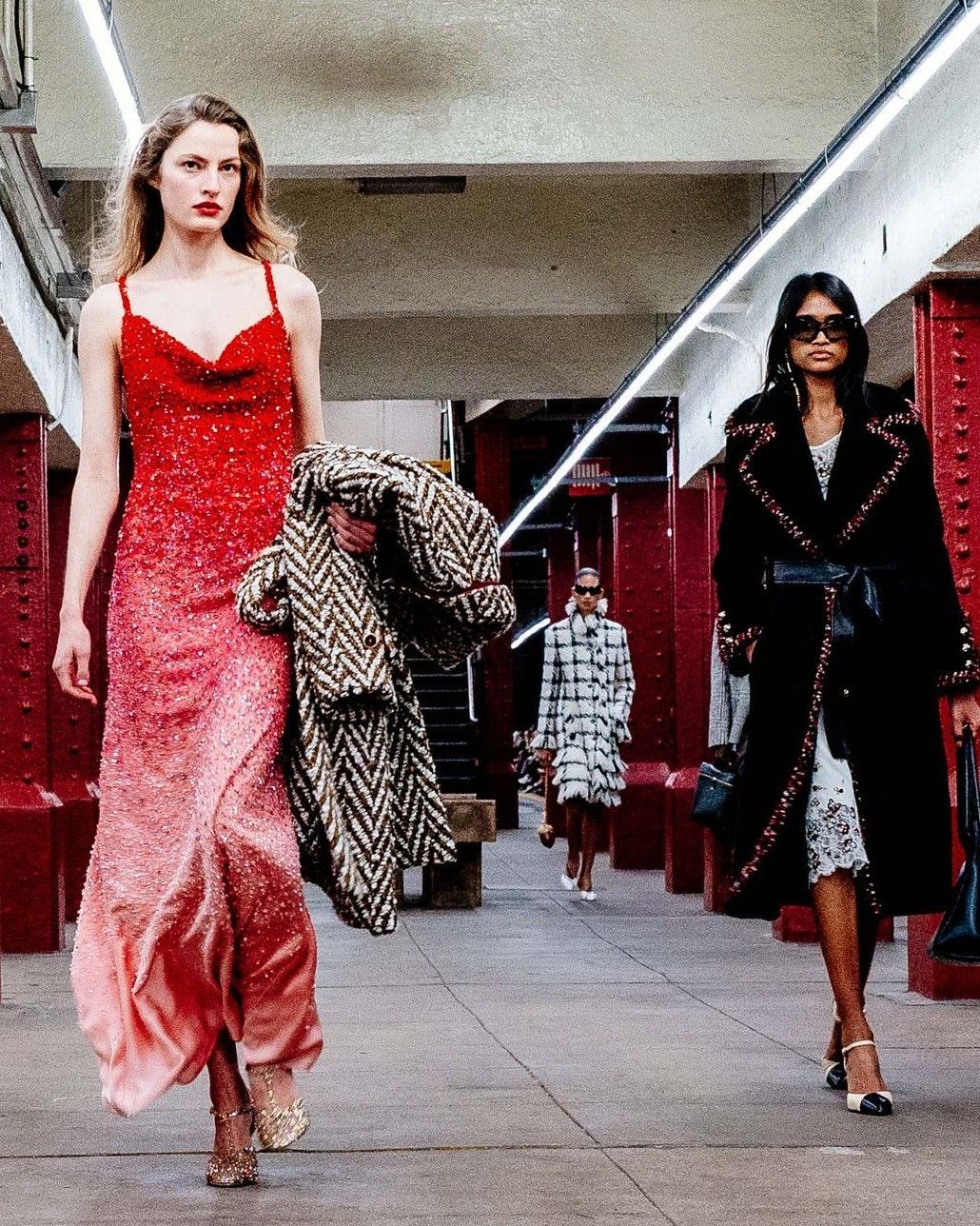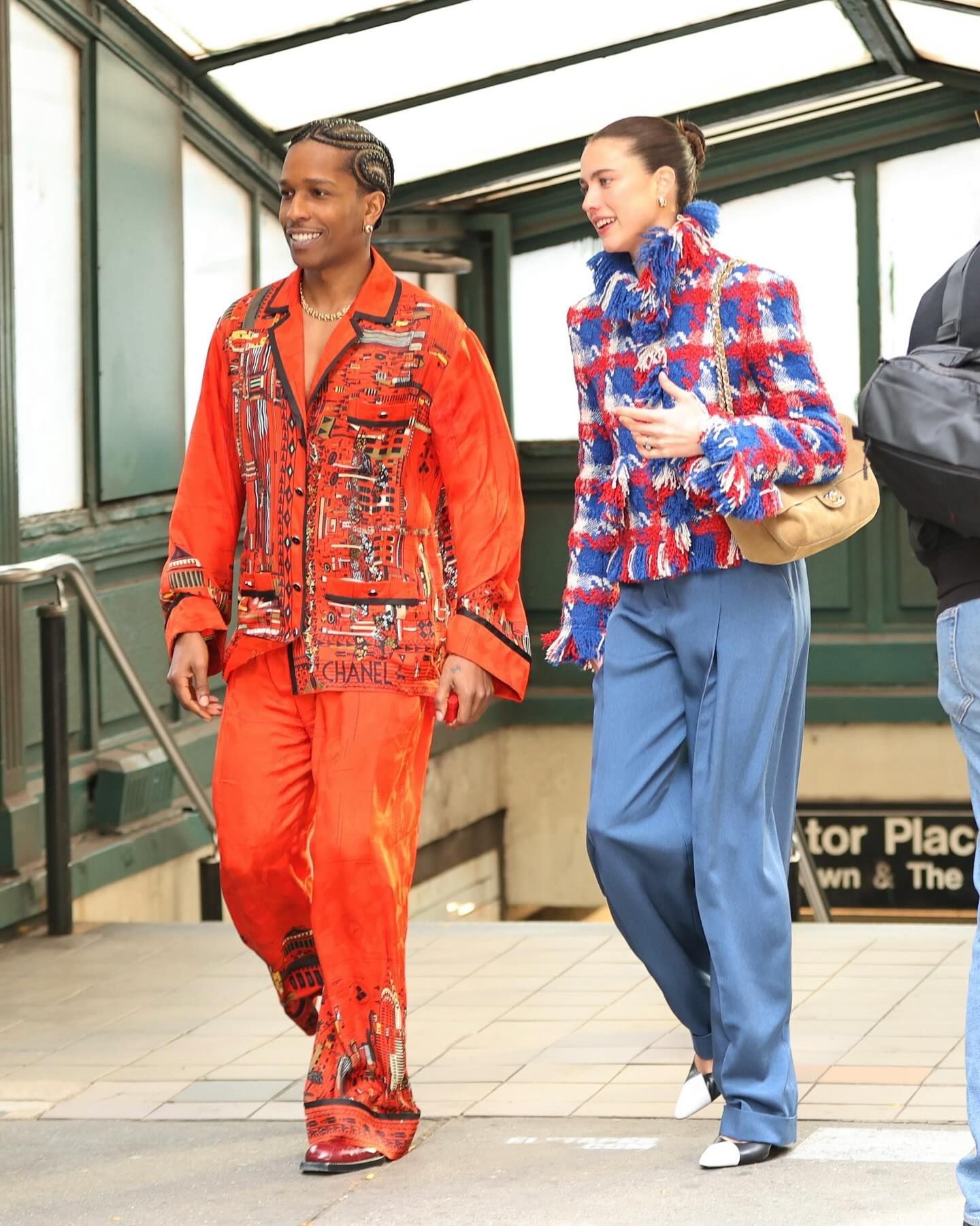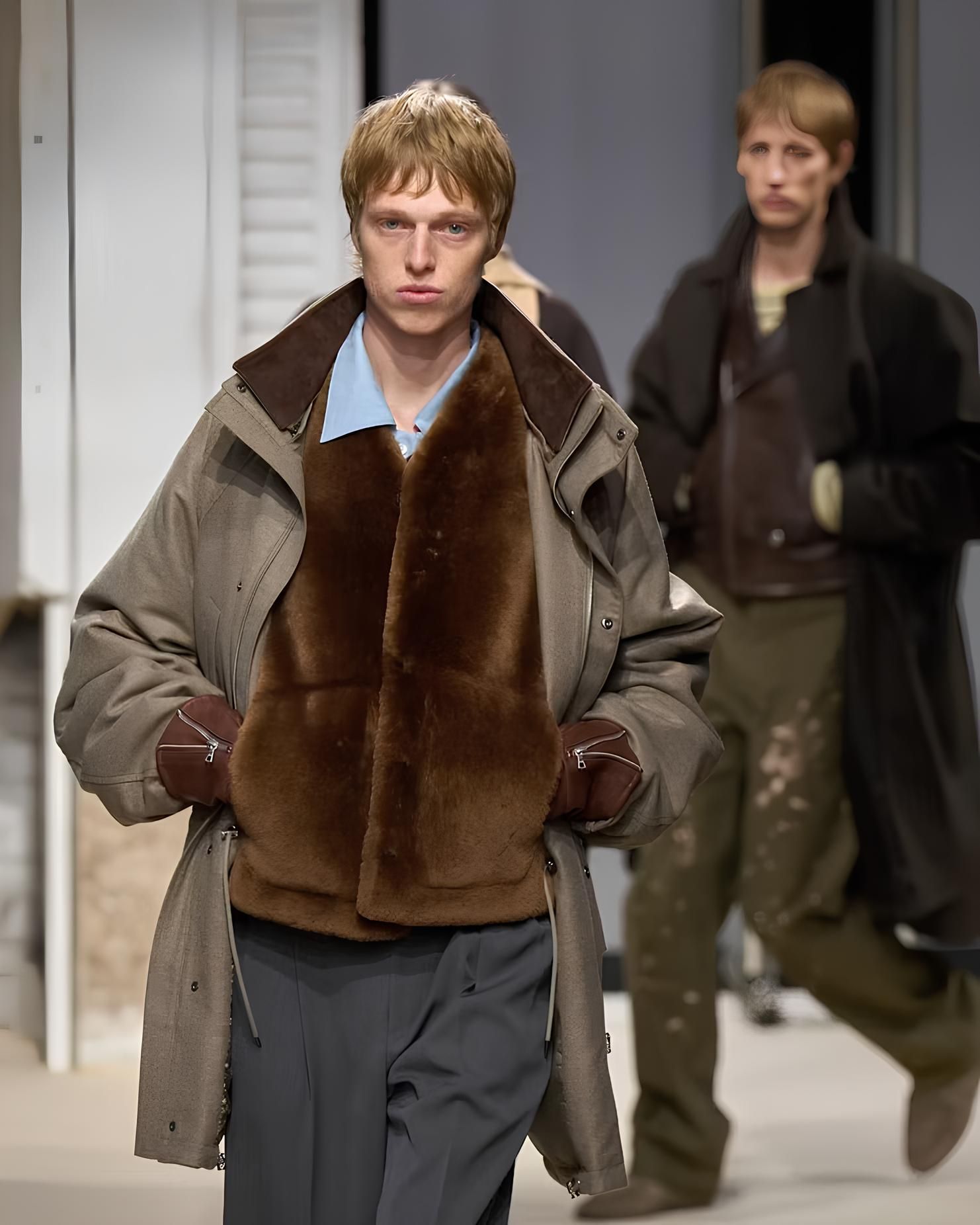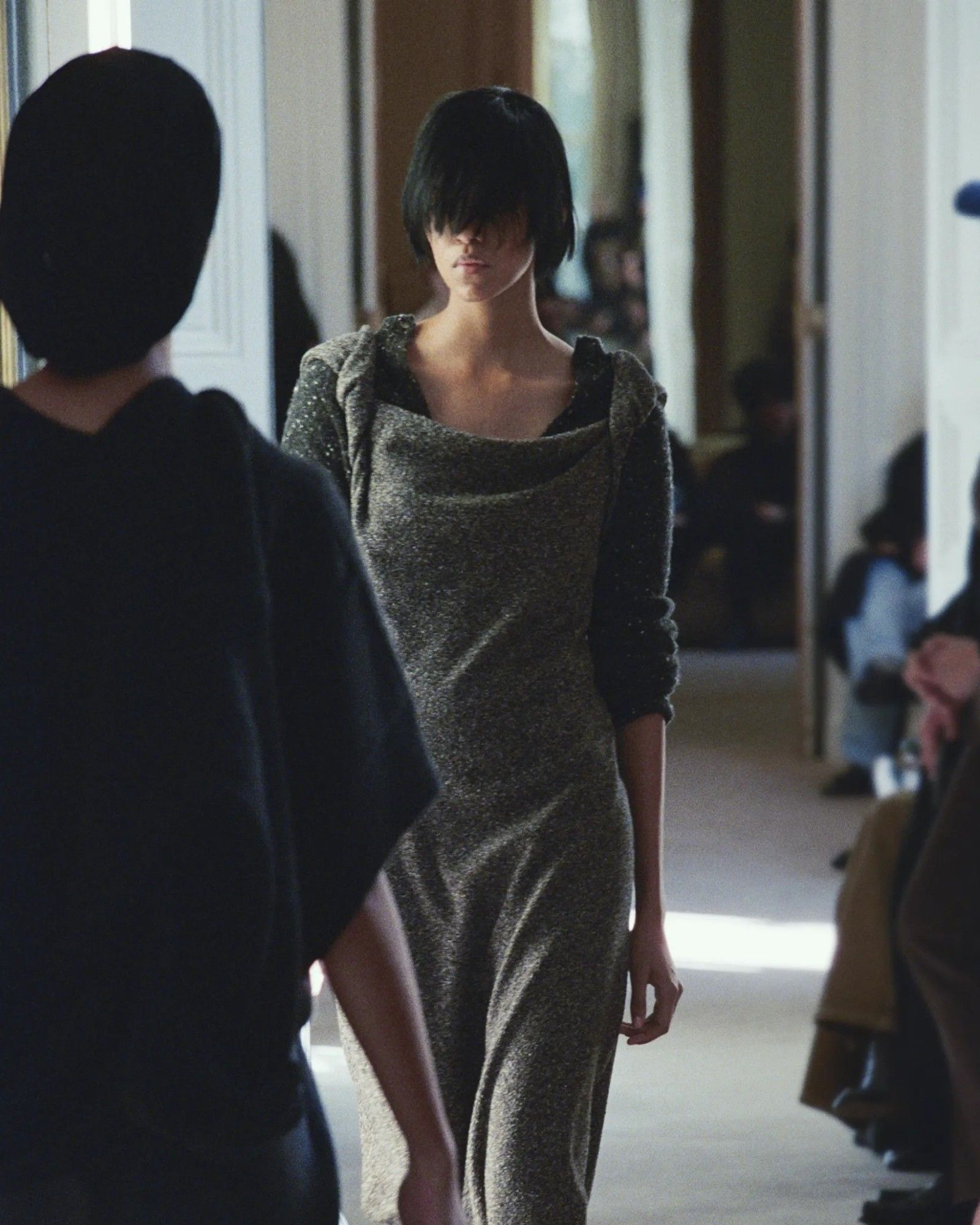
The utopia of The Row's Resort 2026 collection How the brand is rethinking the insta-show system
Whether you like it or not—and we're not talking about trends or quiet luxury—the choice of The Row to ban photos for guests during the shows, providing them only with a notebook to take notes on details and the numbers of the looks, is indeed a strategy but, at the same time, an invitation to reflect on what fashion weeks have become and how much we really care about the garments. In the age of Instagram brands, The Row raises a crucial question: how should we experience fashion weeks? The answer is not only as social events — a key element in the conventions of the creative industry — but, above all, as moments when the clothes return to the center of the conversation. We’ve already discussed, on several occasions, both the iconic elements that positioned the New York-based brand, founded in 2006 by twins Mary-Kate and Ashley Olsen, which quickly flew into the Olympus of the most talked-about brands of the past decade, and the contrasting opinions generated by their radical choices of presentation. Before focusing on the latest Resort 2026 show, it is useful to highlight some elements that show how these choices are a re-proposition of dynamics typical of the early days of the French haute couture system, both in terms of presentations and sales spaces.
If we go back a century, the presentations of couturiers took place in refined and intimate atmospheres, similar to those desired by The Row team, in salons with few guests, where paper and pen were used to take notes on details and the numbers of the looks. This allowed the press to identify the garments and illustrate the creations, because, although cameras existed, they were not yet as fast and handy as today's phones. The only way to quickly record the looks was through quick sketches made by designers, and through meticulous descriptions. The retail choices also evoke the visionary tactics of the past century, when clothing became just one of the many expressive areas of a designer. An emblematic example is Paul Poiret's house-showroom, conceived also as a place for events and dances, designed in 1922 by modernist architect Robert Mallet-Stevens, located 40 km from Paris. Similarly, in 2016, The Row, in collaboration with Montalba Architects, won the American Architecture Award for its house-showroom in Los Angeles, a project that embodies the same modernist spirit. These choices, though seemingly naive, tell us how the cultured twins want to elevate their work and emphasize a historical knowledge that can only benefit a brand and a designer duo that has always done everything to shake off the image of teen Hollywood actresses.
Back to us, as is the case before entering the Berghain in Berlin, the imposition of not being able to use the phone and therefore not being able to take pictures to immediately post on social media is now a constant of The Row's Parisian shows. On March 5th, their latest presentation for Resort 2026 took place. The silhouettes evoked some pioneers of avant-garde minimalism from the late Eighties to the early Nineties, and the reference to iconic Martin Margiela ensembles is visible, such as the choice of hair covering the face, shoulders, and knee-length skirts. The ongoing work on layering, a constant of the brand, represents bodies that do not want to be seen but want to be imagined. The choice of noble materials, like cashmere, is always impeccable. The photos released, despite having a vintage touch, still highlight the high quality in the material choices. The absence of shoes and the very few accessories are yet another statement from those who know how to skillfully and effortlessly turn a situation to their advantage, almost saying that while every other brand profits from countless accessories, we can even reduce them for one season.
But the one thing that deserves the most reflection is the choice to erase the typical seating hierarchies for presentations, which have always symbolized how power is managed and displayed within the fashion world. In this show, if you arrived late, you were forced to stand, sit on the floor, or find a space between people to watch. By canceling the convention that places figures with important positions and wide communicative relevance in the front row on comfortable chairs with great visibility, while others are in the second row or even standing. This is one of those gestures that makes you think and emphasizes the intelligence and irony hidden behind this reality. Glancing through the blurred faces seen in the background of the photos released by the house, even Imran Amed, CEO and founder of Business of Fashion, is seen standing with his back against the wall, probably late, and Cathy Horyn sitting with her arms crossed, tightly held to herself, surrounded by people sitting on the floor and others almost lying on a couch. The message that emerges is one of a return to a focus on objects. Even the twins' Instagram channel does not conform to the rhetoric of a traditional fashion brand. Here, more than promises of visibility and fame, there is a sense of substance: intelligence, materials, silhouettes. Communication becomes a project, intertwining with the very form of the clothes, and although we are aware that this is a strategic choice, there is something precious in this activism, and paradoxically, it is precisely because of two celebrities that we are invited to reflect on these issues.

